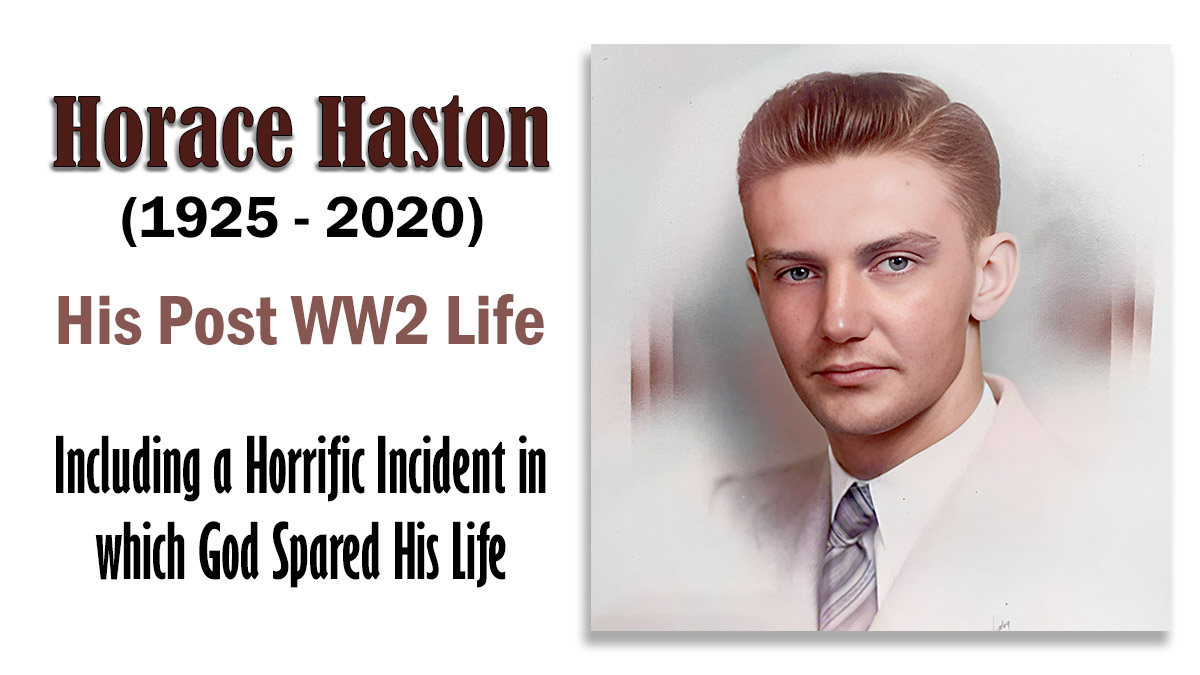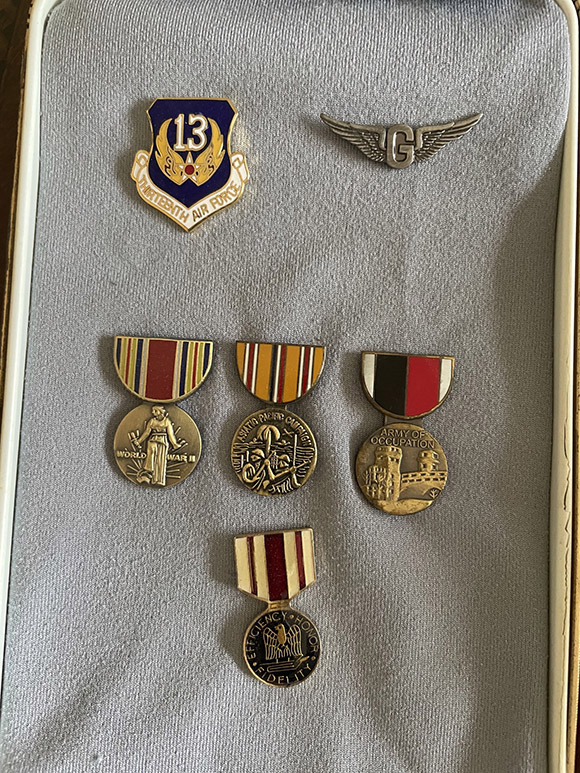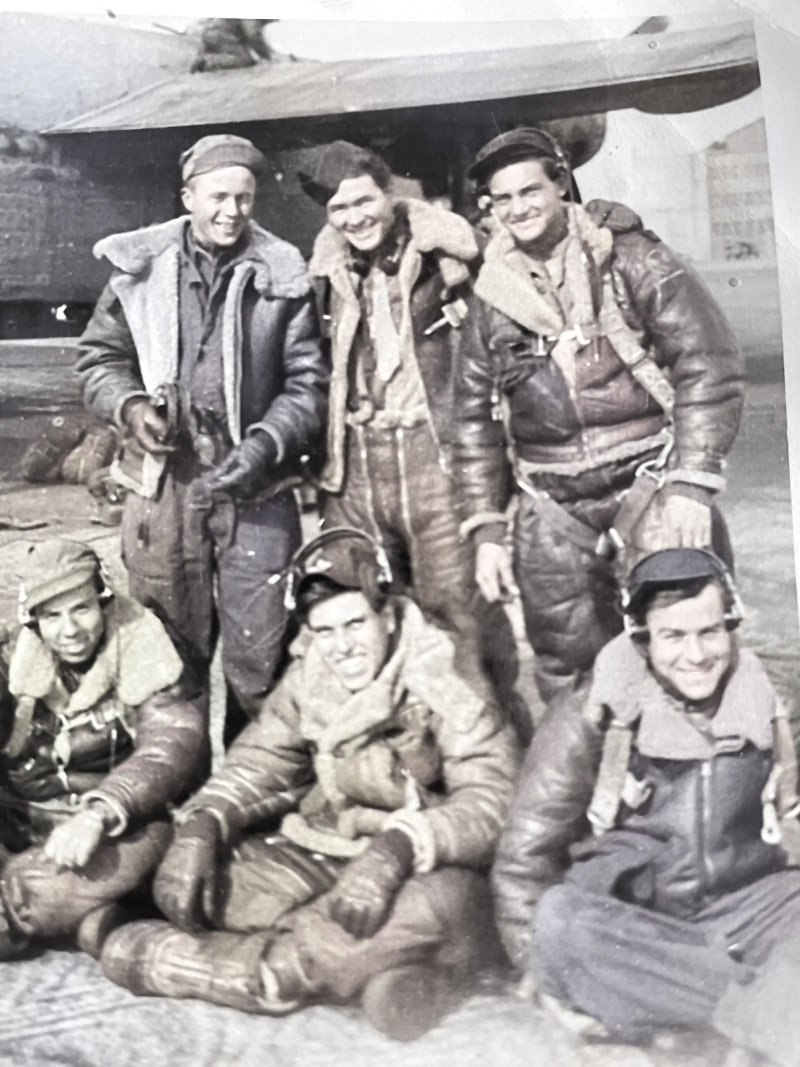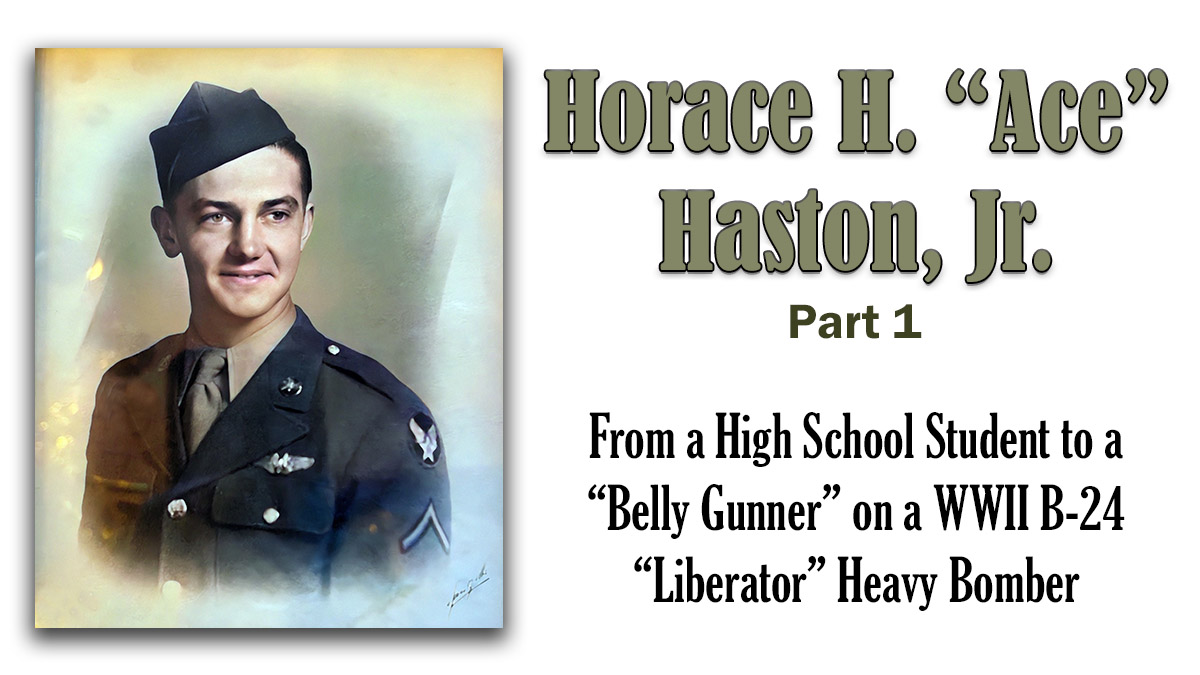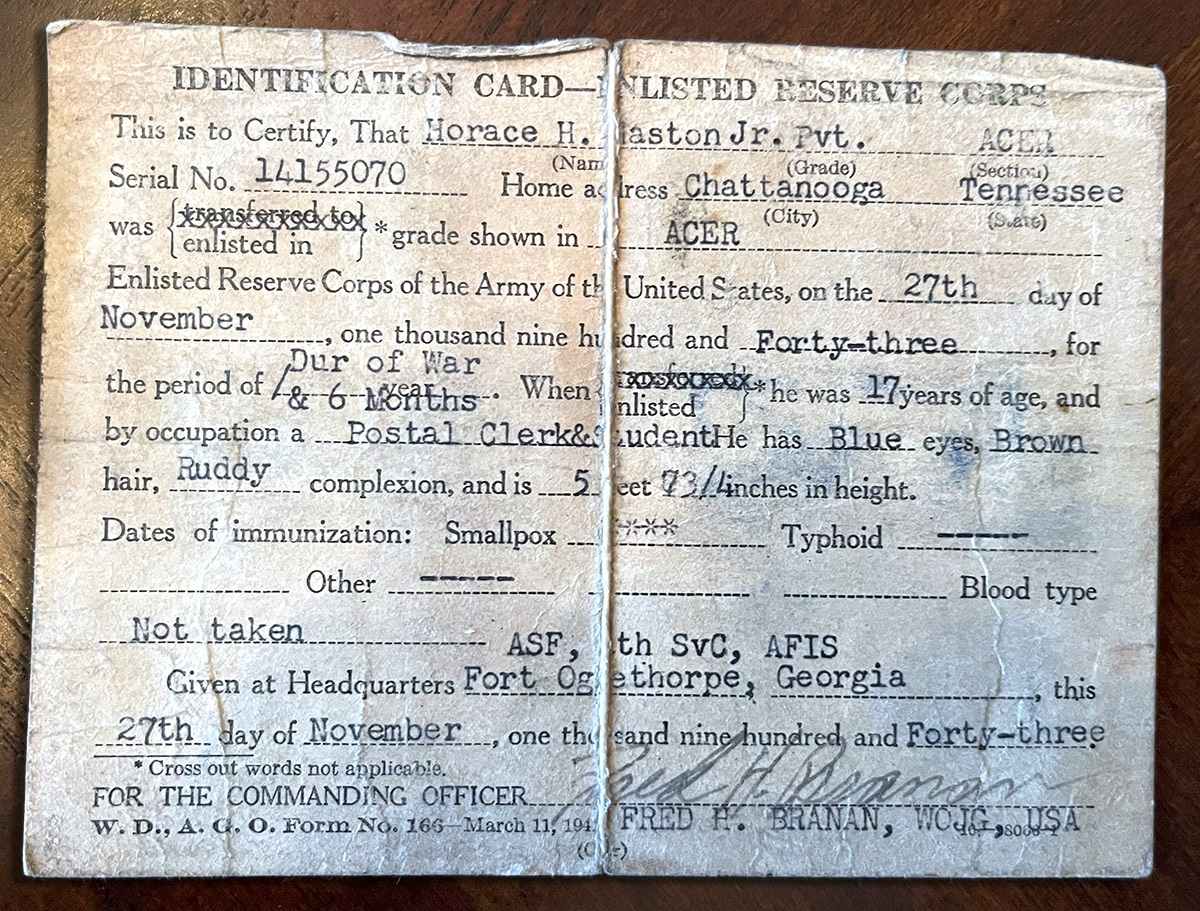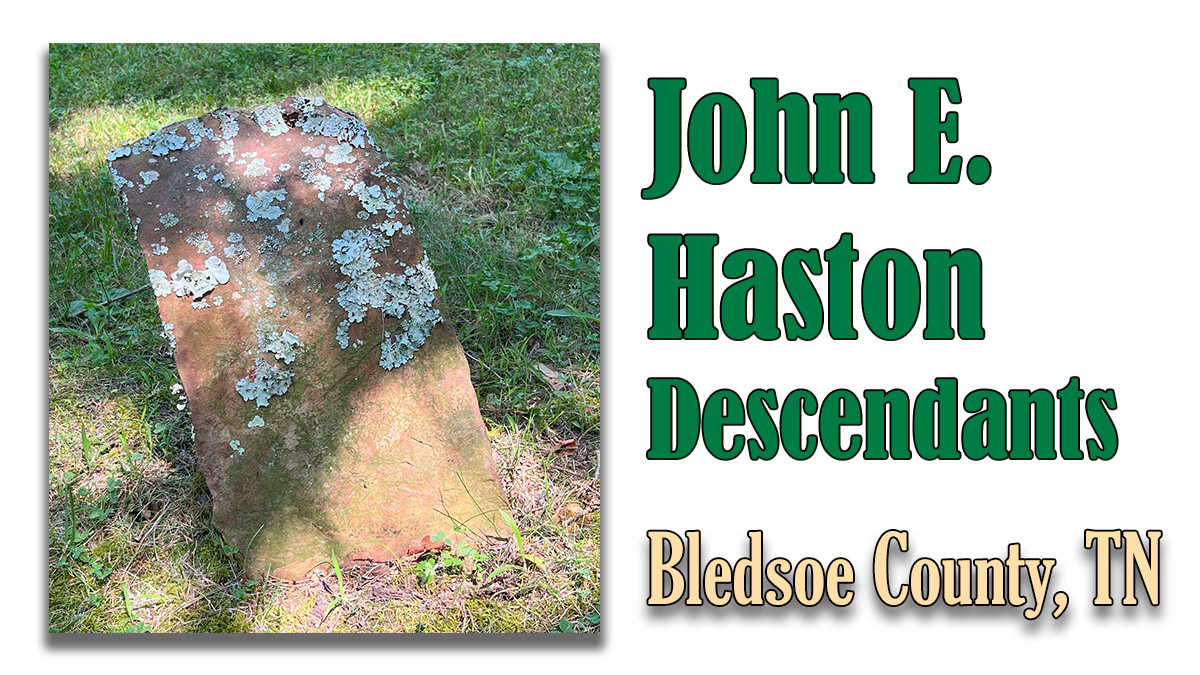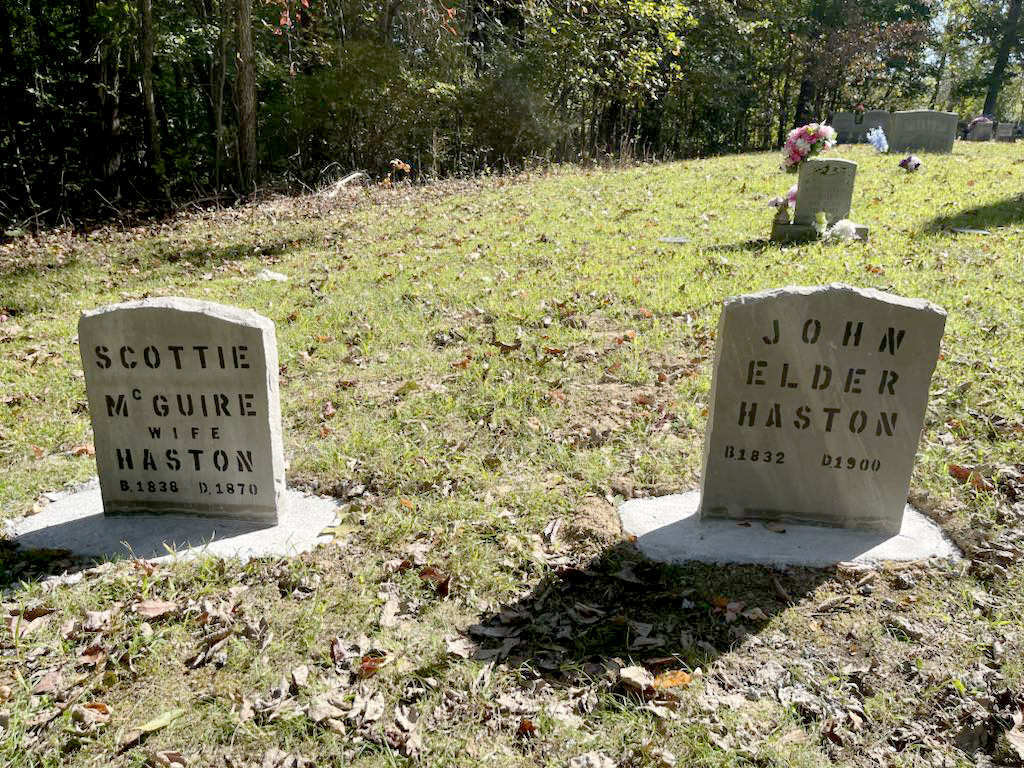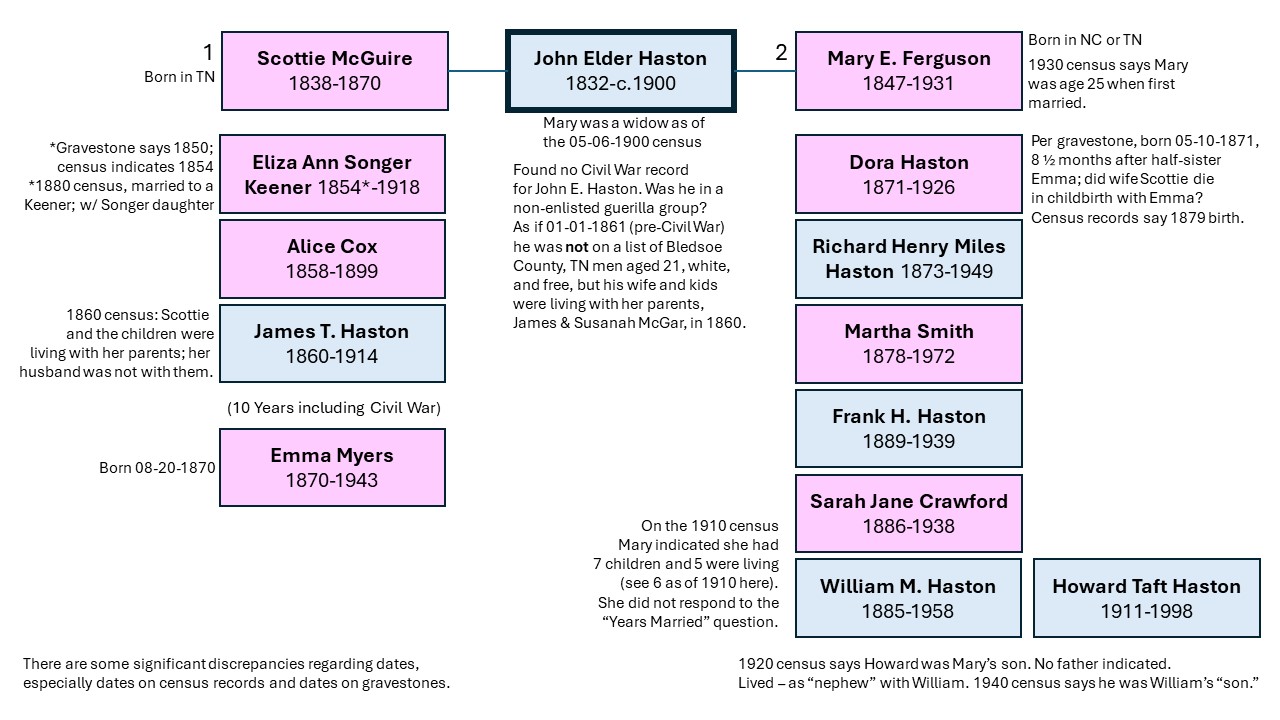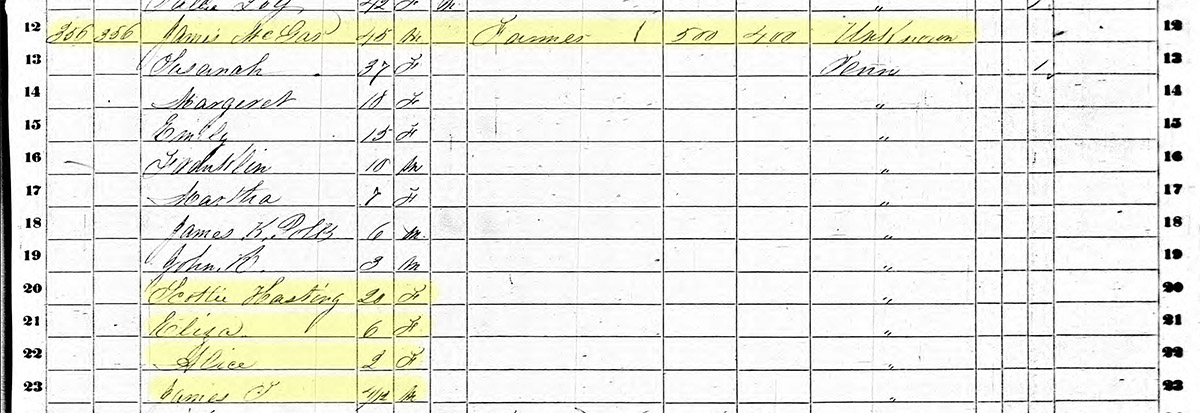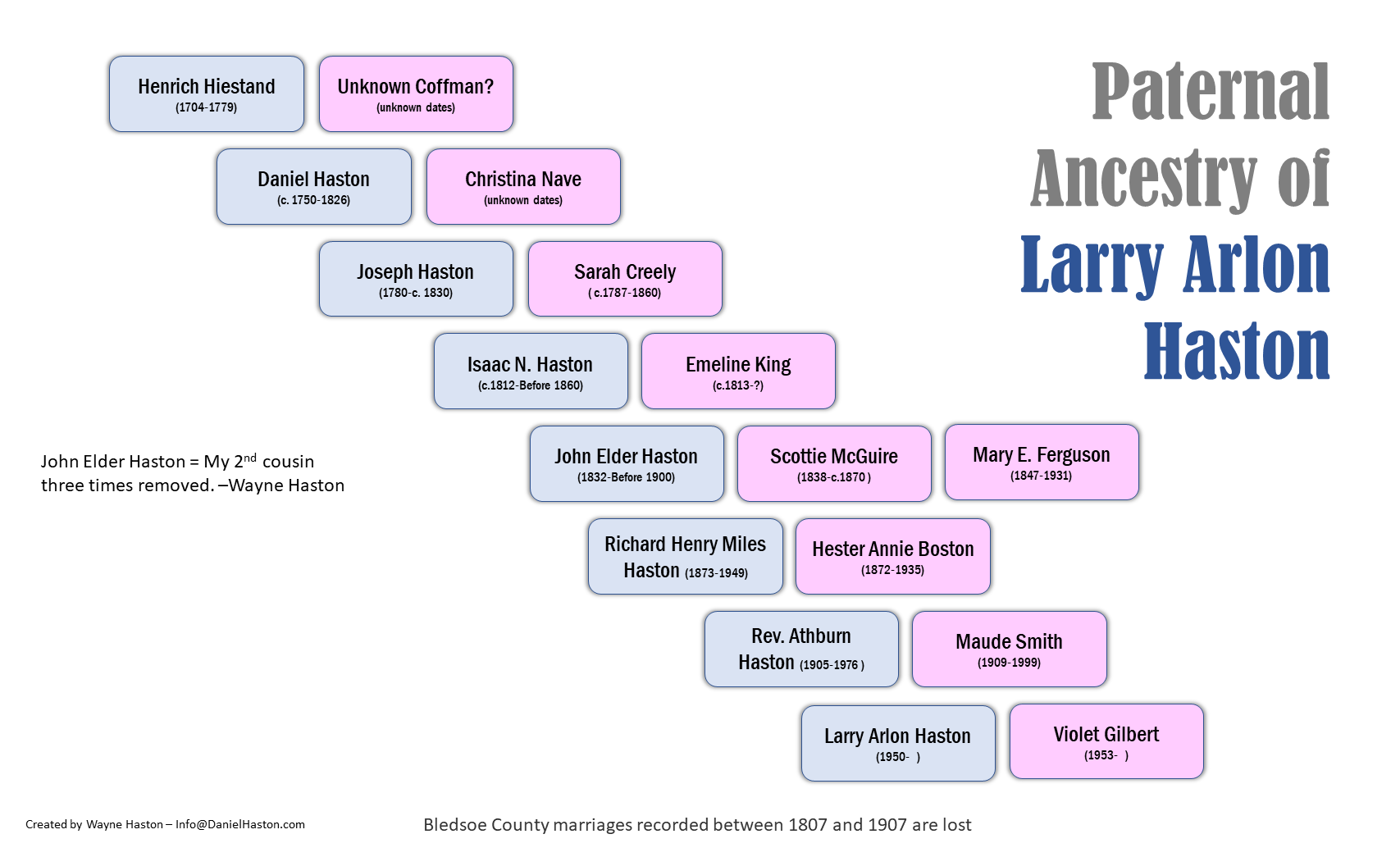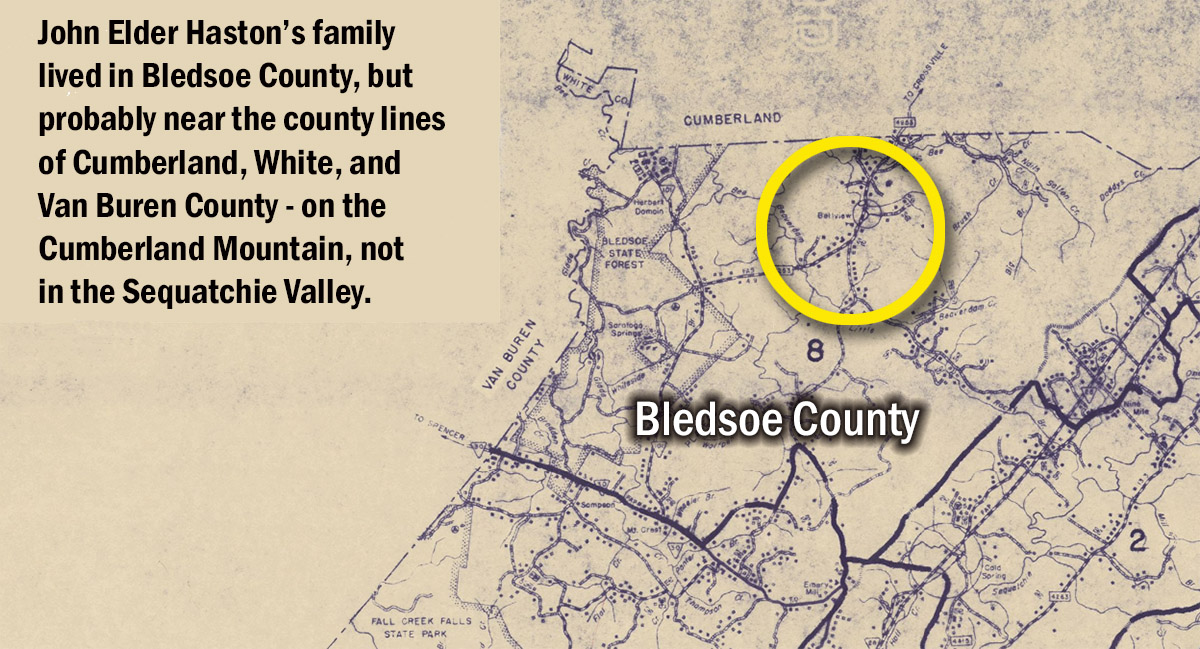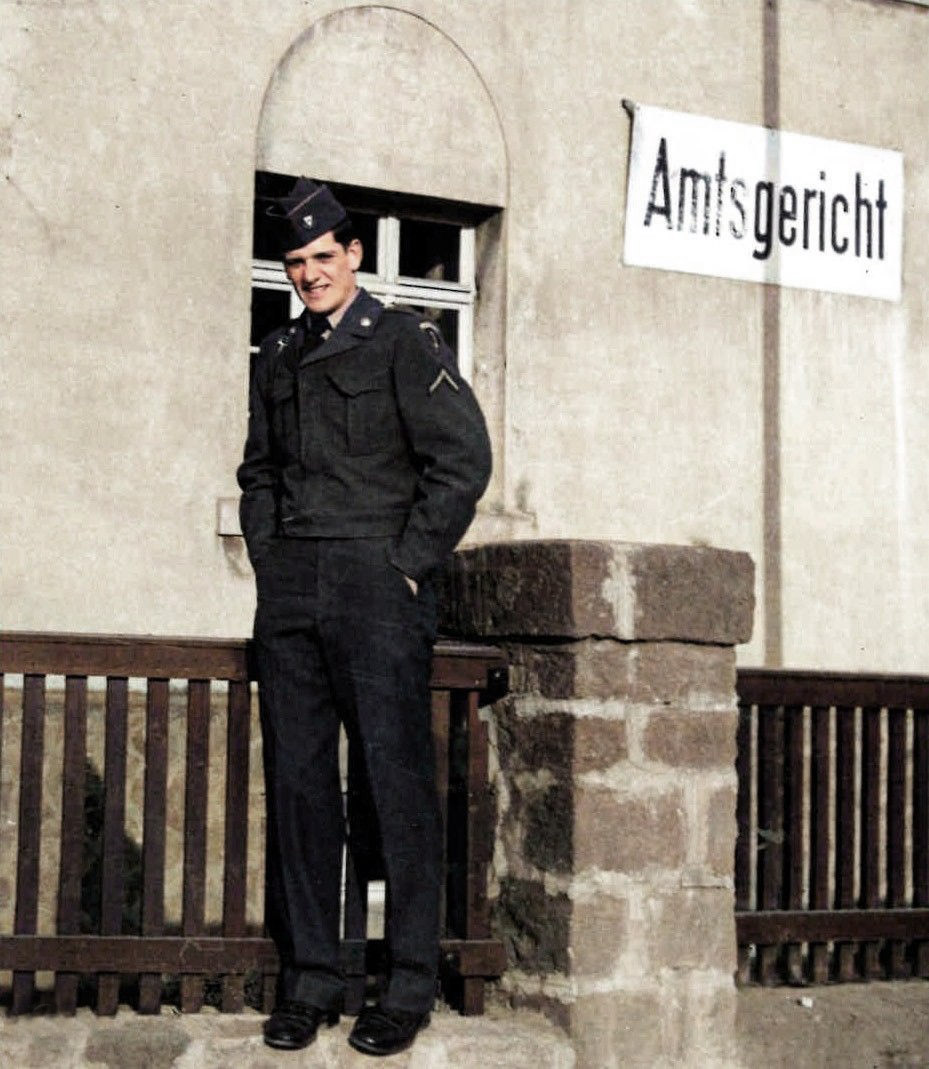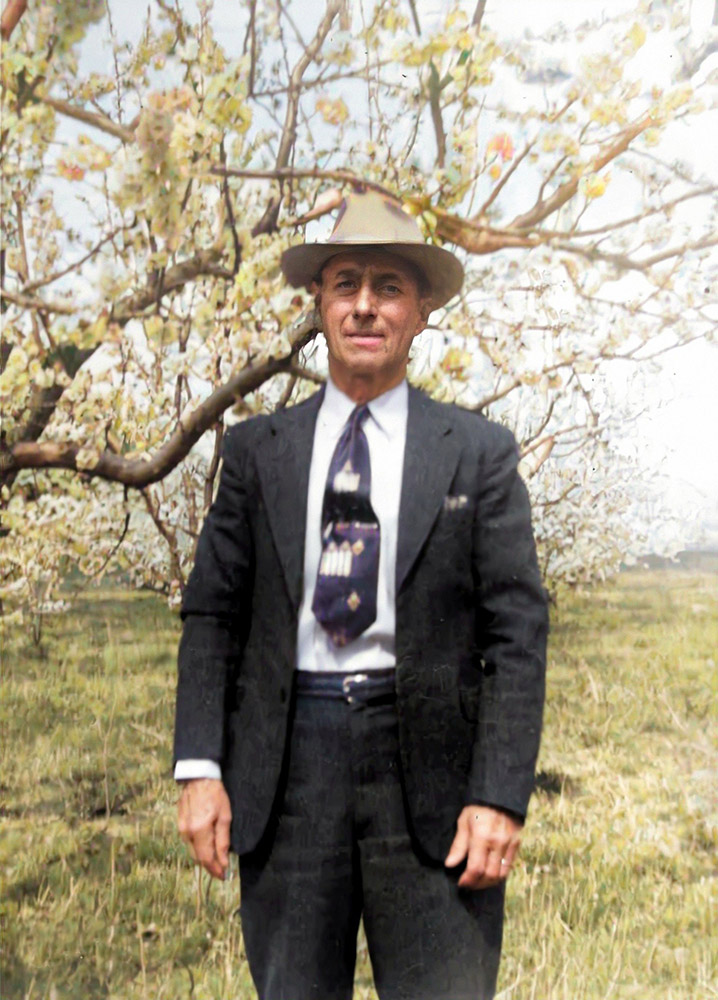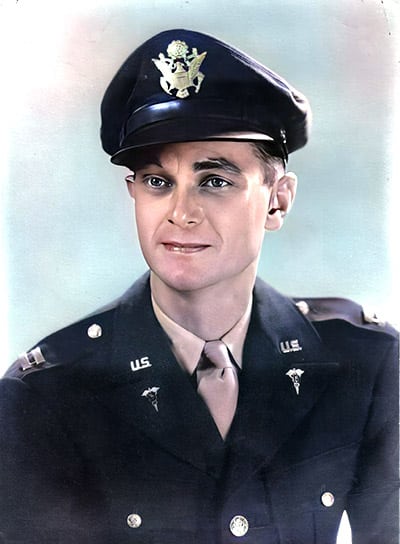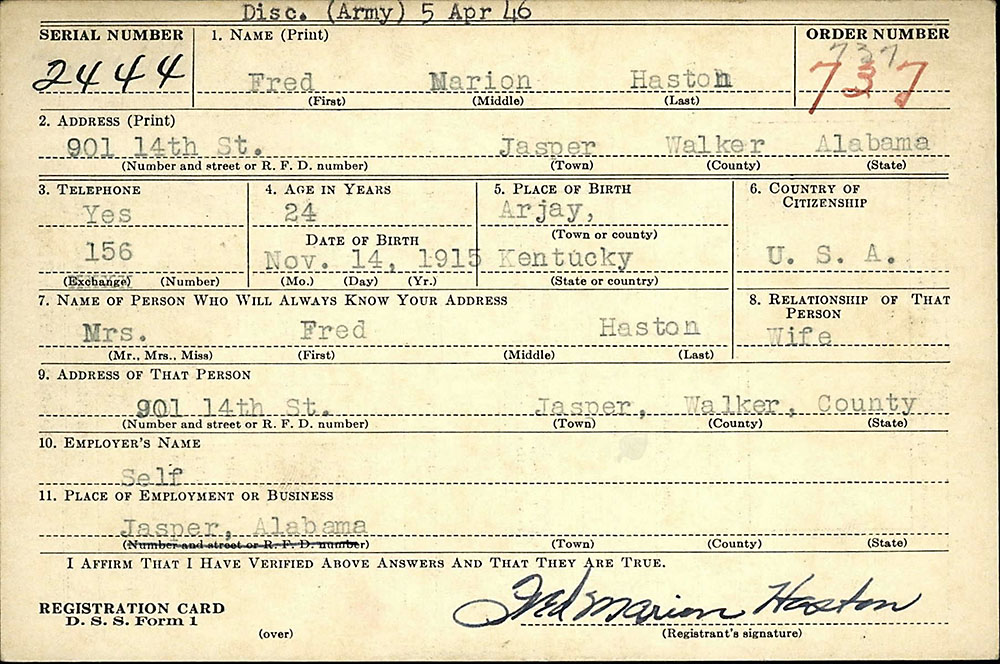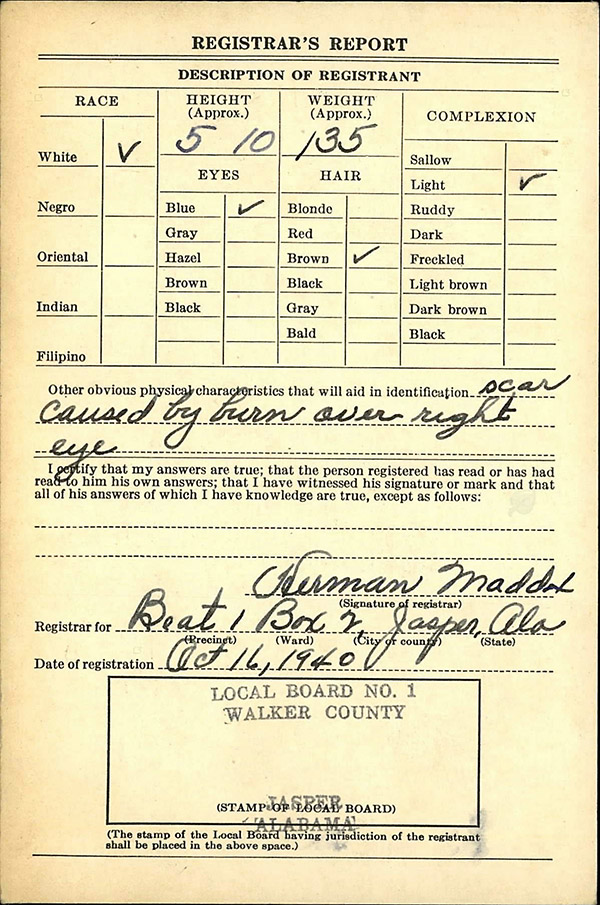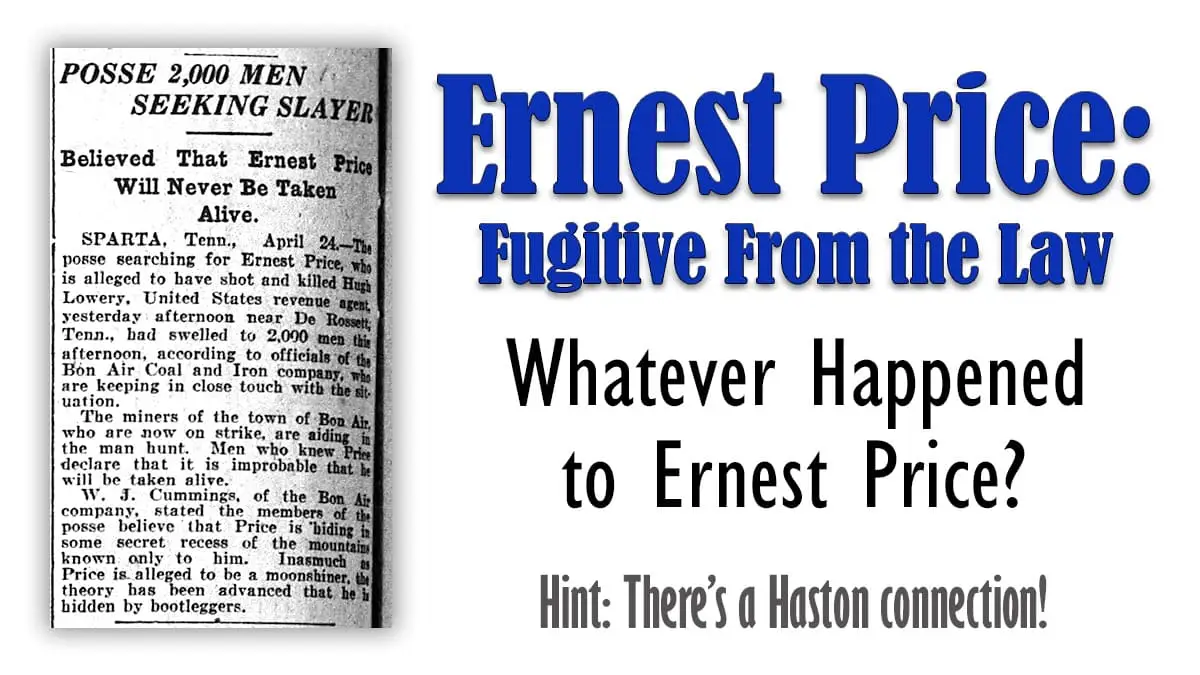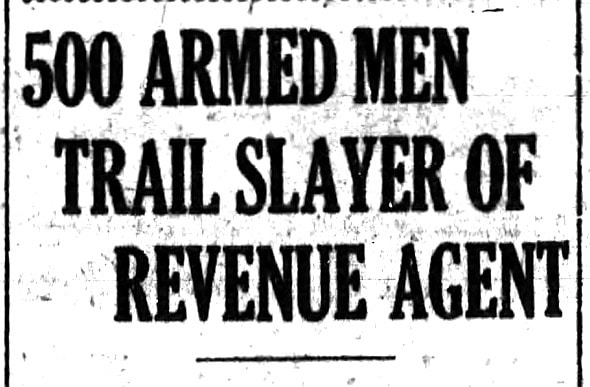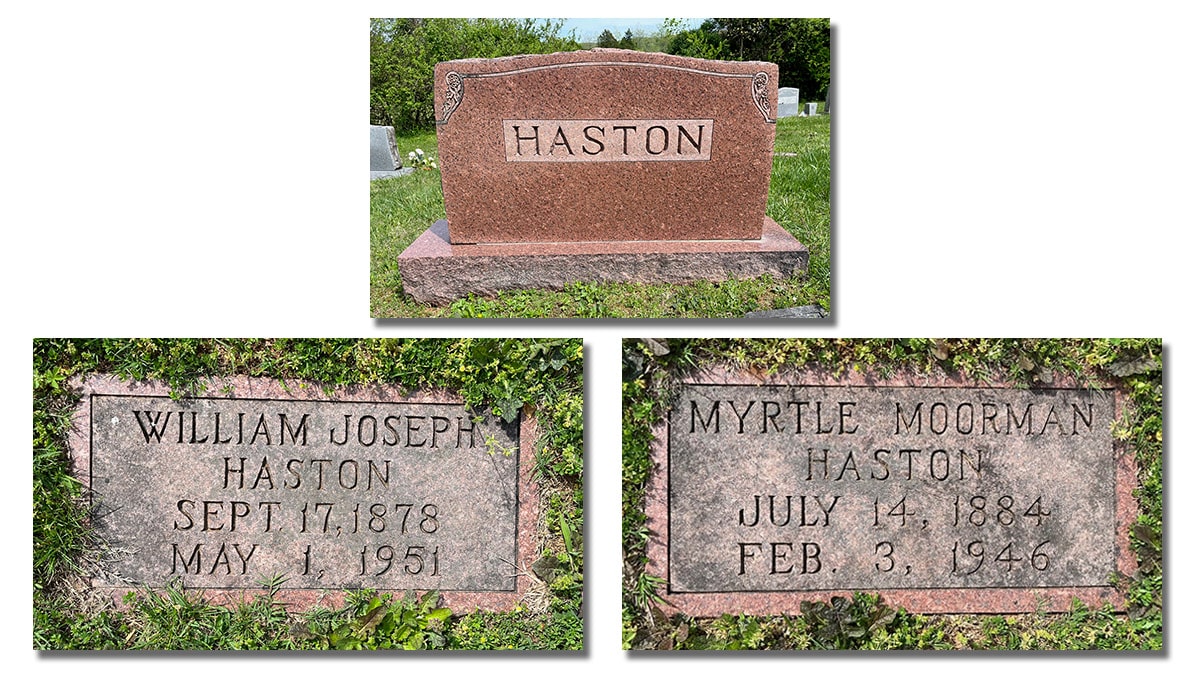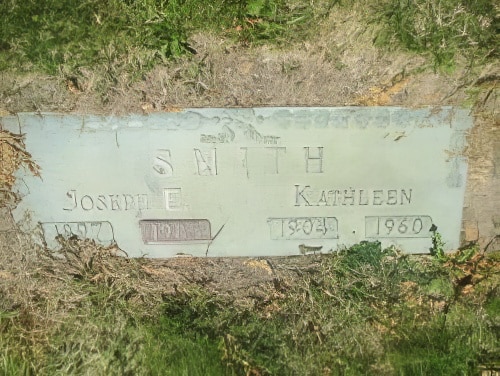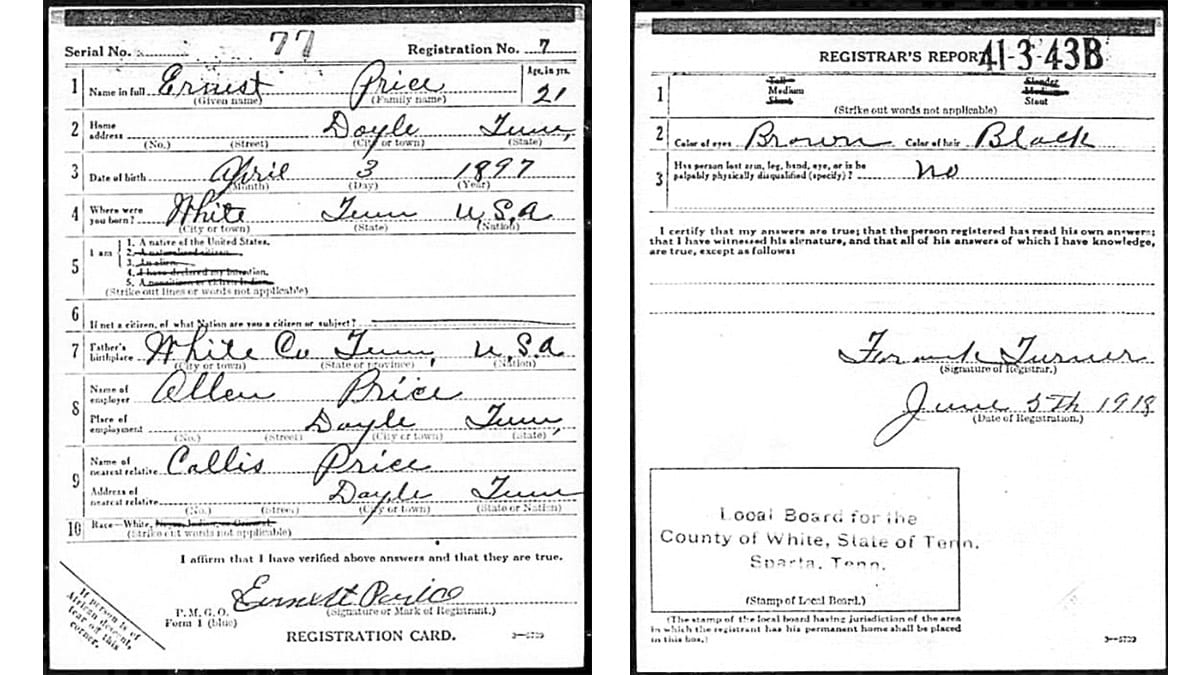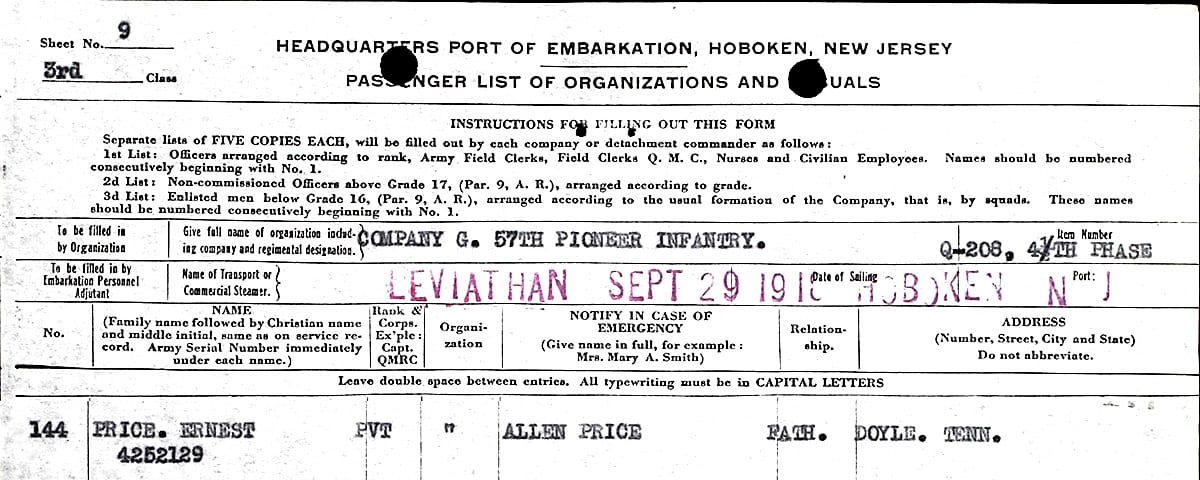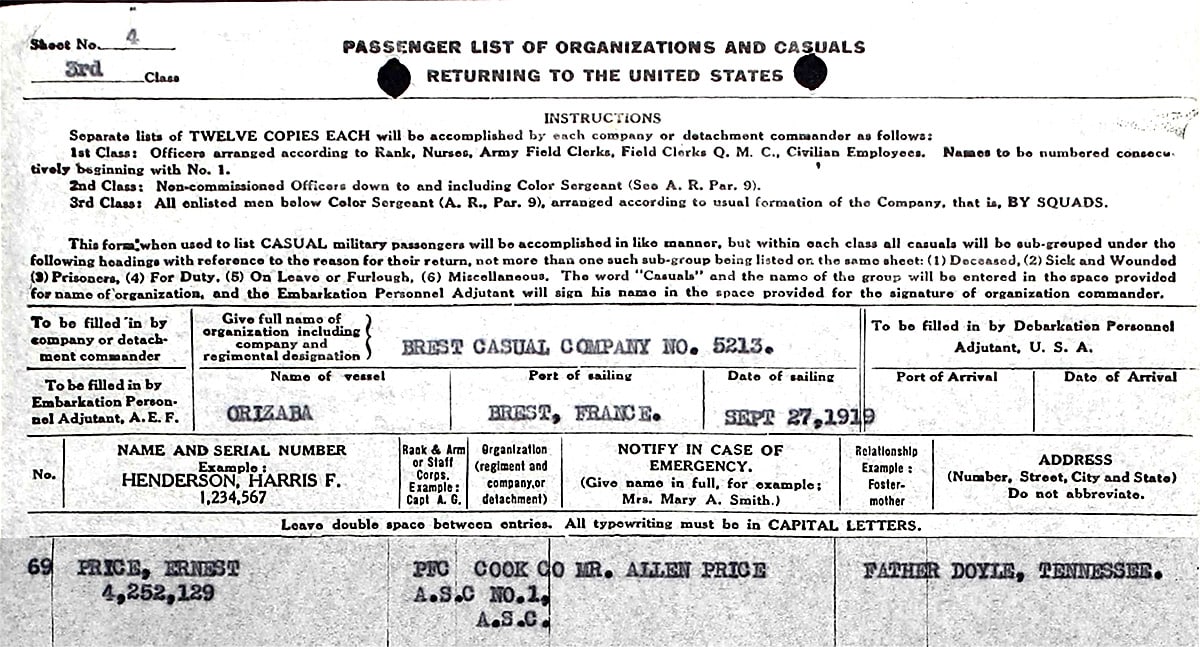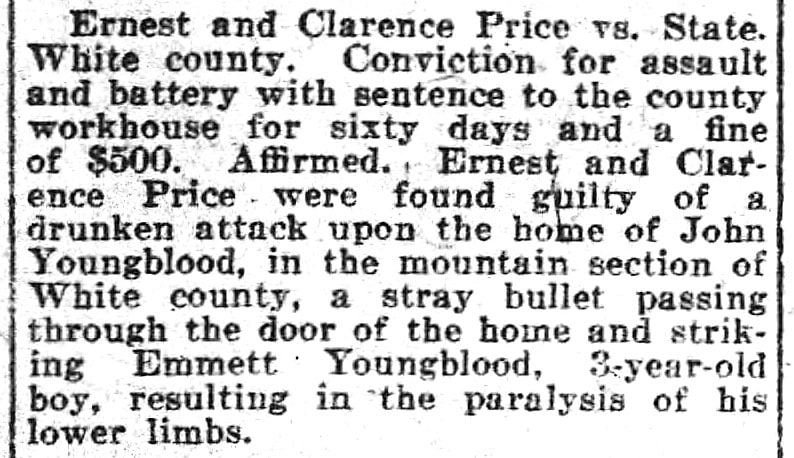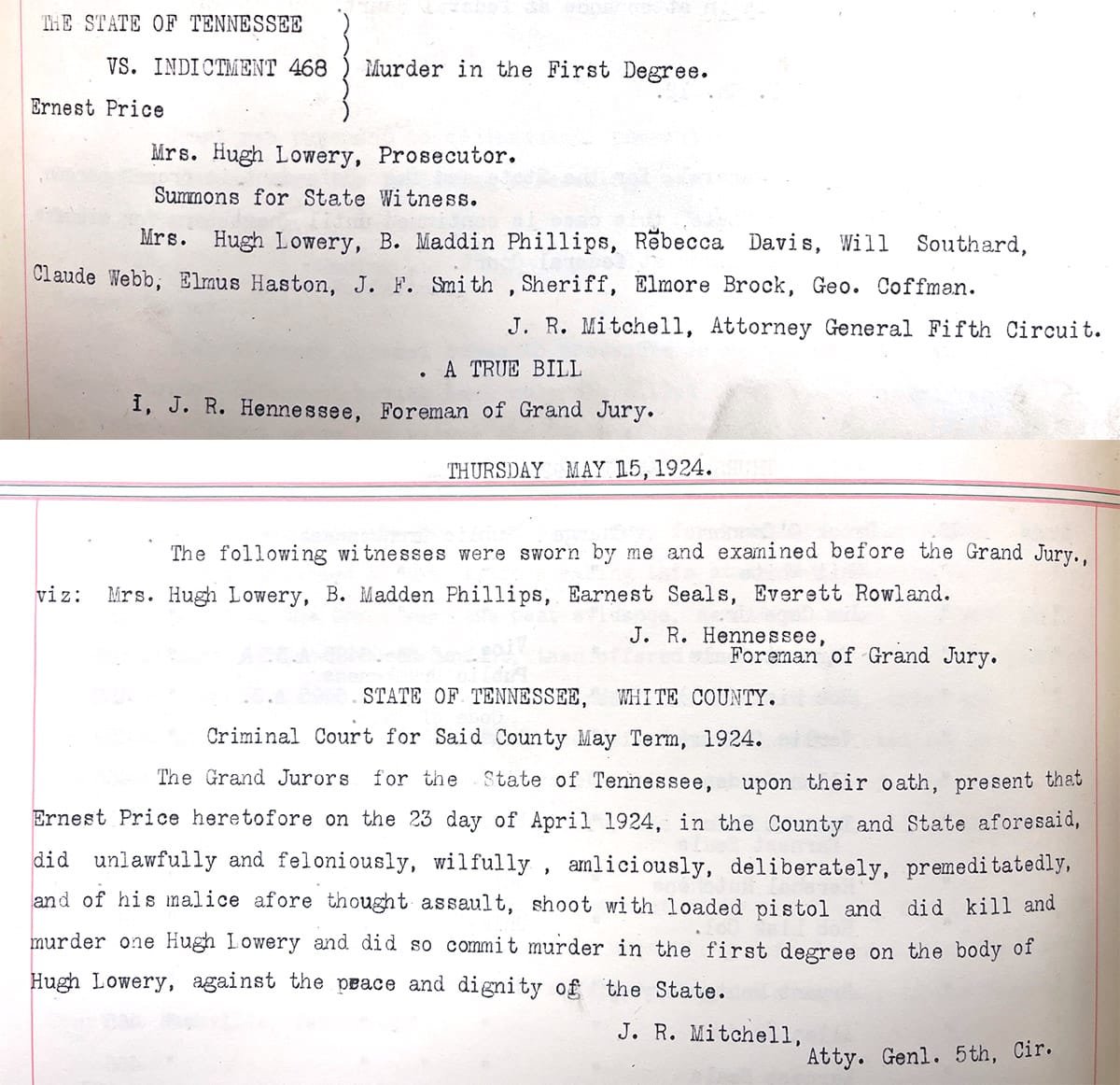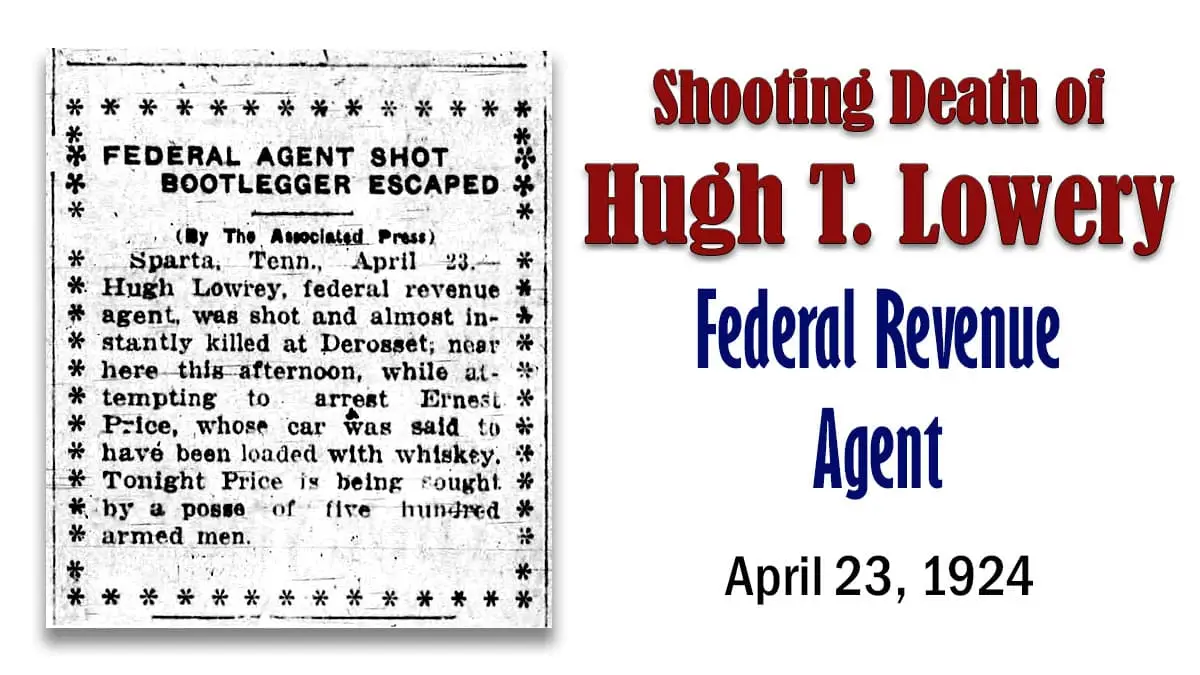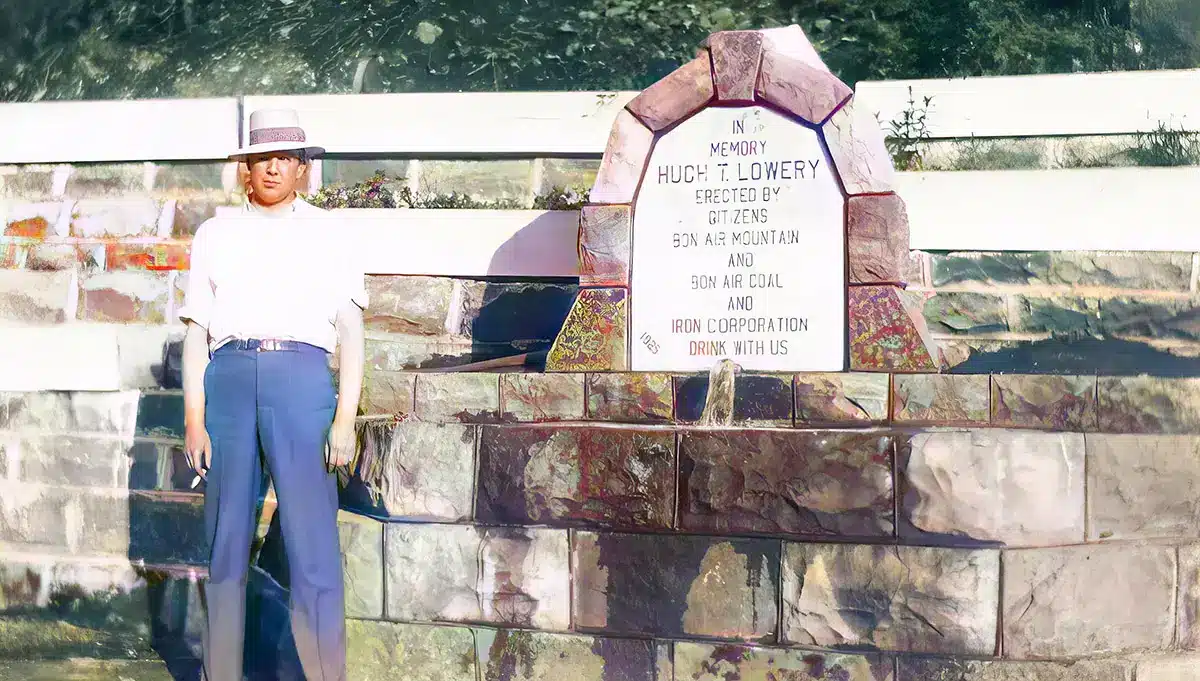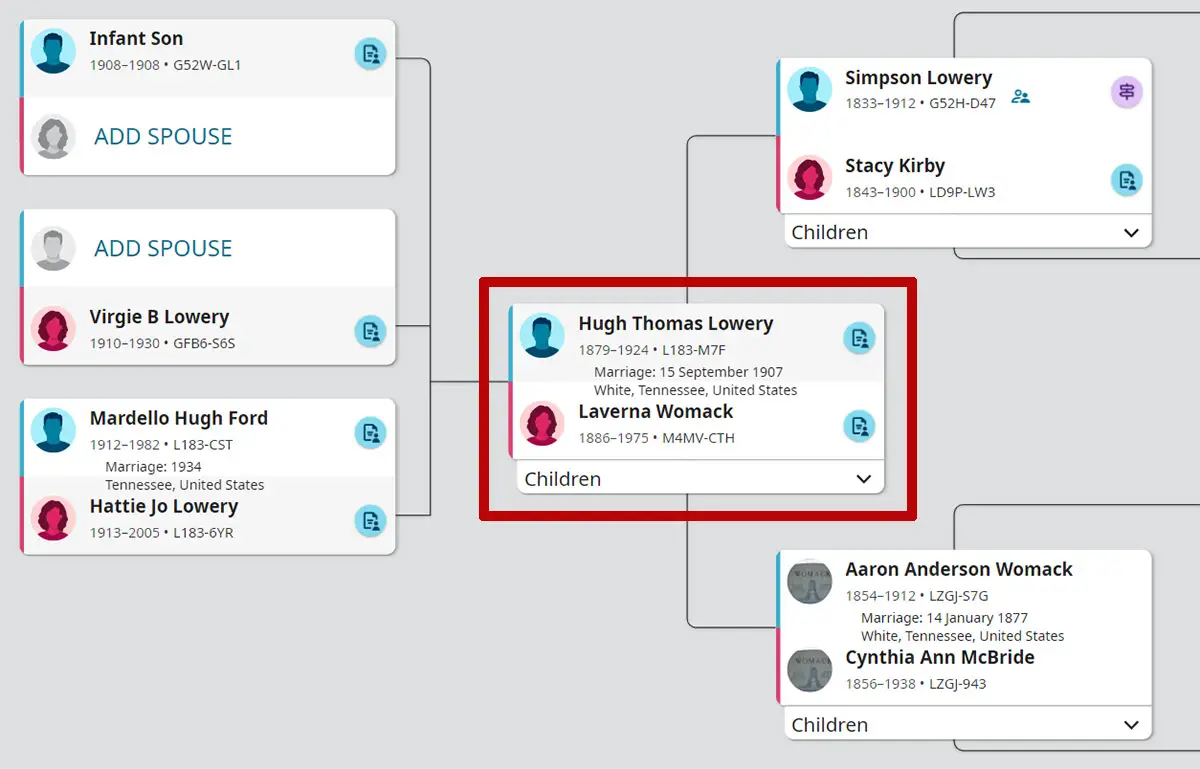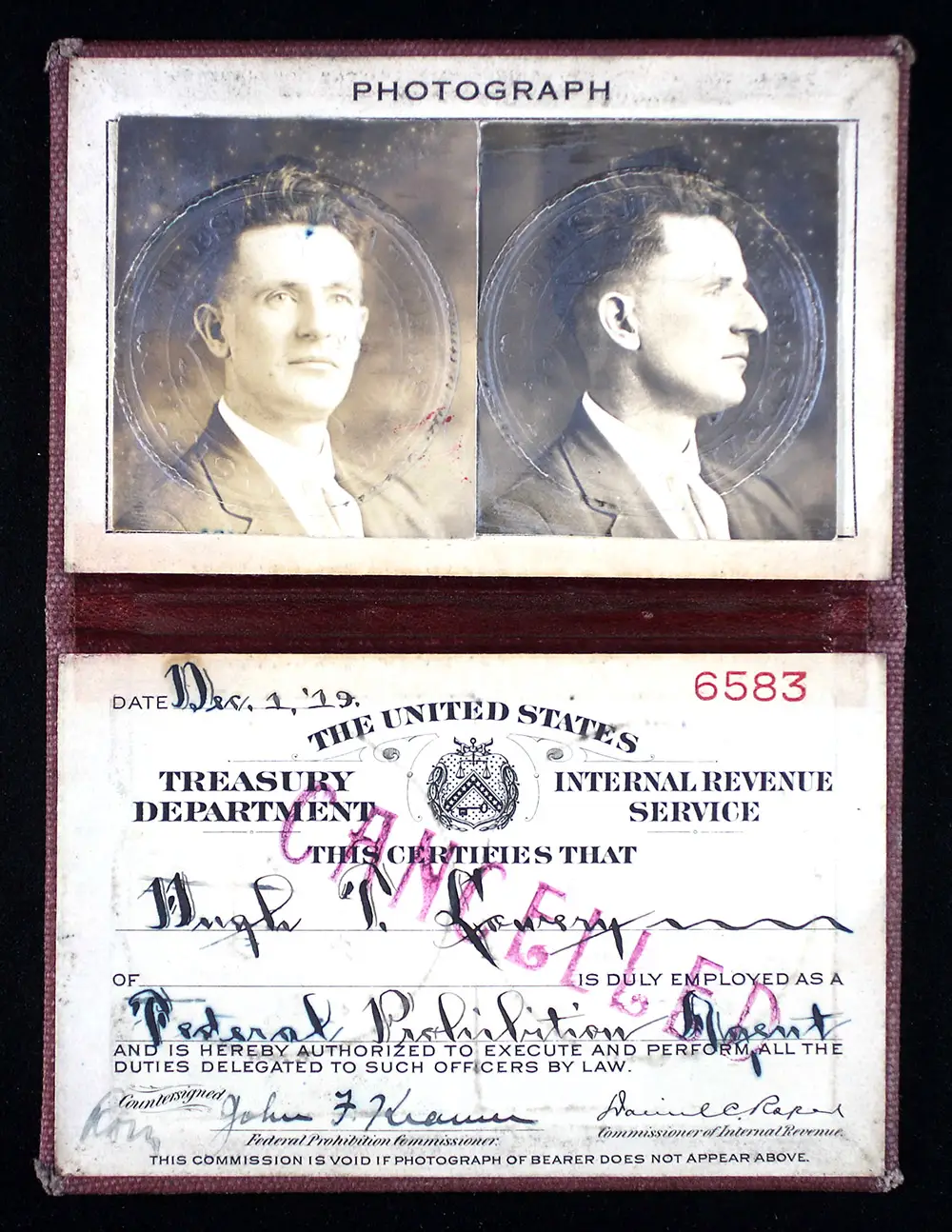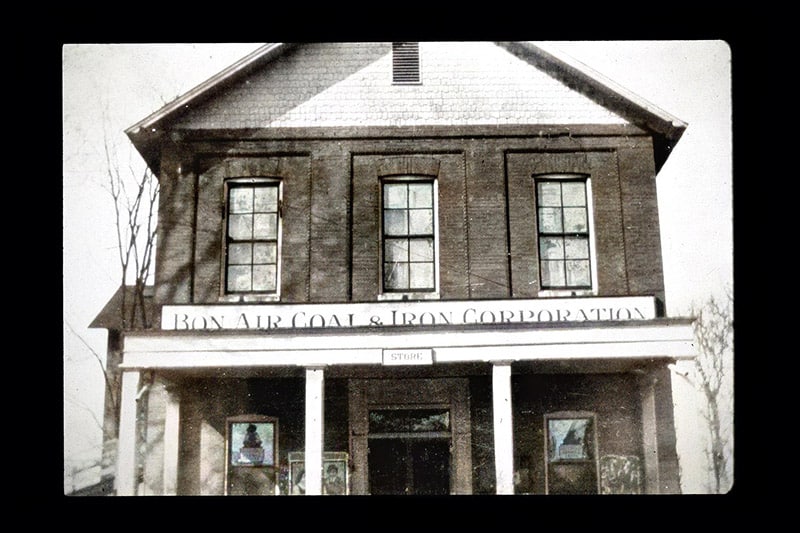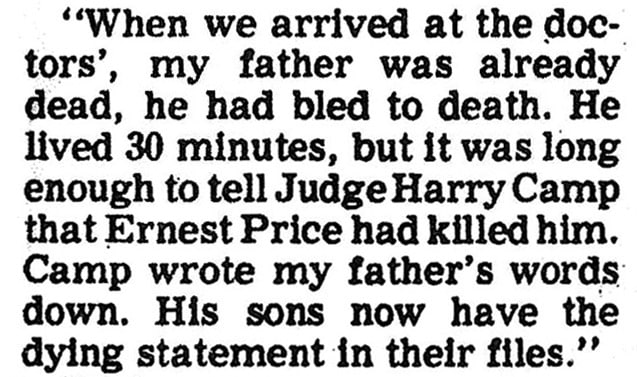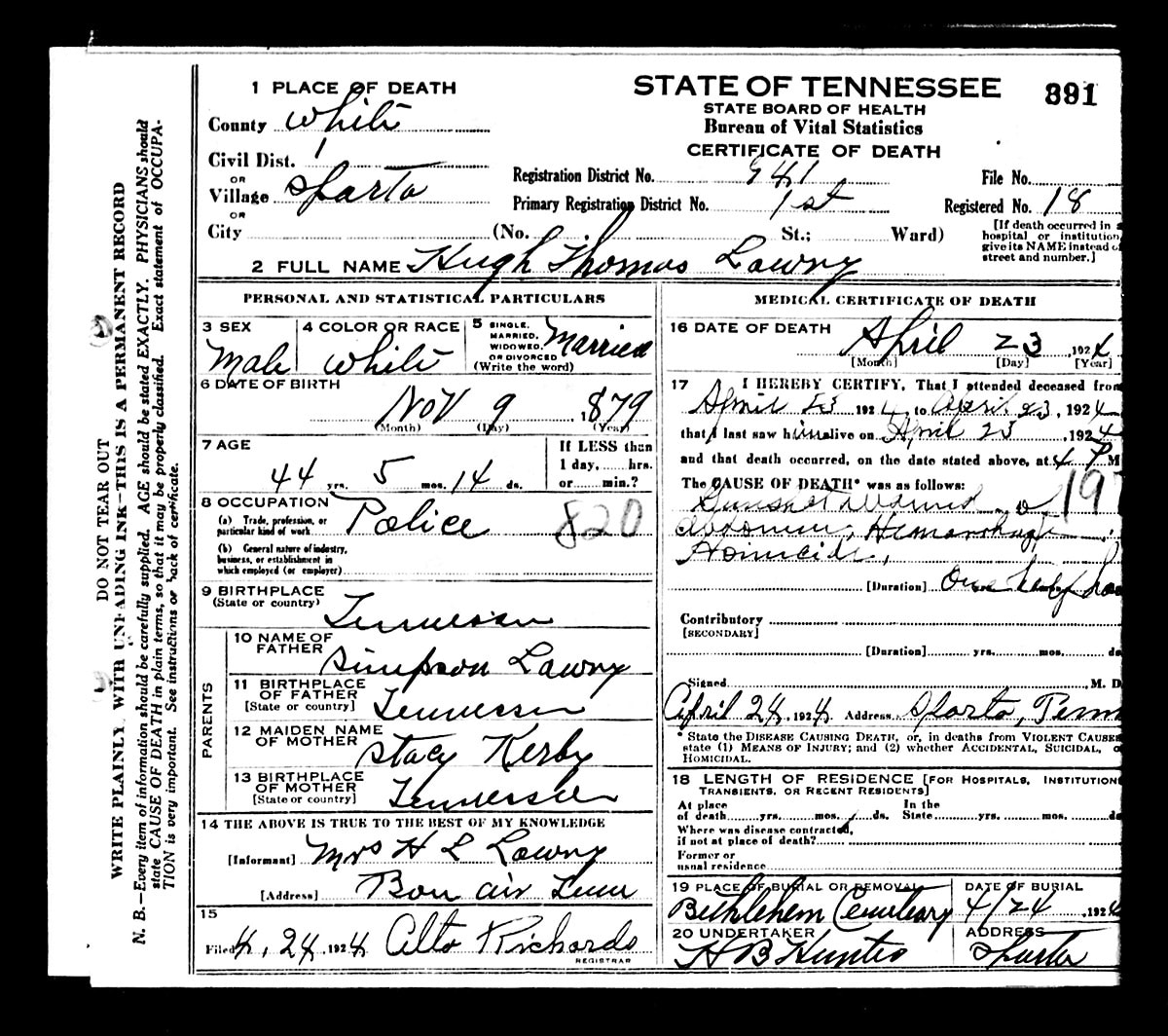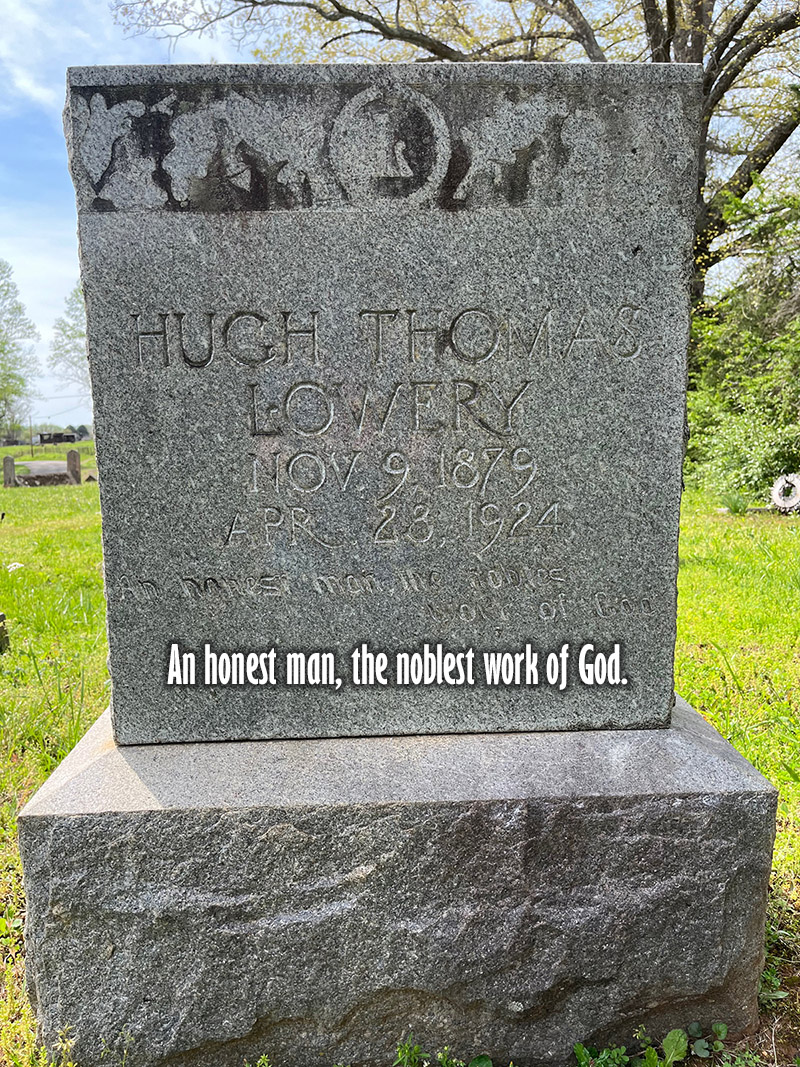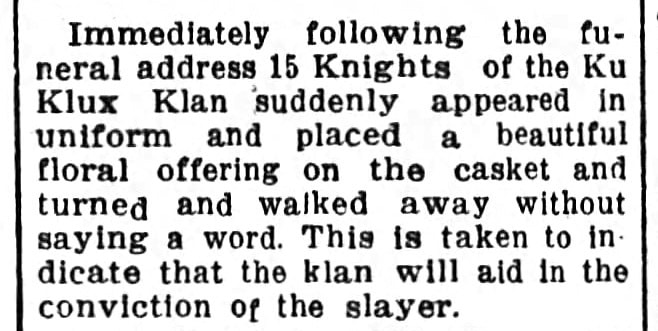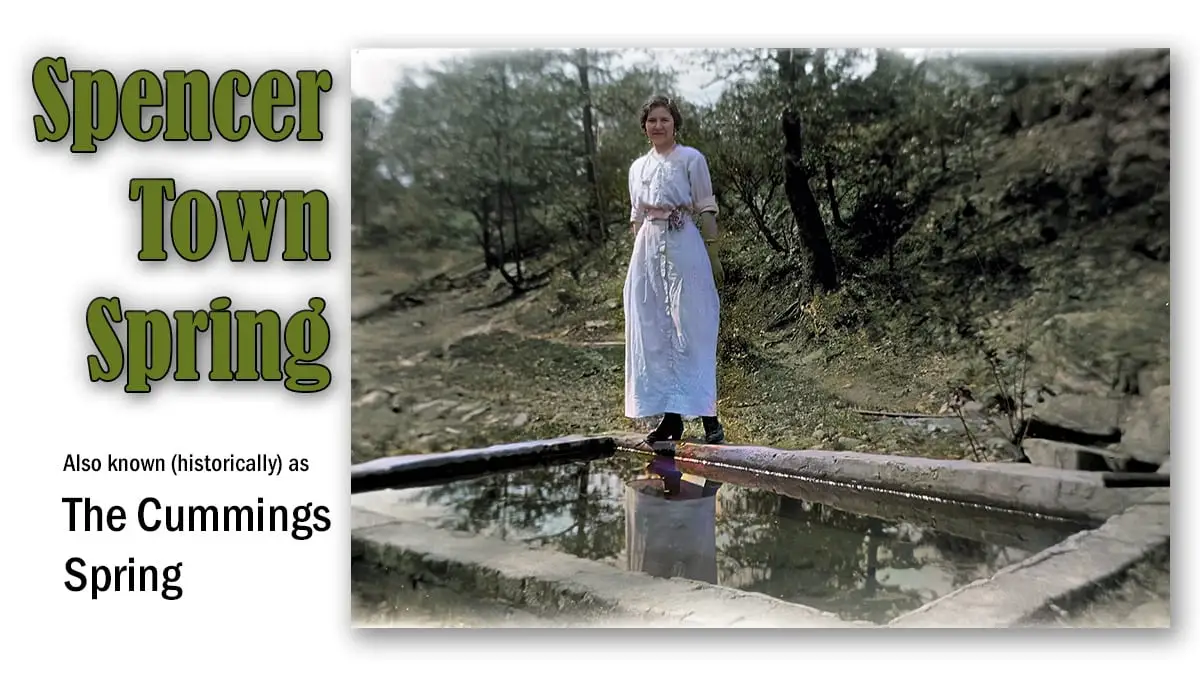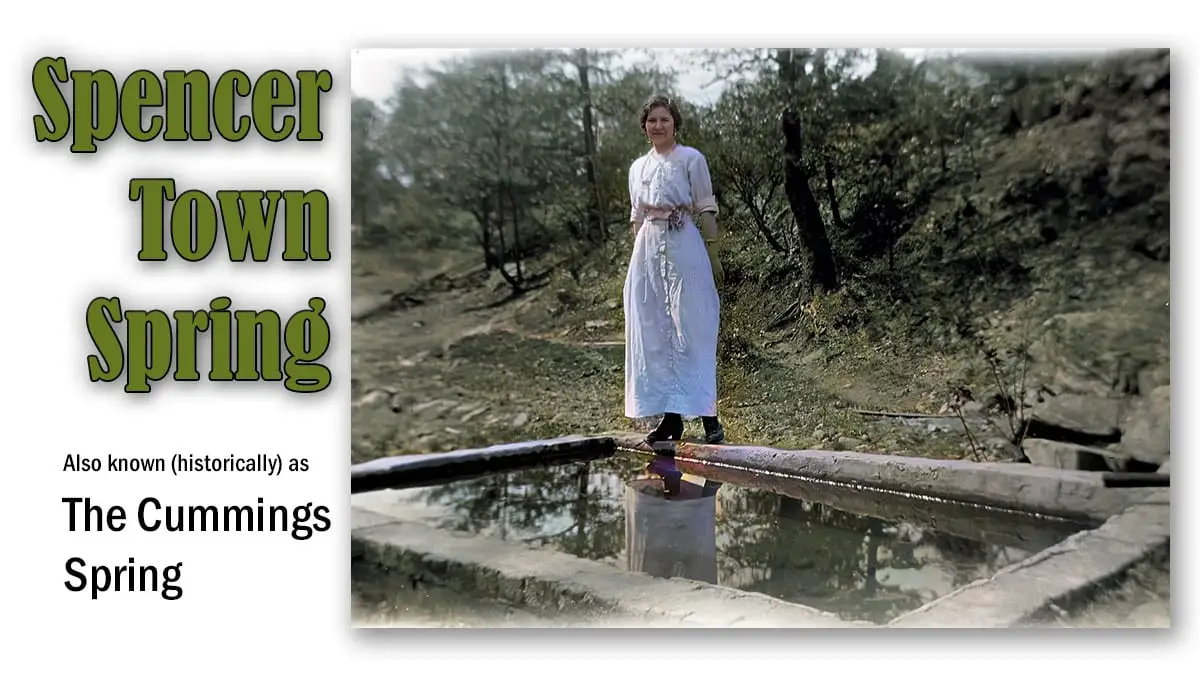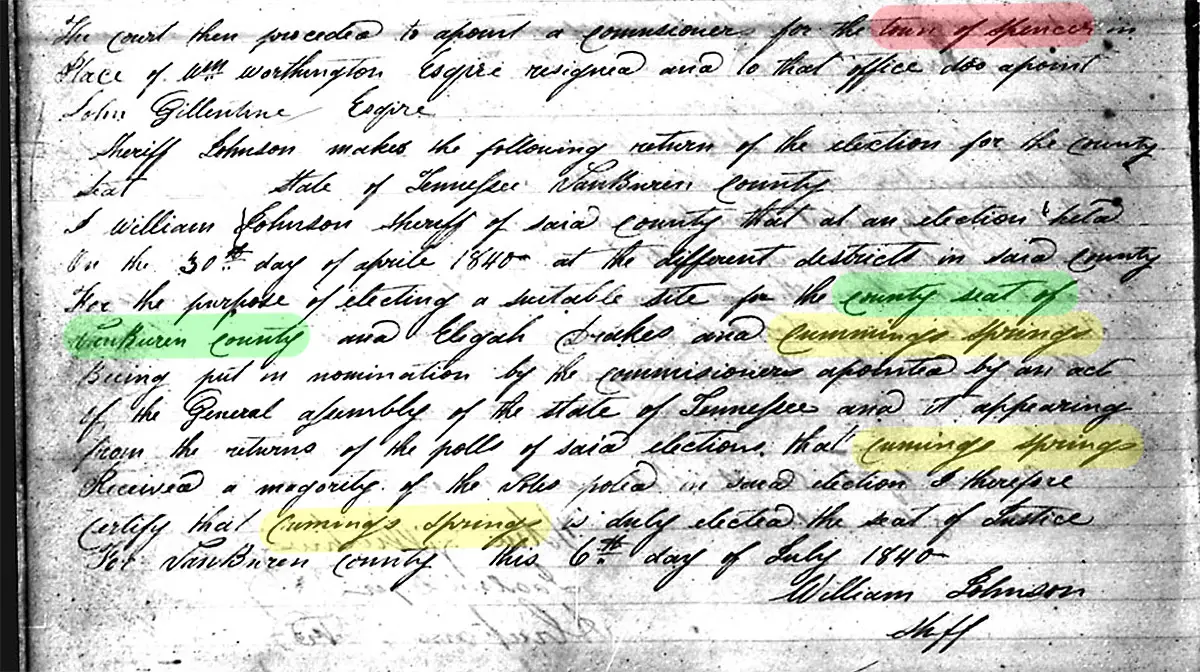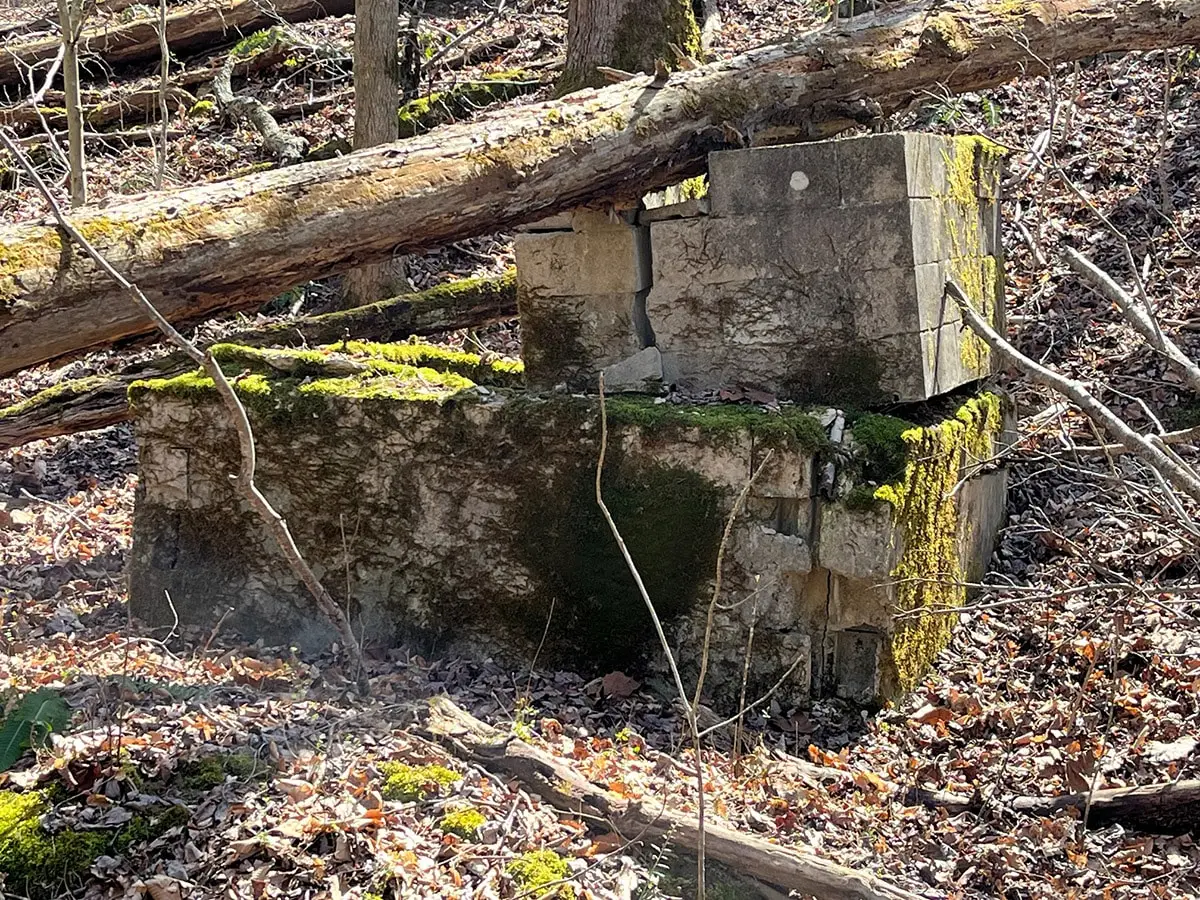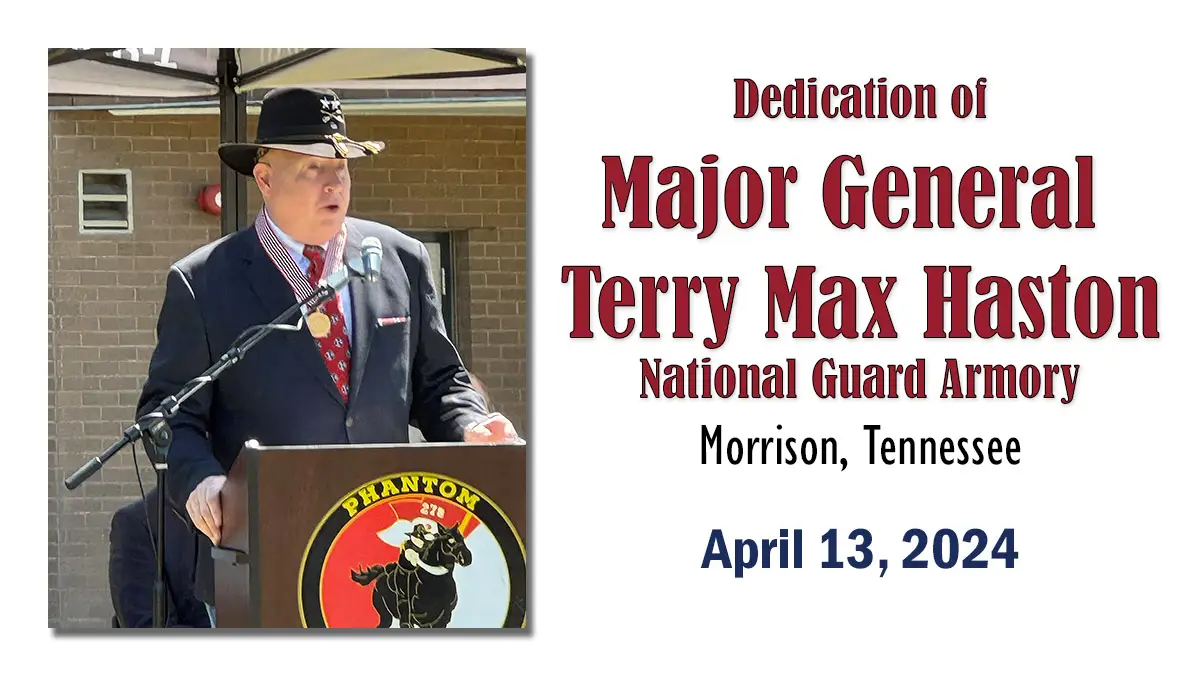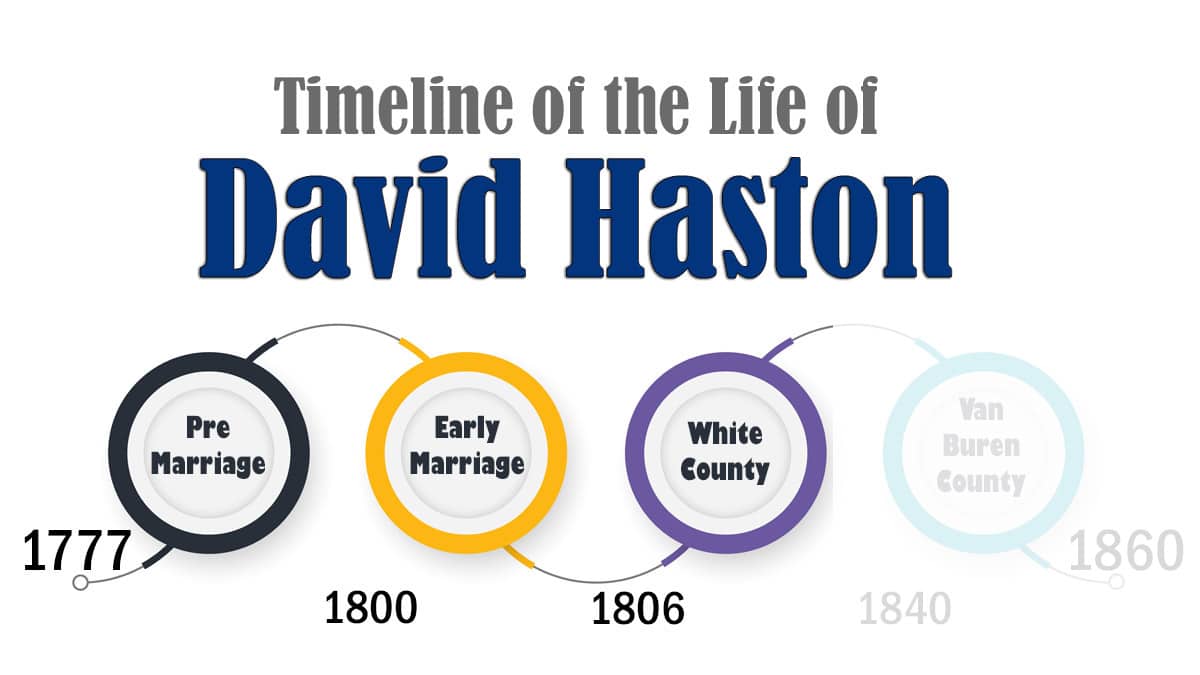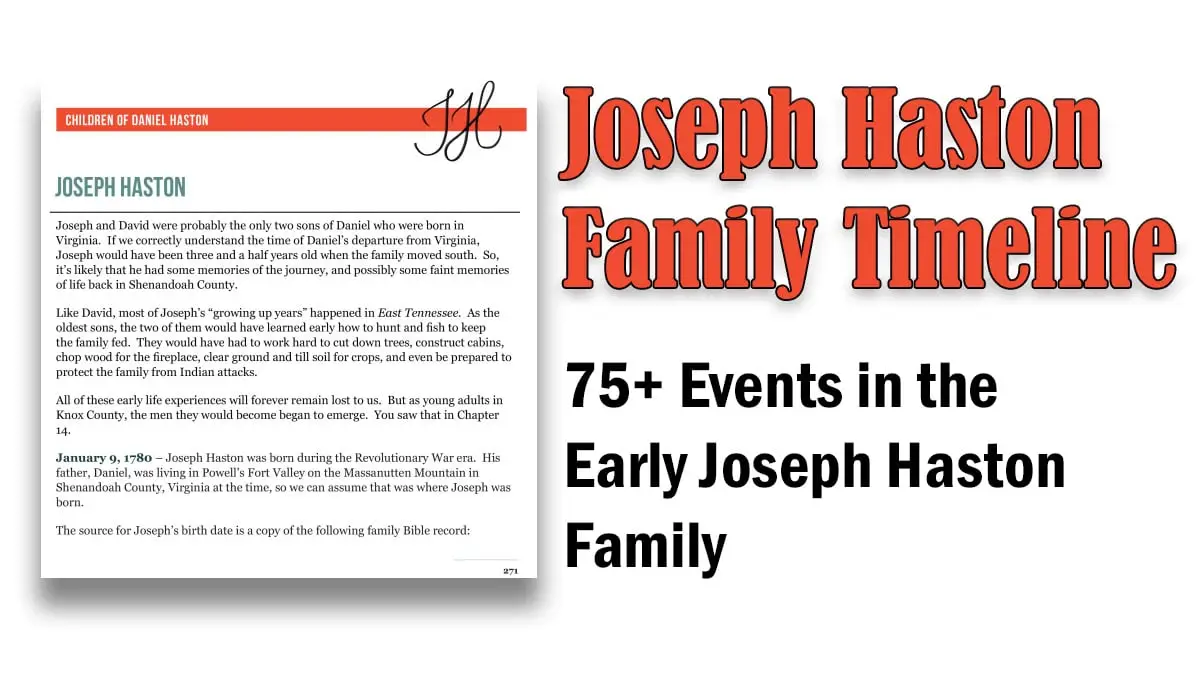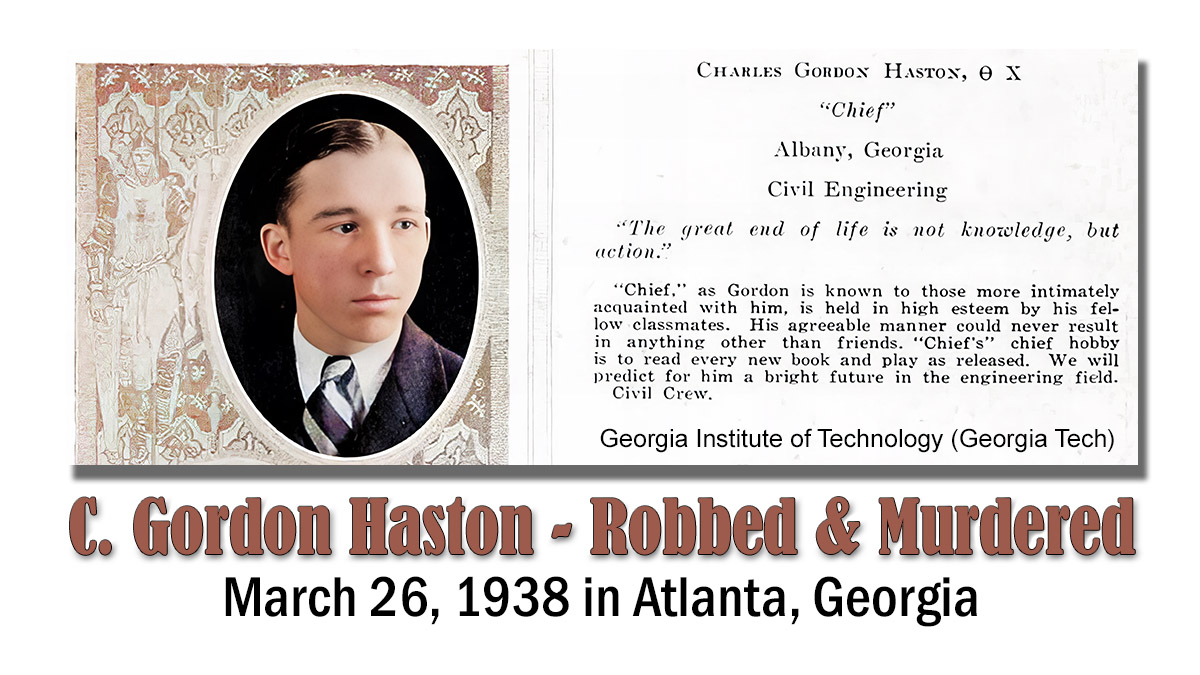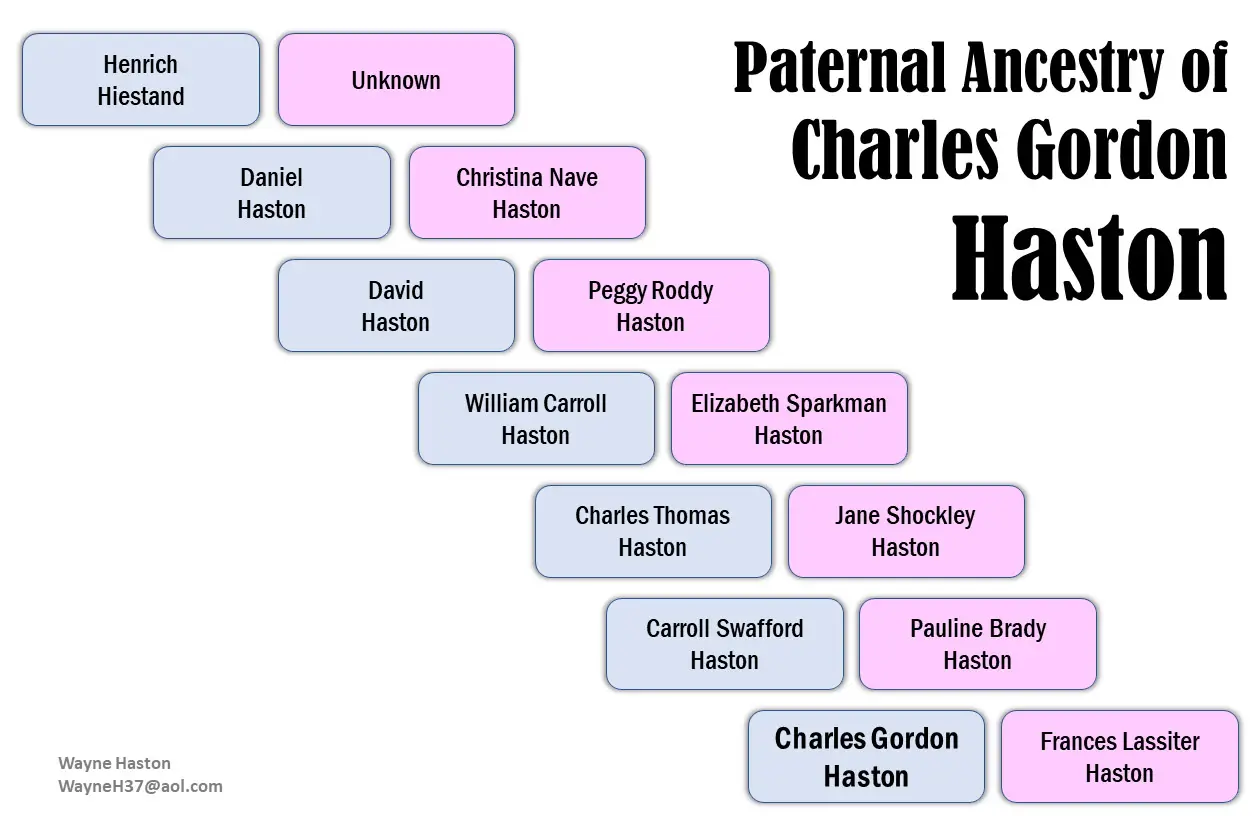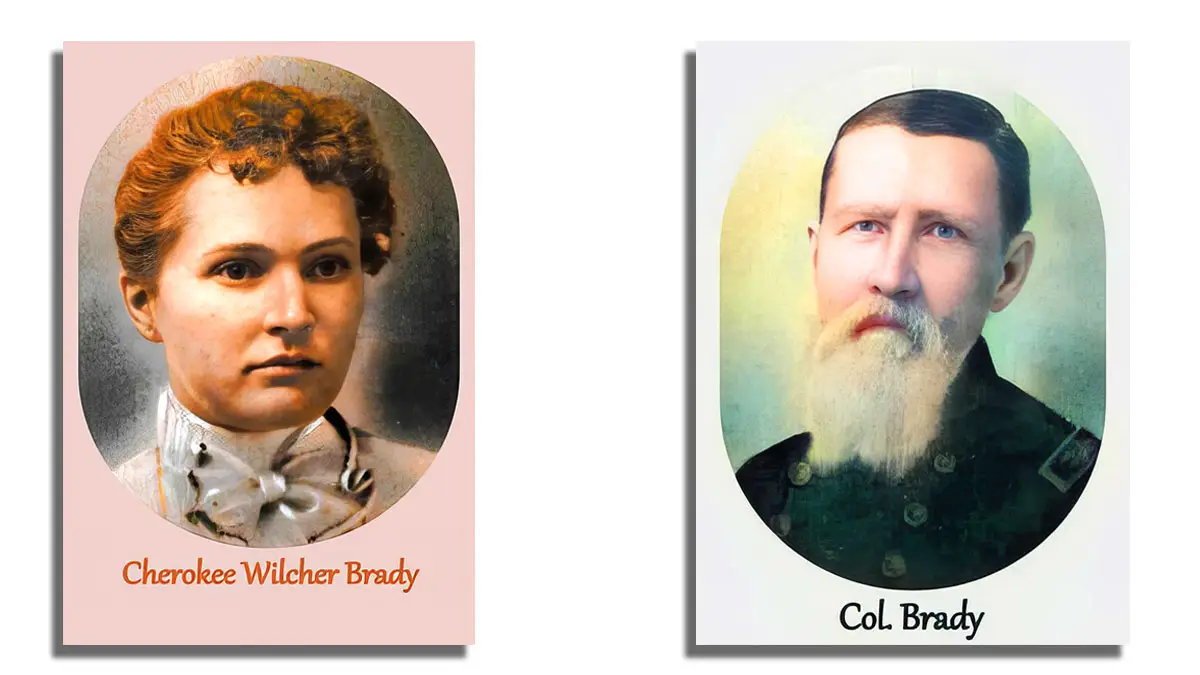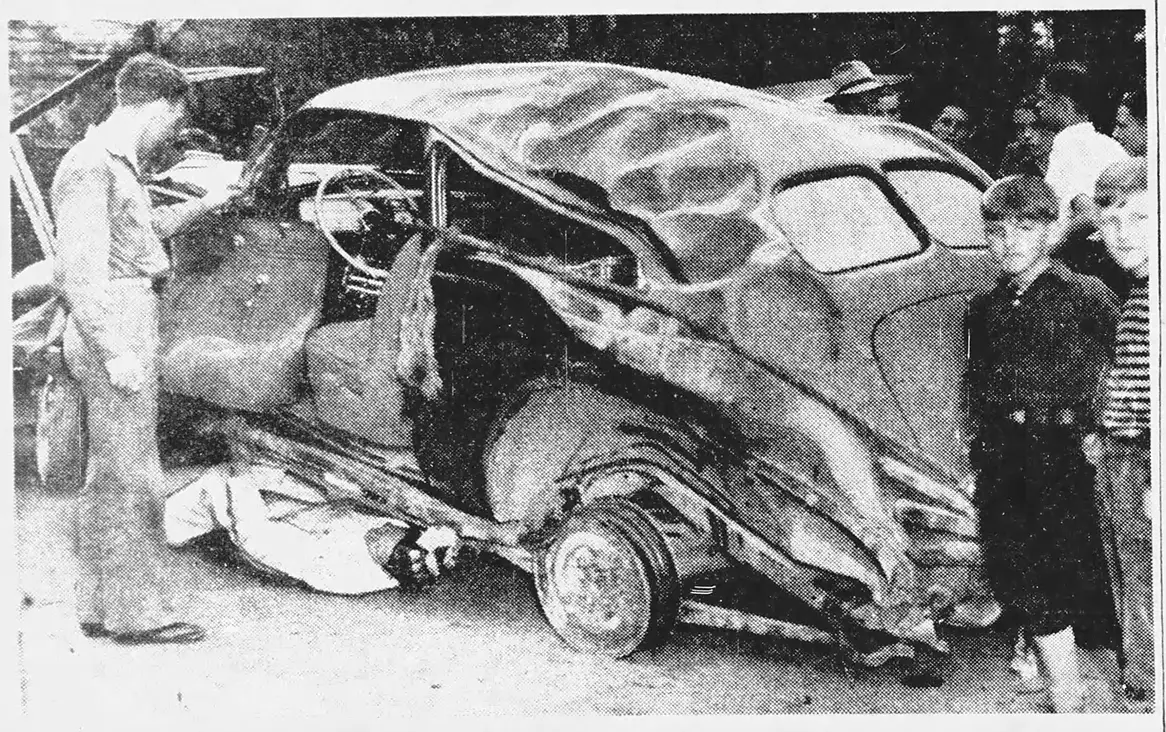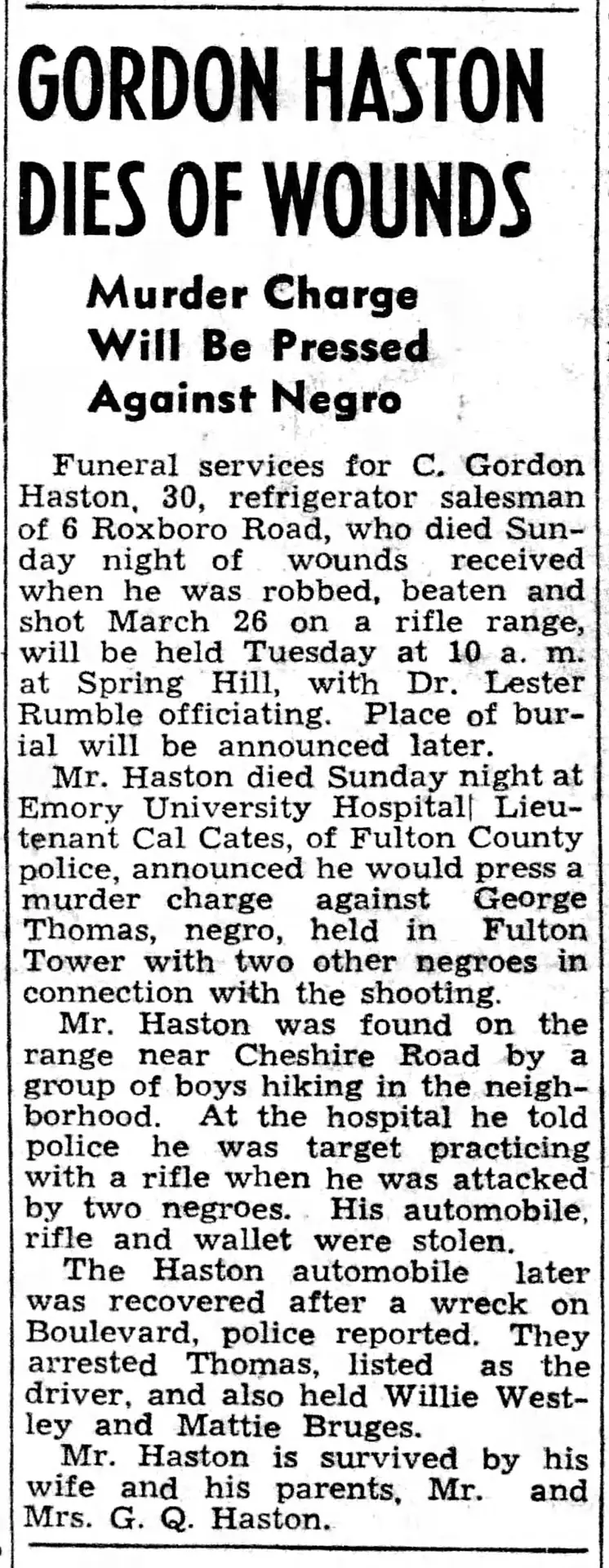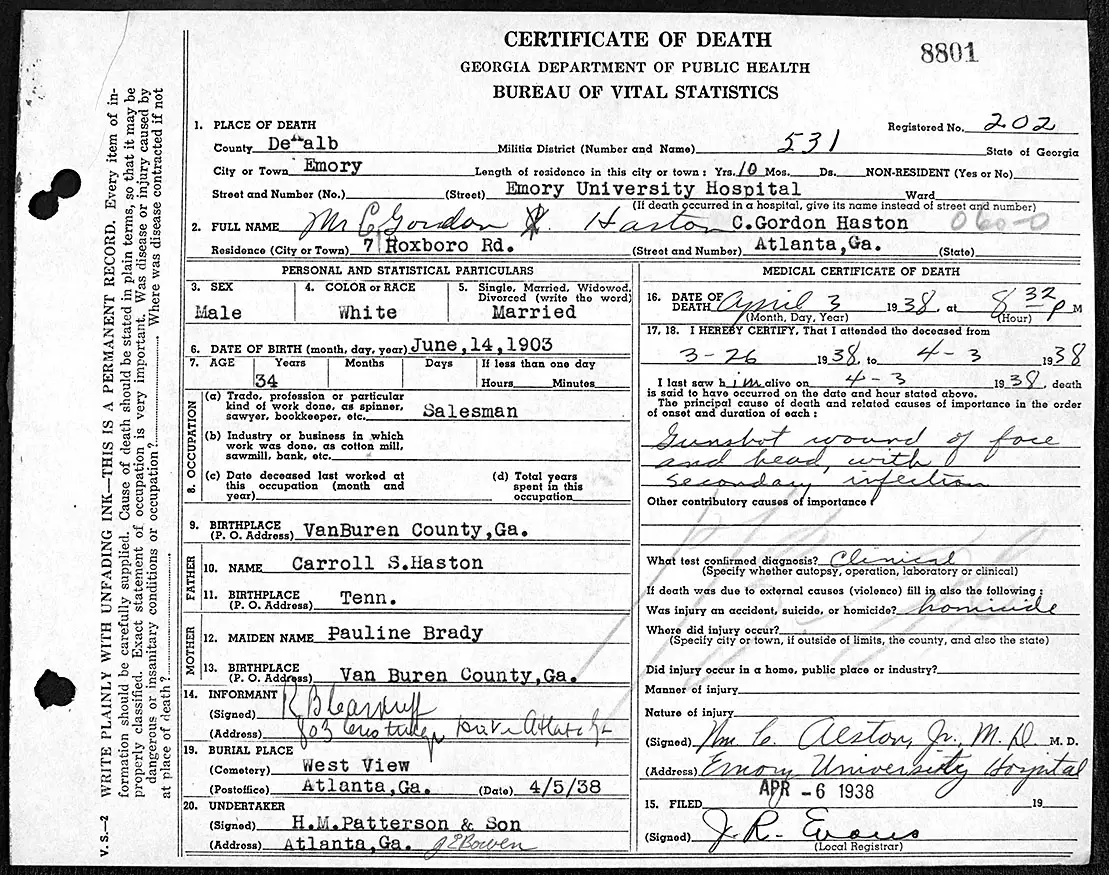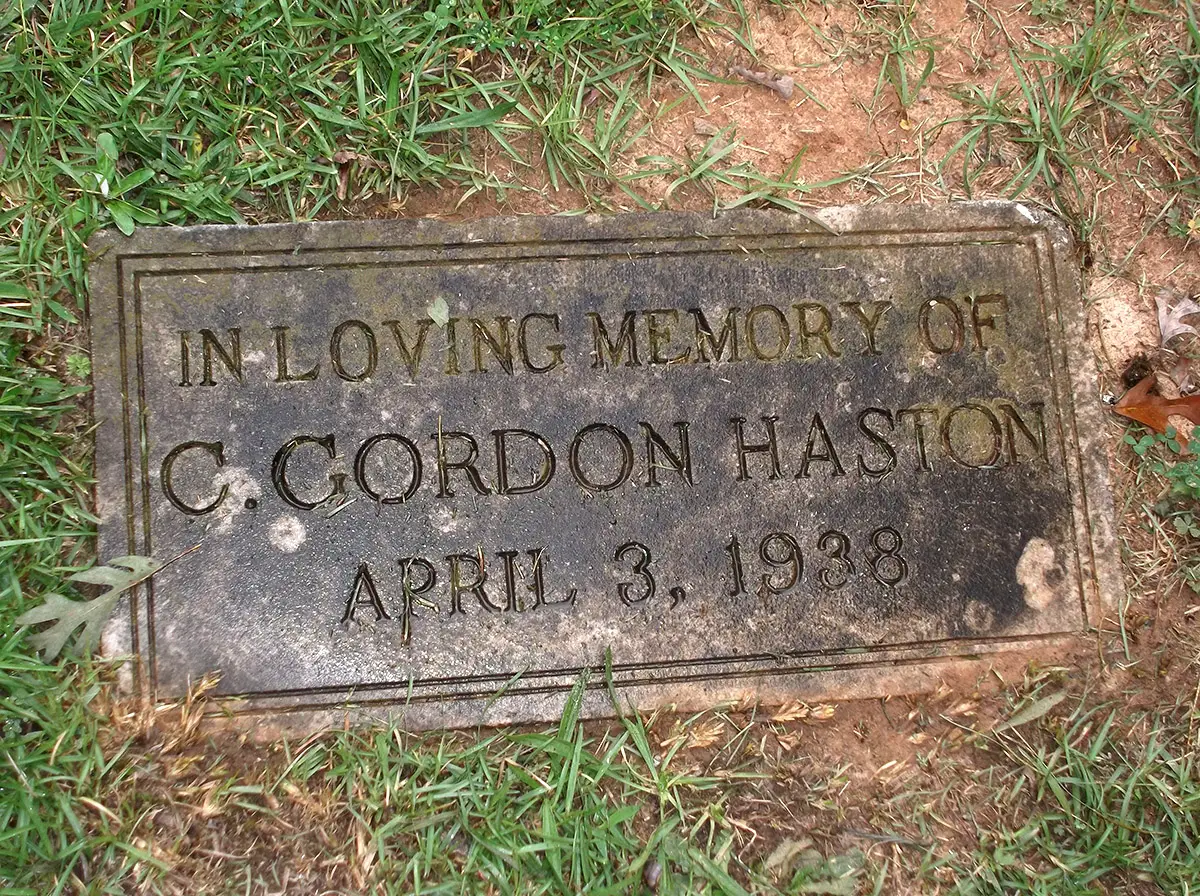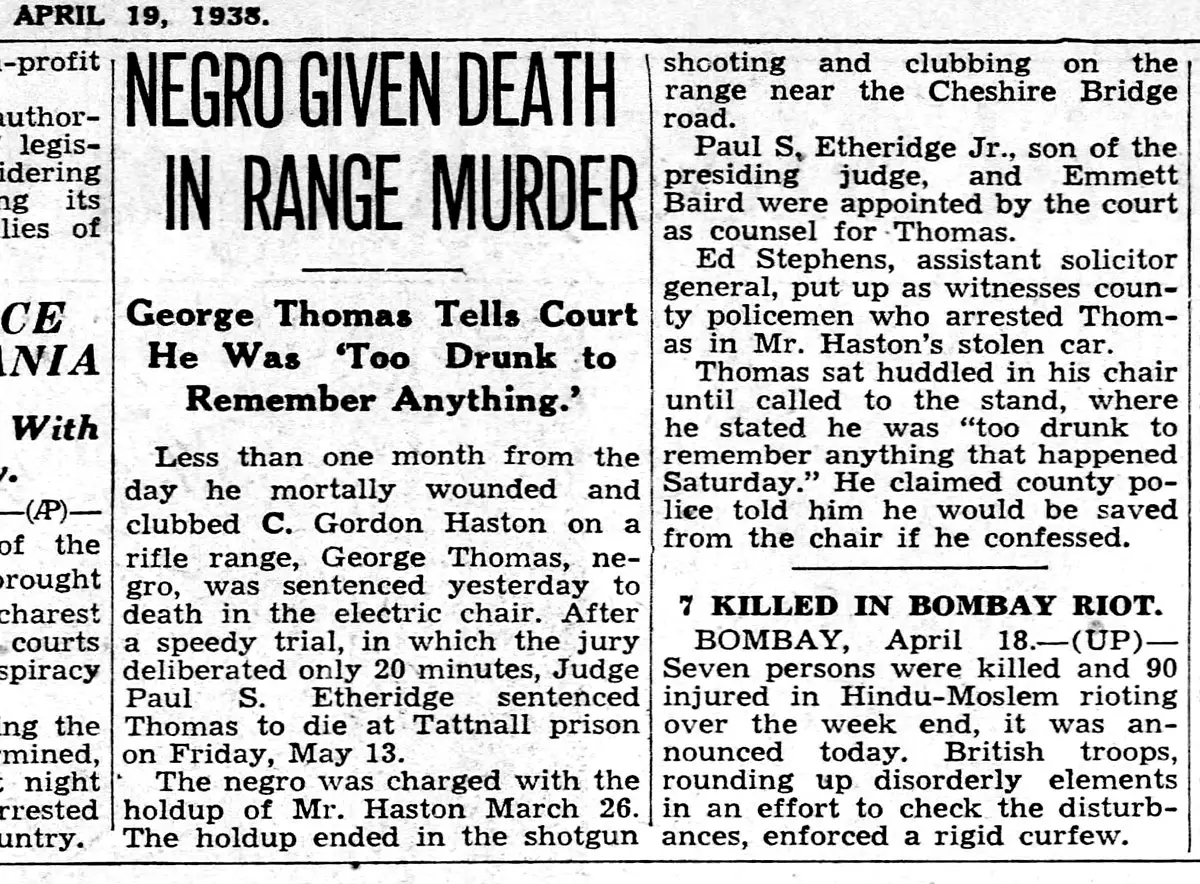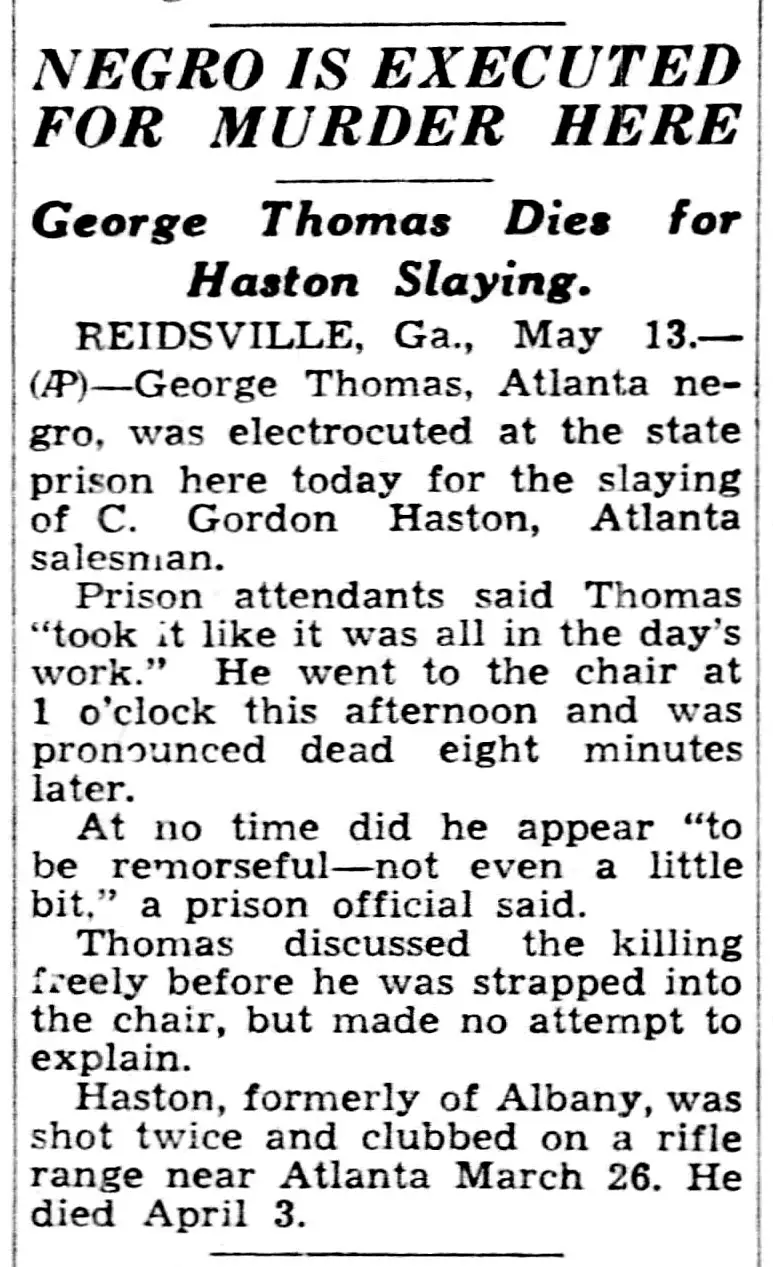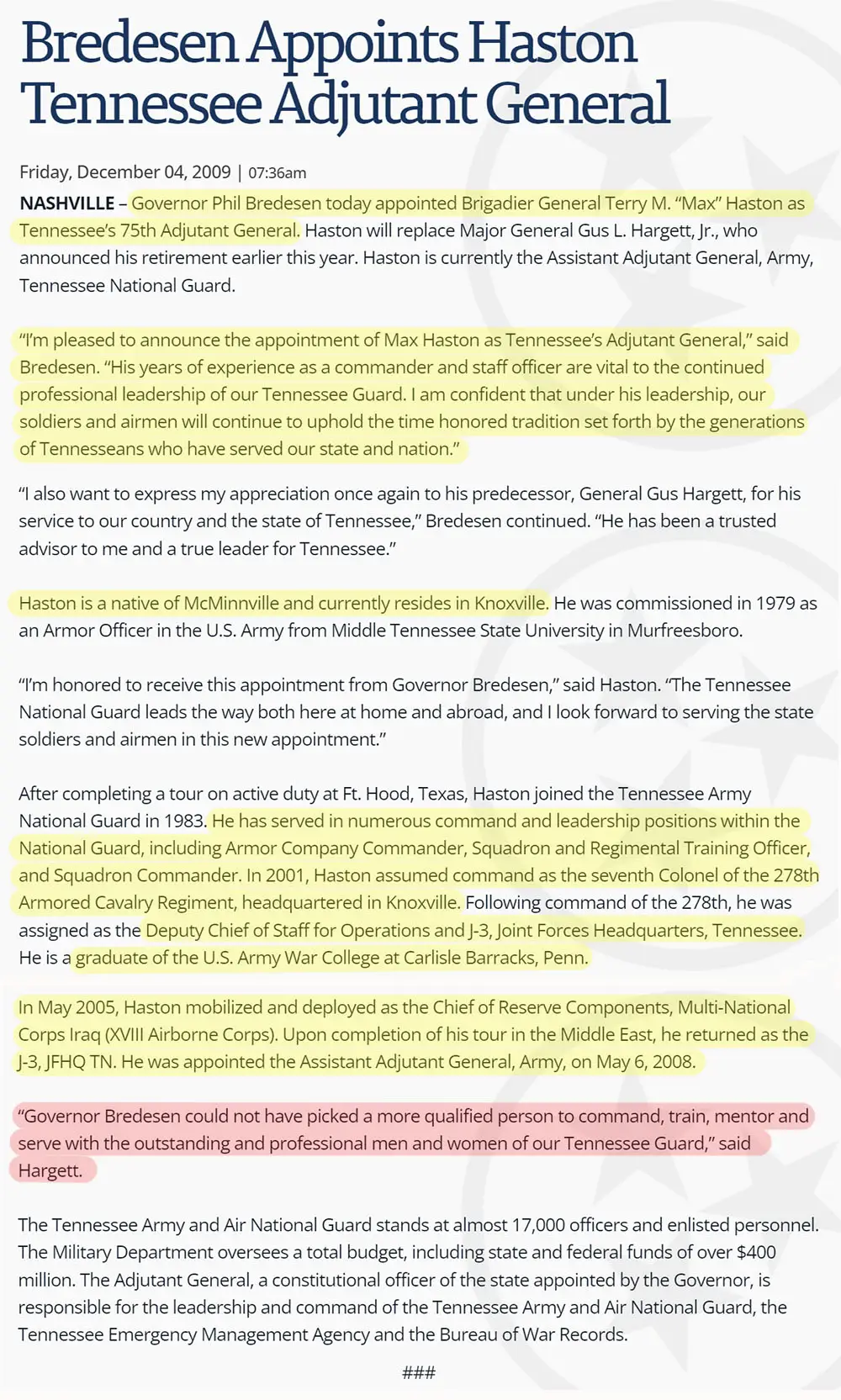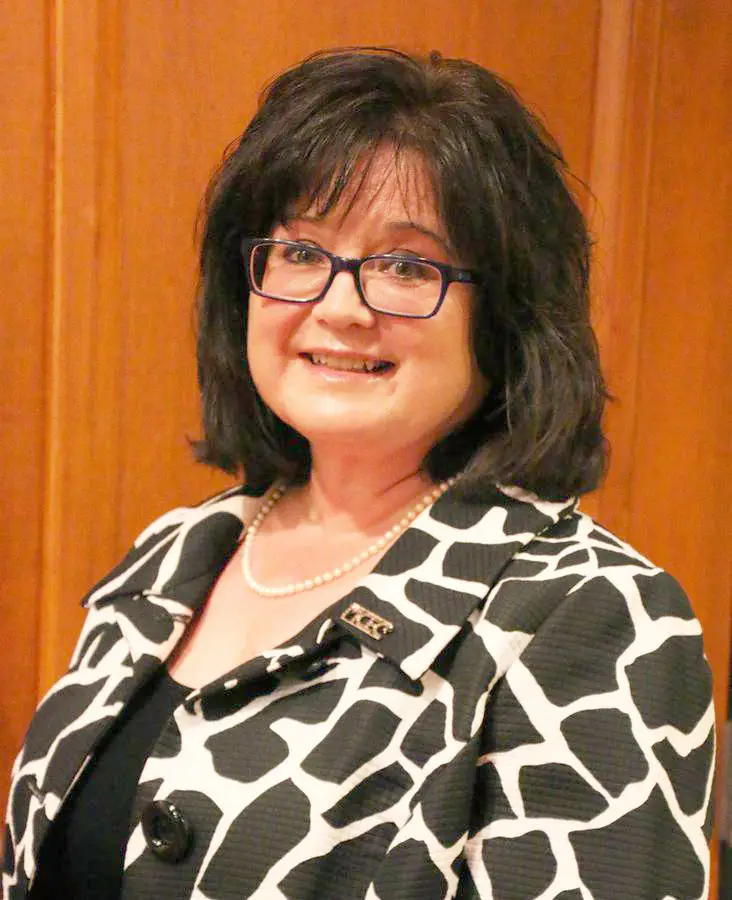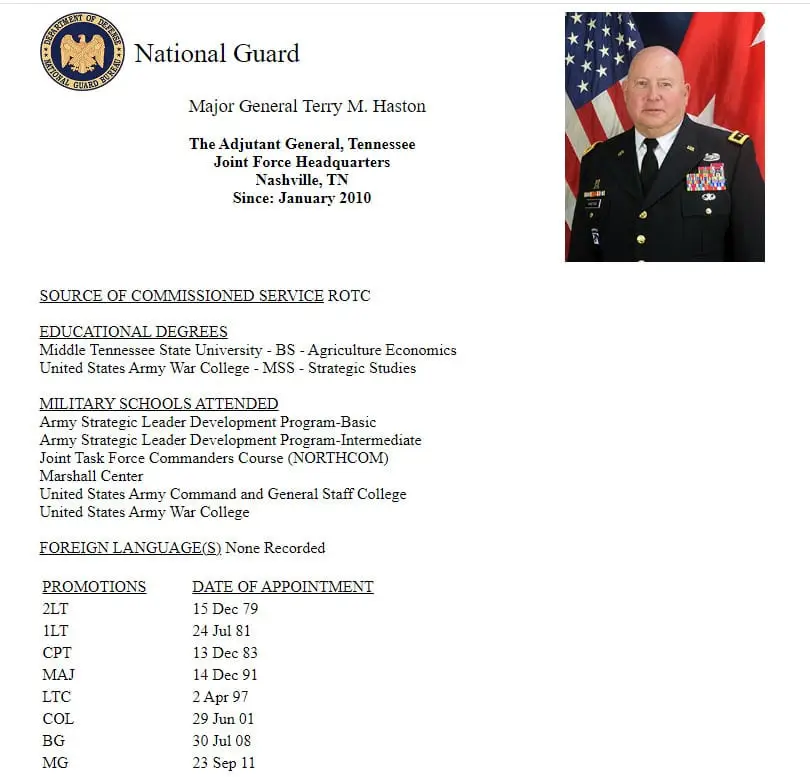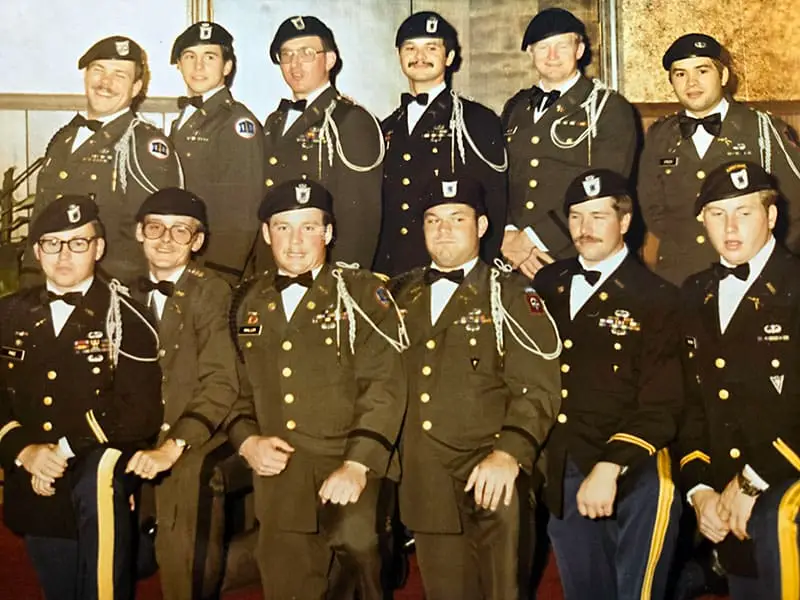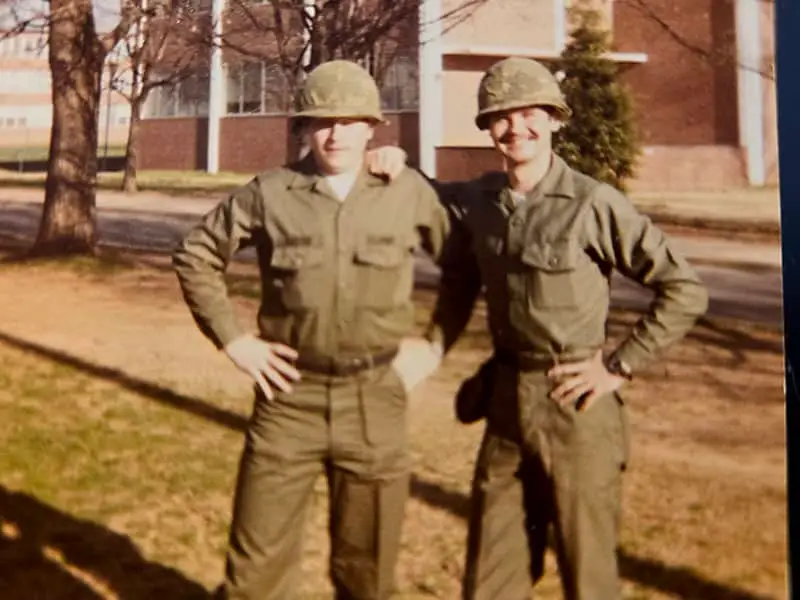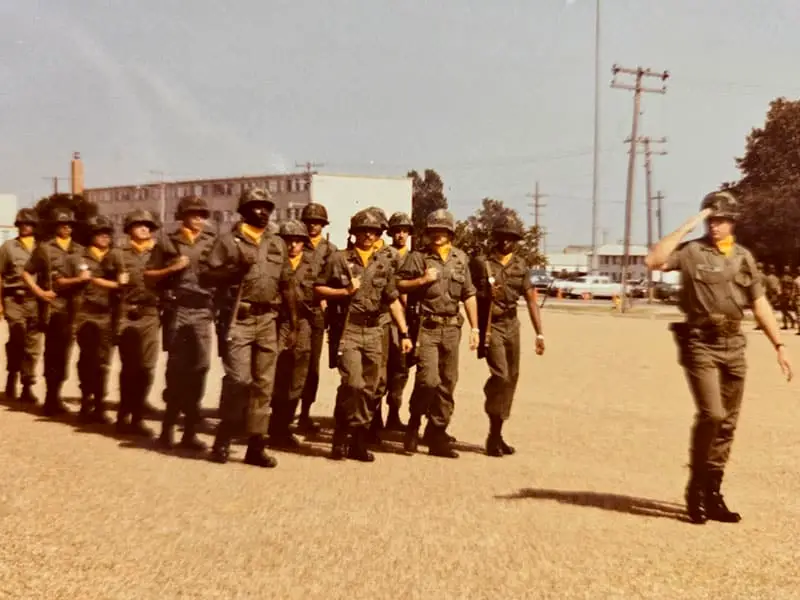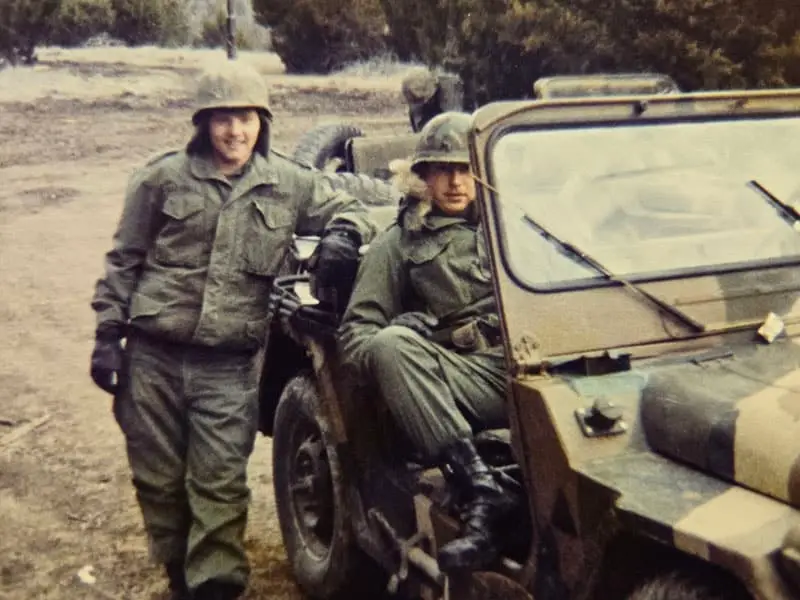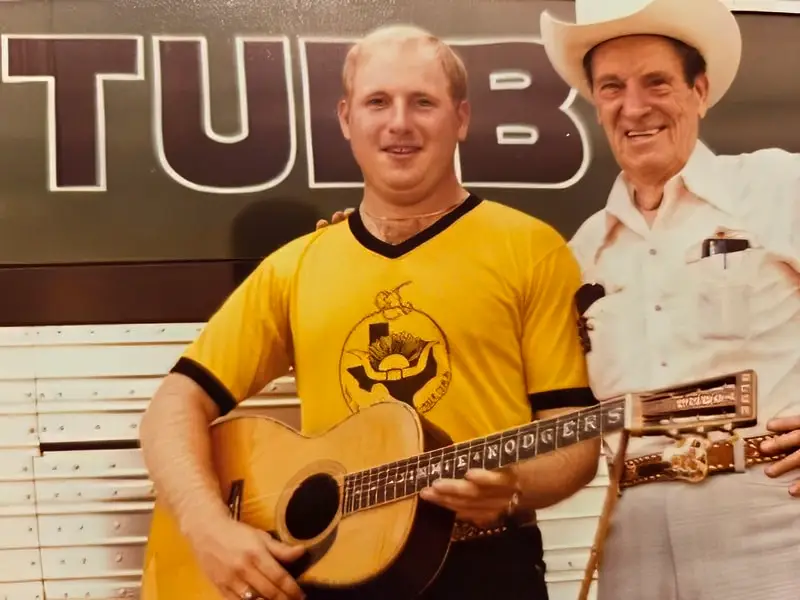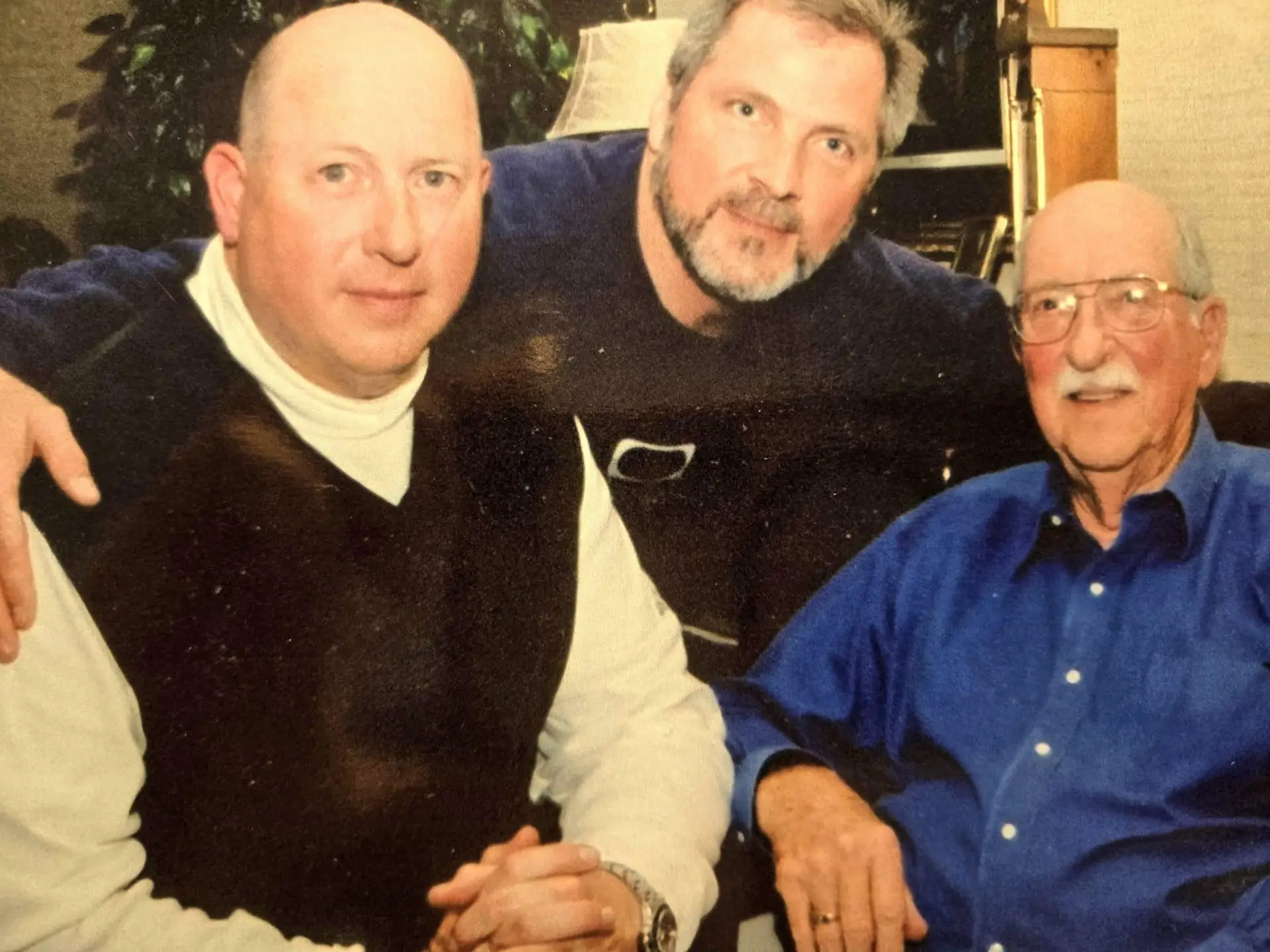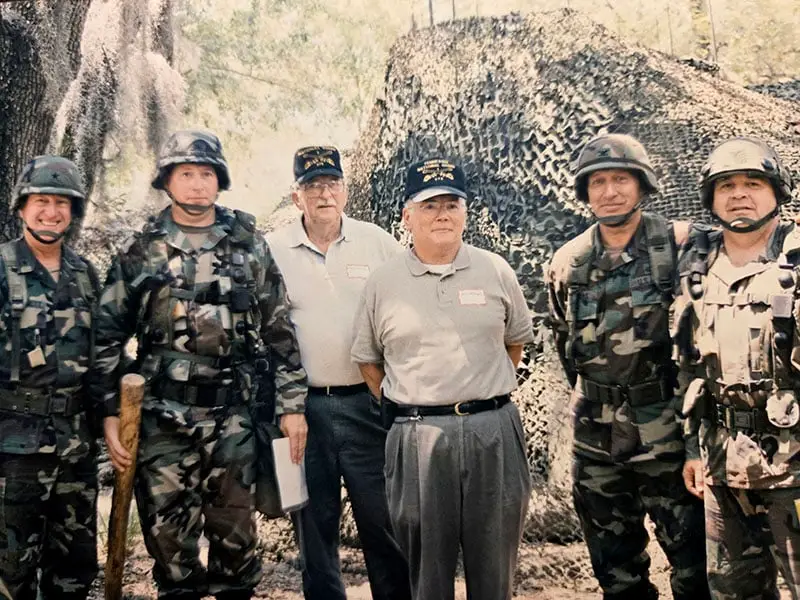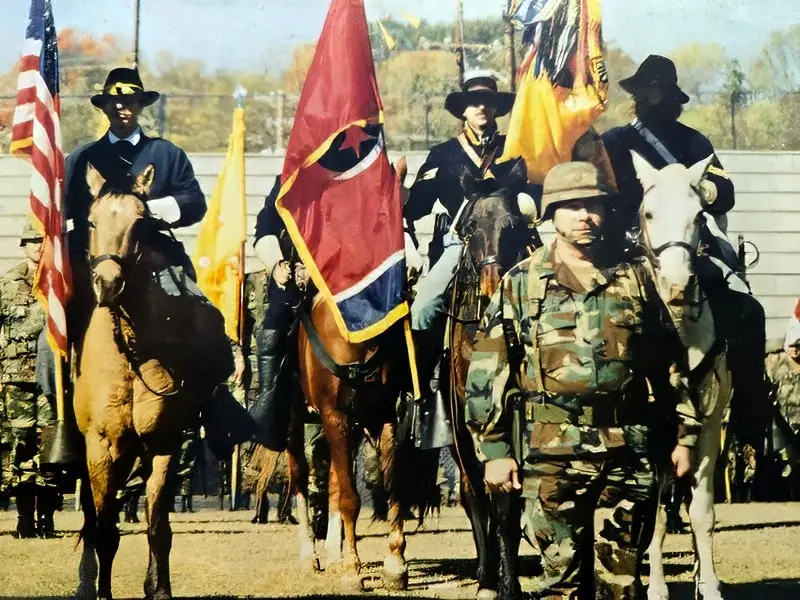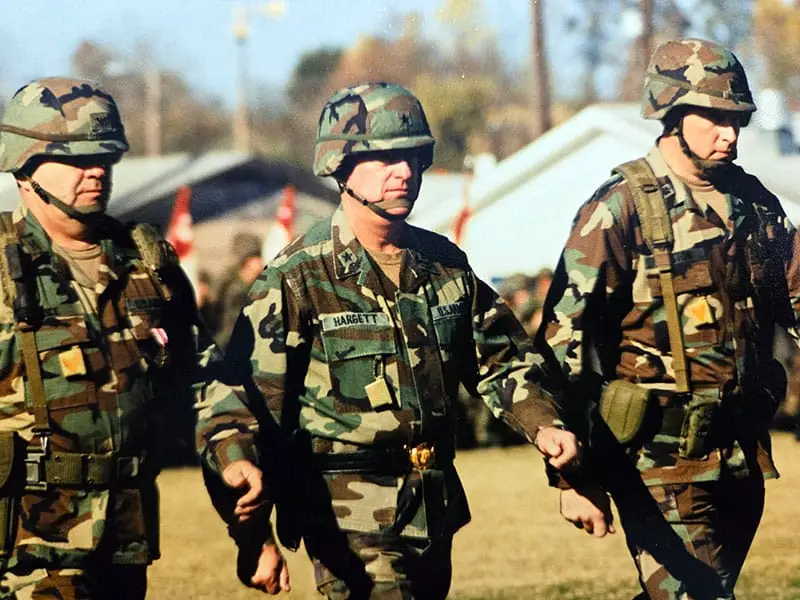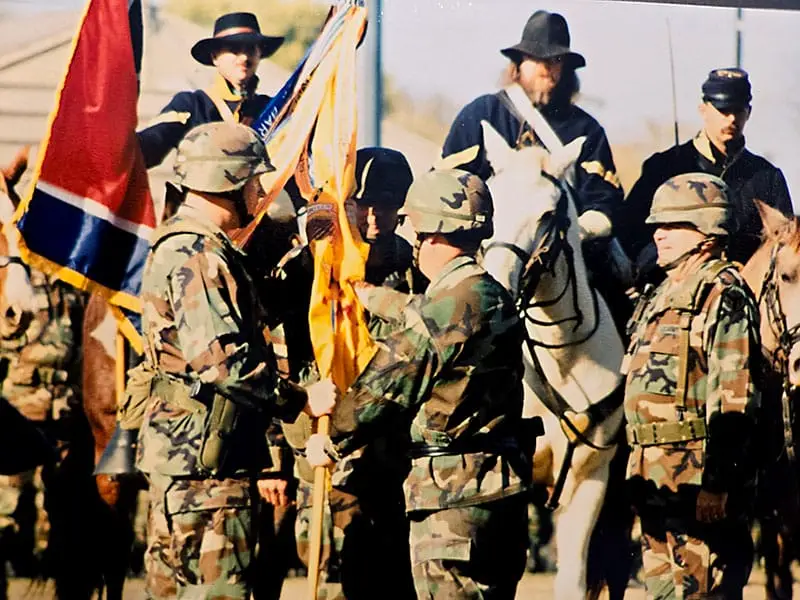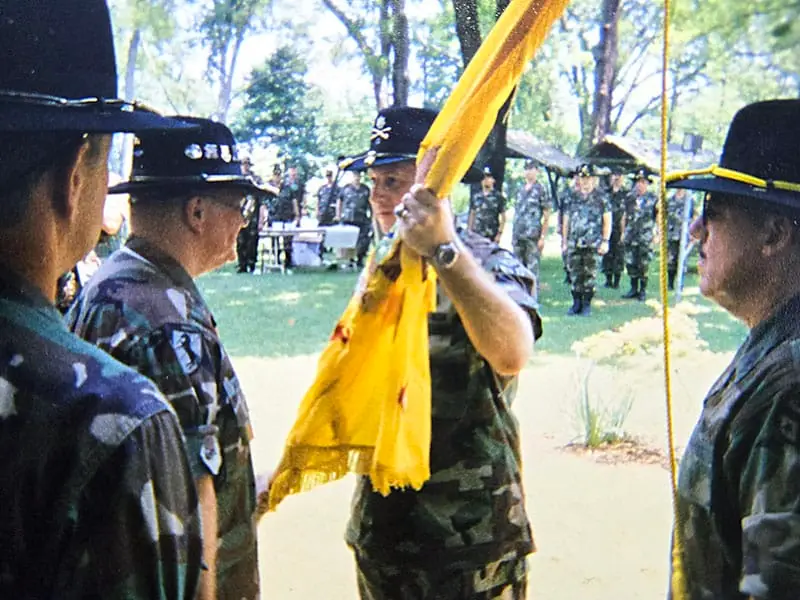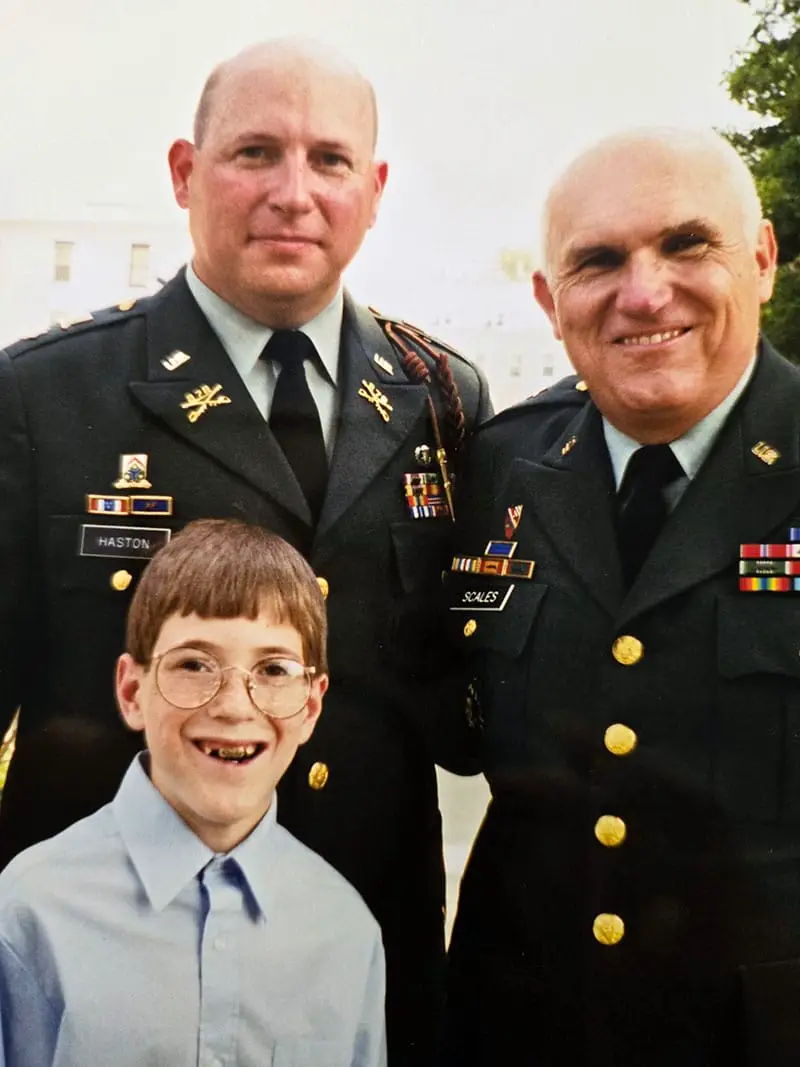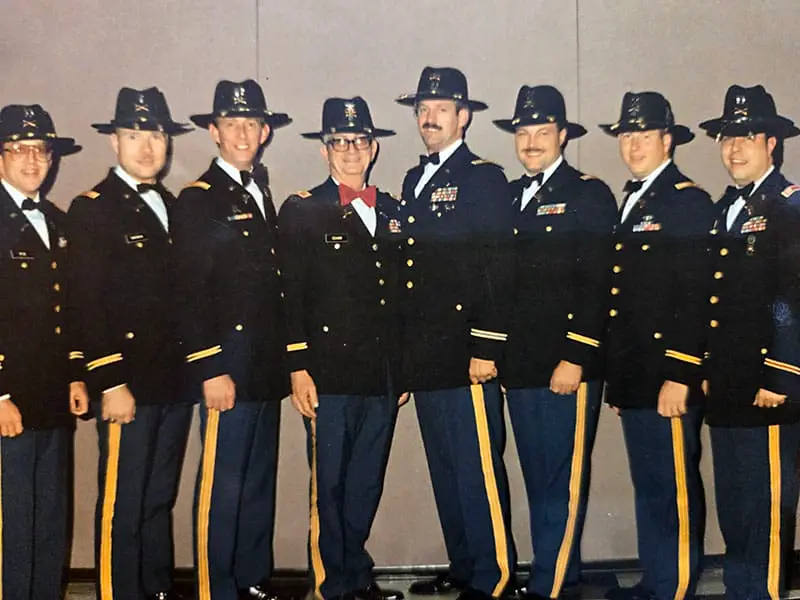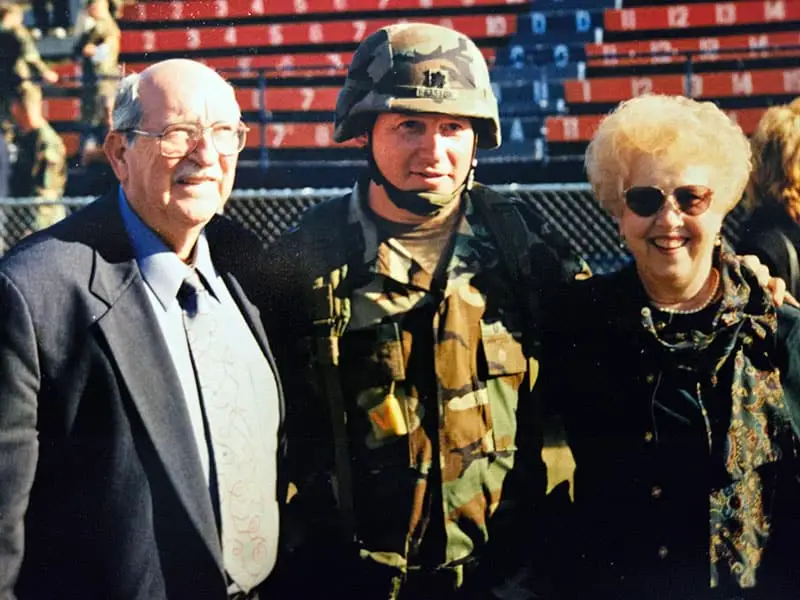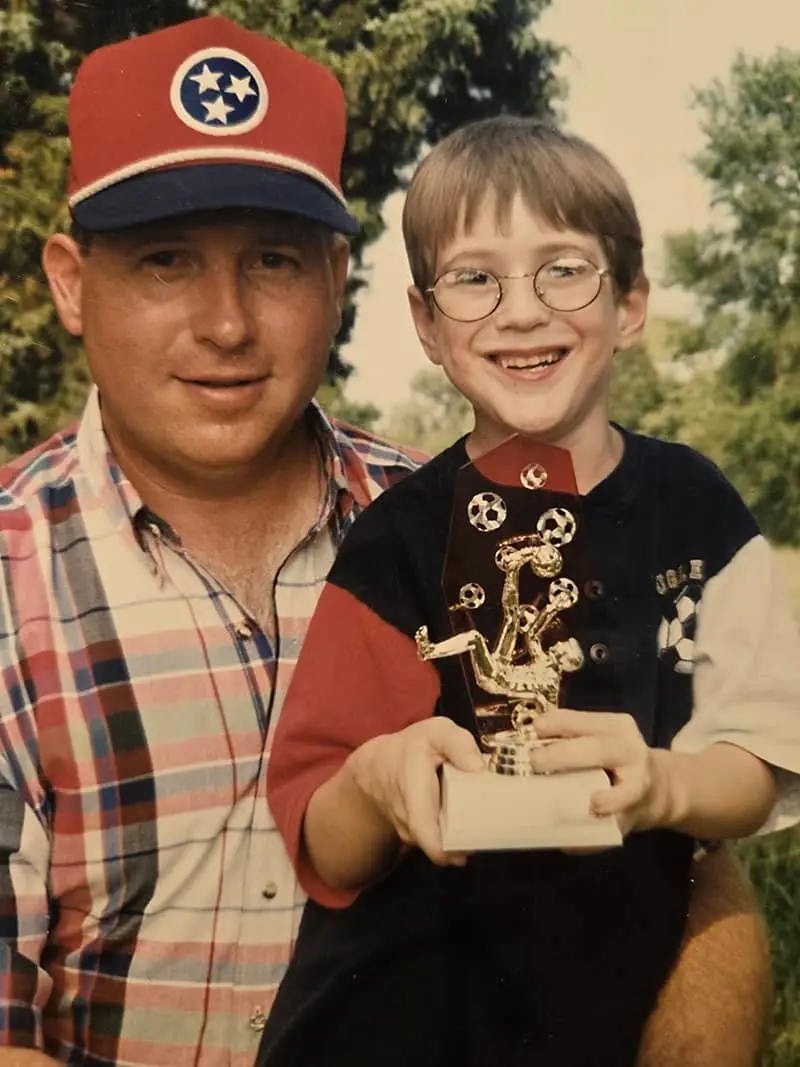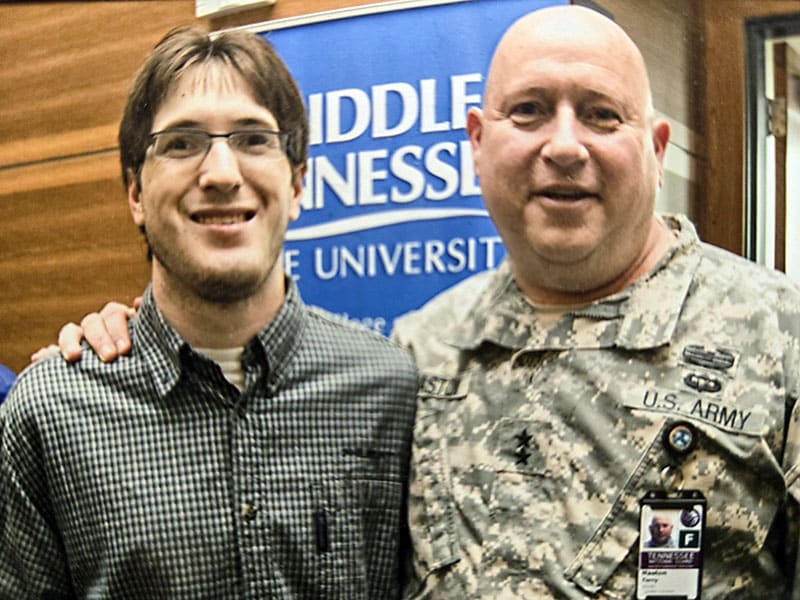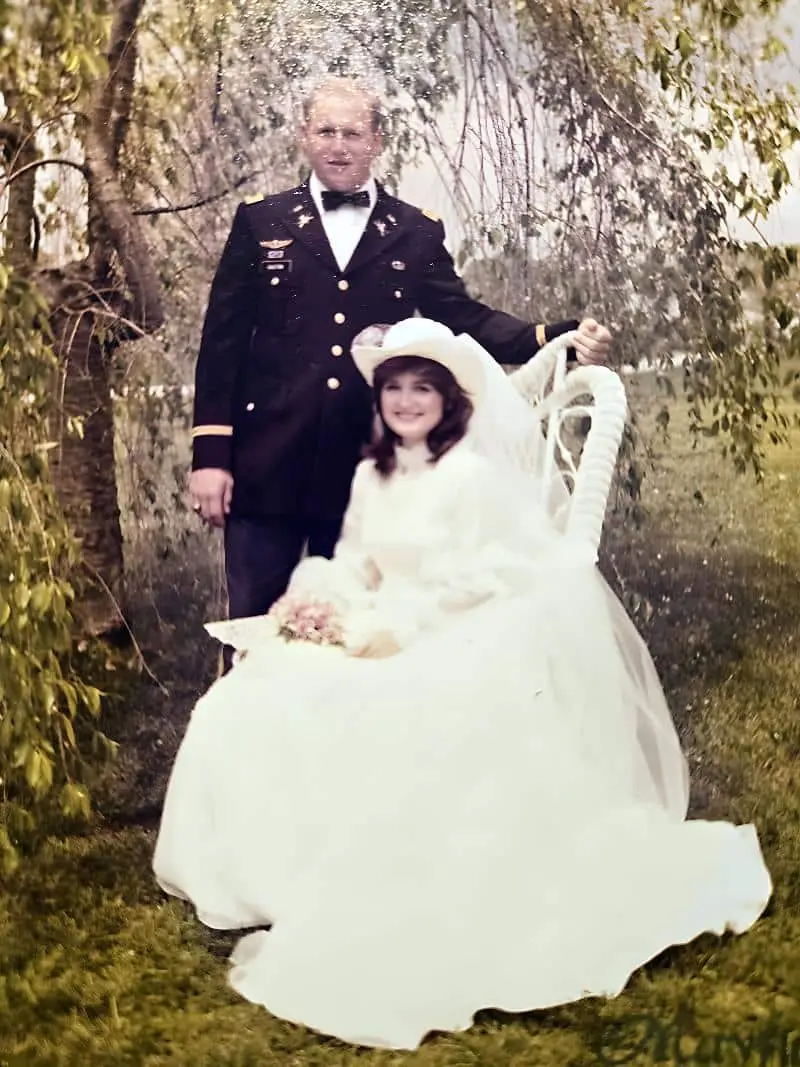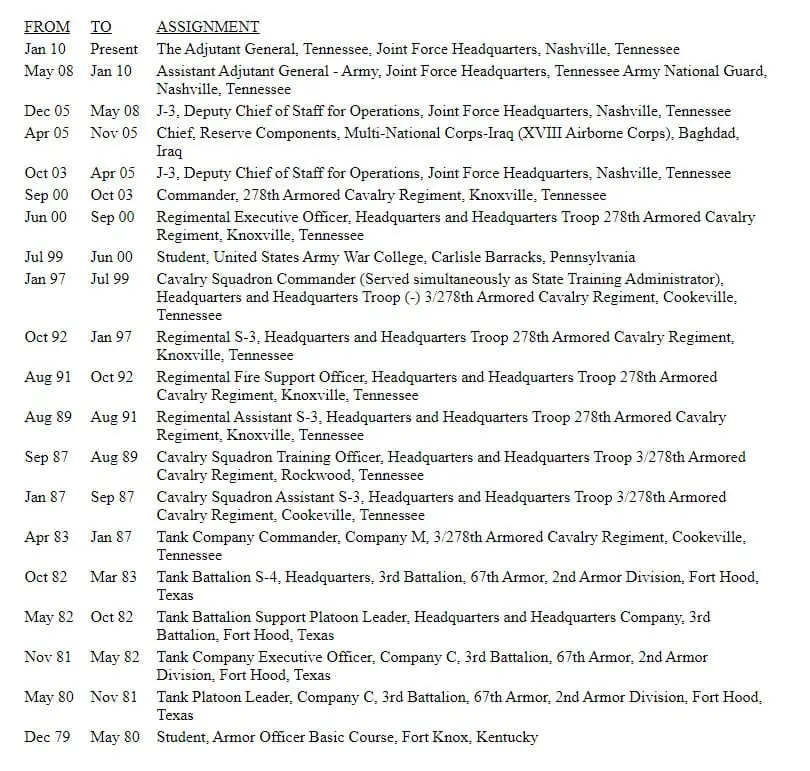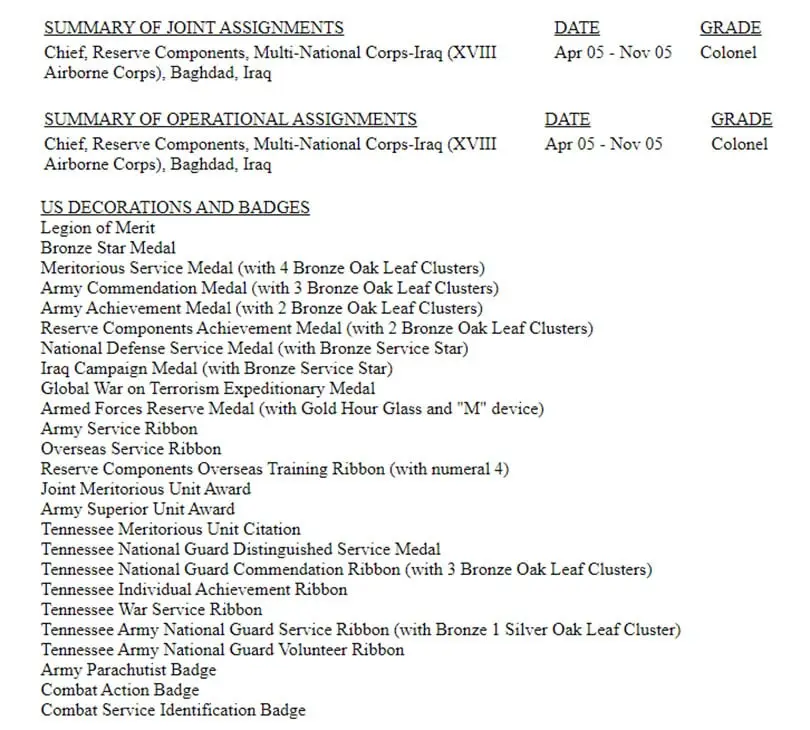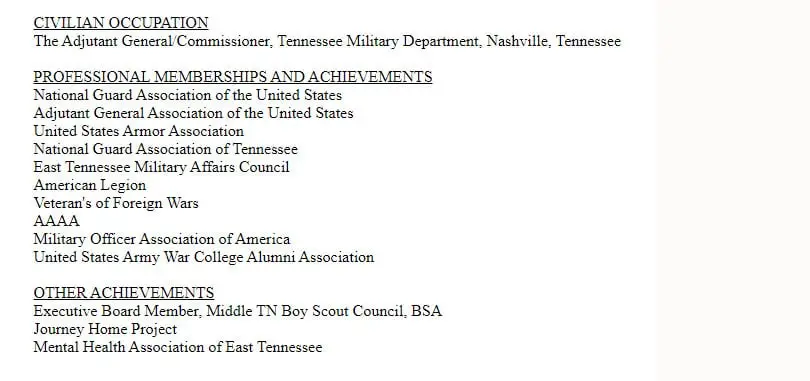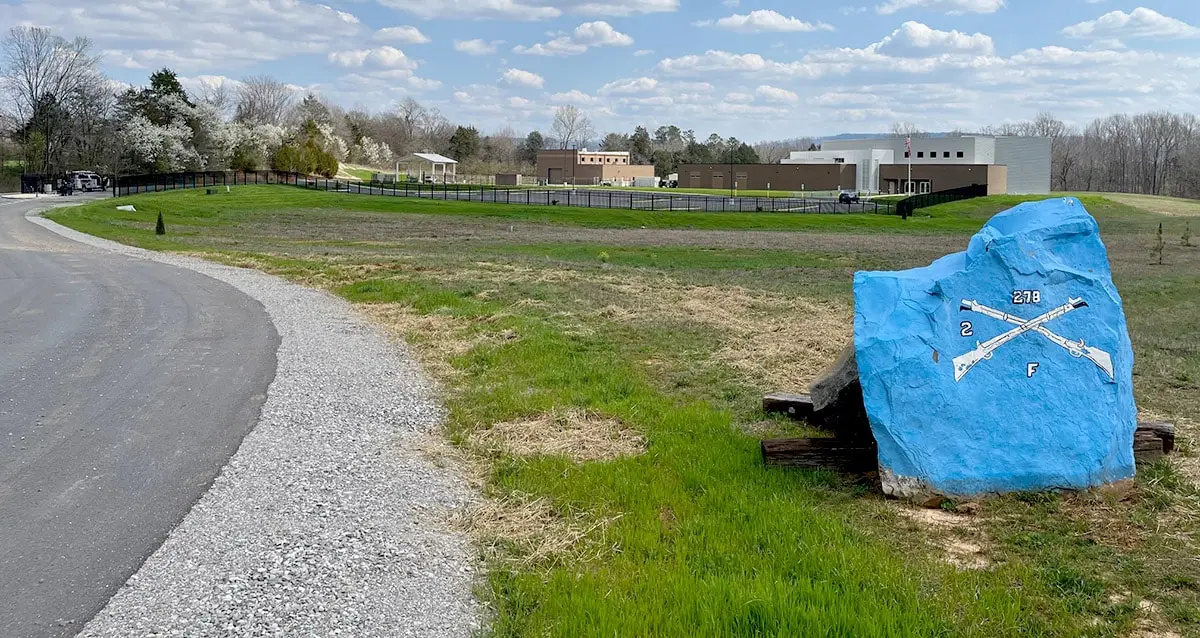David Haston and Family in White County, Tennessee |
| Move to White County, TN: David moved to White County, to join his father Daniel, his brother Joseph, his sisters Catherine [later, Austin] and Lucinda (Mitchell), and perhaps other family members, sometime between November 11, 1806, and February 10, 1808. He had already sold his land, so he may have left Knox County in November after he served as auctioneer for the Jacob Neff estate settlement. This timing is in harmony with a return trip from White County to the Knox County area that his brother, Joseph, may have made. Perhaps Joseph led David to the new Haston home place in White County. Daniel's wife (who was David's mother or stepmother) may have remained in Knox County until this time. |
| Road Work Appointment in White County, TN: David was one of the men "...appointed to lay off and mark a road the nearest and best way from where the Chickamogga trace [ancient trail] crosses the White County line on Cumberland Mountain the nearest and best way that leads to Warren County line." This is the first known record of David in White County. Joseph Smith, Isaac Midcalf, David Haston, William Brown, Joseph Cummings, and Joseph H. Creely comprised this road crew. These men all lived in the same general area, along the Caney Fork River. Note: Joseph Haston married Sarah Creely.
Source: Original page 41 of abstracts of White County, Tennessee Minute Book 1806-1811. |
1808
May 14
June 18, 1808 | David and Isham Bradley Chain Carriers: David and Isham were chain carriers for Jacob Mitchell's survey of 50 acres on the big spring branch of Cane Creek on May 14, 1808 and for Joseph Haston's survey of 50 acres on June 18, 1808.
Source: Tennessee Land Records, RG (Records Group) 50, Box 112, pages 62 & 67. |
| Fourth Child (Daniel MC.) Born:* Daniel Mc Haston married (1) Annie Green in 1827 (daughter of John & Rachel Mackey Green; John Green was an elder of the Big Fork Baptist Church)** and (2) Martha Jane Wade on June 10, 1839. A published biographical sketch*** of his son, J.P. Hastain, says that "In 1834 the family (i.e. Daniel MC's family) removed to Missouri, and first located in Henry County, being among the pioneer settlers there." A similar biographical sketch*** for another son of Daniel Mc. Hastain, P.D. (Pleasant Dawson) Hastain, also states that "Daniel M. Hastain was reared in Tennessee, but came to Missouri in 1834, locating in Henry County. He...became one of the large landowners of that section." This Daniel Hastain died on June 17, 1875 (or 1874 as per the P.D. Haston bio sketch) in Henry County, MO. In Missouri, the spelling of Haston was changed to Hastain.
Sources:
*David Haston's Bible records; **NSDAR record #108279.
***Page 1133 of History of St. Clair County Missouri (Published 1883 by the National Historical Company). ***Page 440 of Biographical Records of Johnson and Pettis Counties, Missouri (published in 1895 by Chapman Publishing Company of Chicago; F 472, JE P8 in Library of Congress) Notes: The Thomas J. Hastain, W.T. Hastain, & two Woodson A. Hastain biographical entries on the Henry County, MO RootsWeb.Ancestry.com site provide several interesting references to Daniel M. (or McC. or McCumskey) Hastain. Daniel MC Hasting appeared on the 1832 White County, TN tax list, apparently living near his father-in-law (John Green) in the Lost Creek area of upper Hickory Valley. He owned 50 aces. His name was clearly written as "Daniel MC." He also appeared on the 1833 & 1834 tax lists for the same area.
Move to Henry County, MO Rev. Henry Avery was the first white permanent settler in the area that became Henry County, MO. He married Elizabeth Green, daughter of John Green (Greene) of White County, TN. John Green was a minister of the Big Fork Baptist Church for many years. This means that Rev. Henry Avery and Daniel M.C. Haston (who later changed surname spelling to Hastain) married sisters, daughters of John Green. Shortly after Henry Avery settled in Henry County, MO, Daniel M.C. Haston apparently joined him. William M. Doyle (son of James H. Doyle who lived very near the Big Fork Baptist Church) also went to Henry County, MO with the Avery family. Rev. Henry Avery was a pioneer hero and cherished Baptist minister in early Henry County, MO. Source: Pages 492-496 of The History of Henry and St. Clair Counties, Missouri (St. Joseph, MO: National Historical Company, 1883). There are numerous other references to Rev. Henry Avery in this book.
Settlement of (Rev.) John Green's Estate
When Daniel MC Haston's father-in-law, John Green, died in the early 1850s, it appears that Daniel MC Haston traveled from Henri [Henry] County, MO (where he then lived) back to White County, TN to claim the inheritance for various heirs of John Green. These heirs were scattered in Missouri, California, & the Oregon Territory. These heirs were probably his (David MC Haston's) children.
Primary Source: Recorded in "An Old Book in White County Courthouse--Powers of Attorney, Guardians, Etc." (as of 2003, the location of this book was unknown by White County, TN records guardians); Secondary Source: Frame #002129 of microfilm AC # 1421-3 of the Charles Leonard Papers from TSLA. The information is said to also be in the White County, TN Chancery Court records for 1854-1857. |
| Grand Jury Duty: David was a member of "the Grand Jury empannelled and sworn for the County of White." Isham Bradley (bondsman for David's marriage in Knox County) was also a member of this jury.
Source: Original page 80 of abstracts of White County, Tennessee Minute Book 1806-1811. |
| Witnessed Isham Bradley Land Transaction: David Hastin, Joseph Hastin, Jacob Mitchell, and John Miller were witnesses for a sale of 50 acres that Isham Bradley made to Charles Mitchell for $400. The land was on the Big Spring Branch. Isham Bradley earlier acquired the land from the state of TN through Grant # 529.
Source: Page 69 of Volume B of Deeds, White Co, TN. |
| David Purchased Land in White County, TN: David purchased 50 acres of land from his brother Joseph for $200, on the same day that they both witnessed the Isham Bradley to Charles Mitchell deal (see above). Joseph had acquired this land through TN land grant # 550. The land adjoined property owned by Isham Bradley, Jacob Mitchell, and Daniel, his father. Isham Bradley, Charles Mitchell, and John Miller witnessed the transaction.
Source: Pages 107-109, Volume B, Deeds of White Co, TN Indenture for February 15, 1809. |
| Jury Duty: David's name appears four times in this day's court minutes, related to various court cases for which he served as a juryman.
Source: Original pages 111-113 of abstracts of White County, Tennessee Minute Book 1806-1811. |
| Joseph to David Land Purchase "Proven" in Court: The 50-acre purchase of land that David made from his brother, Joseph, was "proven in court by the oaths of Isham Bradley and Charles Mitchell and admitted to record." It was registered at this time, although the deed was recorded on February 15 of the same year (see above).
Source: Original page 124 of abstracts of White County, Tennessee Minute Book 1806-1811 |
| David "Proves" Isham Bradley's Sale of Land to Charles Mitchell: Earlier in this same year, on February 15, David and Jacob Mitchell had witnessed a sale of land from Isham Bradley to Charles Mitchell. As per the November 14 court record, "...this day [the transaction was] proven in open court by the oaths of David Haston and Jacob Mitchell and ordered to be recorded." It was then officially registered.
Source: Original page 124 of abstracts of White County, Tennessee Minute Book 1806-1811 |
| Summoned to Jury Duty for February 1810 Session: David was summoned as one of the "persons to attend at the Court house in said County [of White] on the second Monday in February next to serve as Juror." Among the others summoned were Robert Gamble and John Scoggins (two of the first elders of Union Presbyterian Church), Hercules Ogles, Stephen Crain, Isaac Pruett, Andrew McBride, Christopher Steakley, and Isaac Brown. These men probably lived near the Hastons.
Source: Original page 134 of abstracts of White County, Tennessee Minute Book 1806-1811 |
| Jury Duty: As per the earlier summons (November 17, 1809), David reported for jury duty in this February 1810 County Court session but there is no evidence that he was actually impanelled as a juryman from among the larger group summoned.
Source: Original page 136 of abstracts of White County, Tennessee Minute Book 1806-1811. |
| Road Work Assignment: It was "Ordered by Court that Joseph Smith, Esqr. David Haston, William Preuitt, Henry Holt, and Jacob Mitchell be appointed to review and straighten the present road leading from Bledsoe County to Warren County to commence at a point near David Haston's field and to intersect the present road East of Joseph Smith's at the most convenient place and make report thereof to the next Court, and the same is ordered accordingly." So, we know that this Bledsoe County to Warren County road ran by David Haston's field.
Source: Original page 144 of abstracts of White County, Tennessee Minute Book 1806-1811. |
| Road Assignment Report: "Present to an order of this Court at February term 1810 for reviewing and straightening the road leading from David Haston's to intersect the road East of Joseph Smith, the reviewers for that purpose appointed this day exhibited their report which was received and established. It is, therefore by the Court ordered that the Overseer of the old road, do open and keep in repair the road as marked by the reviewers aforesaid and that the usual hands to ____ the same, and it is ordered accordingly &/c.
Source: Original pages 156-157 of abstracts of White County, Tennessee Minute Book 1806-1811. |
| Summoned to September 1810 Circuit Court Jury Duty: David was "named to attend as Jurors at the Honorable the Circuit Court for to be holden in the County of White at the Court house in Sparta on the first Monday in September next." In addition to David, some of the others summoned were John Bryan, William Burden, John White, Nicholas Gillentine, Isaac Medcalf, and Joseph Smith.
Source: Original page 162 of abstracts of White County, Tennessee Minute Book 1806-1811. |
| Road Work Appointment: It was "Ordered by the Court that Jacob Stipe, David Haston, Jacob Mitchell, William Brown, Christopher Steakley, Spencer Mitchell, and Nicholas Gillentine be appointed to review lay off and Mark a road the nearest and best way from David McDaniels passing by John Whites so as to intersect a road leading by Joseph Smiths, East of where he lives and the same is ordered accordingly."
Source: Original page 177 of abstracts of White County, Tennessee Minute Book 1806-1811. |
| Road Work Report: On November 13, 1810, it was "Ordered by Court that the road reviewed and marked from David McDaniels passing by John Whites so as to entersect a road leading by Joseph Smith's East of his residence be established and the same is ordered accordingly. David's name doesn't appear in the abstract for this entry, but he was part of this road crew as assigned on May 19 of the same year.
Source: Original page 197 of abstracts of White County, Tennessee Minute Book 1806-1811. |
| David Was a Church Clerk: "The Cumberland Presbyterian congregation met in Old Union Church which was organized about 1811 by Rev. William Barnett. Spence Mitchell, Robert Gamble, and Jesse Scoggins were the first elders, and David Haston was the first clerk." (See the locations on the map below of Old Union and David Haston's home place.)
Source of the above quotation: Page 174 of Heritage of White County, 1806-1999 (Waynesville, NC: County Heritage, Inc., 1999. Primary source (from which the Heritage of White County information was taken): Minutes of the Cumberland Presbyterian Church, Union Congregation, White Co. Tenn. A September 1, 1883 entry summarized the congregation's history. The church clerk who wrote this entry was C.T. (Charles Thomas) Haston, the grandson of David Haston and son of William Carroll Haston.
----
Note 1: This church was situated just across from and north of the Caney Fork River from where the early Hastons lived. The date for the founding of this church is sometimes given as 1810. An 1898 source* says that "Both David and Margaret Haston of Van Buren were active members of the Cumberland Presbyterian Church and before a house of worship was erected in their community, services were often held in their home." This reference may indicate that the Old Union church got its start in David's home, or in his home and the homes of other early settlers. Since David and Peggy arrived in White County by (at least) early 1809 (possibly in the final weeks of 1806), the church may have roots even earlier than 1810.
*Source: Page 272 of Memorial and Biographical Record of the Cumberland Region (Chicago: Ogle and Co., 1898).
Note 2: It is interesting that the Big Fork Baptist Church existed at this time and was much closer to the Haston family (and did not require crossing the Caney Fork River) than the Presbyterian church that was located north of the Caney Fork River on land owned by Spencer Mitchell. There is evidence that some members of Daniel Haston's family were affiliated with Baptist churches back in Virginia as well as in East Tennessee. Did David Haston, and perhaps other family members, align with Presbyterians while they were in Knox County? The Presbyterians were definitely the majority denomination at that time in Knox County.
|
| The First White County, TN Census (List of Taxable Inhabitants): David Hastin and Joseph Hastin appeared in the list for Captain Isaac Pruett's* Company of Militia as taken and returned by Joseph Smith, Esq. on January 1, 1812. Daniel's name does not appear on this list. Daniel was too old to be considered a "taxable inhabitant" on the militia census. One transcribed source (Pioneers of White Co, TN by W.J.H. Phillips; TN 976.89 White PHI) says that these names are David Harton and Joseph Hastin, but the original document clearly reads "David Hastin" and "Joseph Hastin."
Source: Property and Poll Tax, 1811-1815 / 1821-1825; in the White County Court Clerk's office in Sparta, TN. (not transcriptions, but copies of original books)
----
*Captain Isaac Pruett, very probably the same man who witnessed David's sale of Knox County land just a few years earlier (see the September 11, 1806 entry) |
| White County, TN Tax List: David Hastin appeared on this list of taxable property and polls, in the bounds of Captain Isaac Pruett's militia company. He owned 50 acres "by grant" on Caney Fork. His total tax bill for the year was .75, which included .18 3/4 for "State Tax" and 56 1/4 for "County Tax." He was charged for one "white poll," but was not charged for any "black polls" (owned no slaves), nor "steed horses," nor "retail stores," nor "town lots."
Source: Property and Poll Tax, 1811-1815 / 1821-1825; in the White County Court Clerk's office in Sparta, TN. (not transcriptions, but copies of original books)
----
Note: One transcribed source (Pioneers of White Co, TN by W.J.H. Phillips (TN 976.89 White PHI); found in the White Co, TN public library) spells the name "Daniel Hartin" and has Joseph's name as "Joseph Hastin" and David's as "David Hartin." In the original source, the surname spellings seem to be consistent as "Hastin."
Note: From the White County, TN tax lists we learn that none of the early White County Hastons (Daniel, David, Joseph, & Isaac) ever owned slaves, although their neighbors sometimes did. |
| Appointed to Appraise Property Values: It was "Ordered by Court that the following persons be appointed to value property To wit: ...David Haston, Thomas Meek and John Ogle in the bounds of Capt Joseph Smith's Company."
Source: Original page 231 of abstracts of White County, Tennessee Minute Book 1806-1811 |
| Fifth Child (Isham Bradley) Born:* Isham Bradley Haston (later changed to Hastain) married
Rebecca Streakley (Steakley) on October 9, 1834. Isham B. Haston became one of the early Justices of the Peace for Van Buren County, TN, very soon after its founding in 1840.**
He died February 16, 1867, in Hickory County, MO. In 1850 he was living in the same district of Hickory County, MO where his namesake, Isham Bradley, lived in the early 1840s.
Source:* David Haston's Bible records; **Sources: Page 1 of Van Buren County TN Court Minutes, April 1840 session, and page 11 of the same source, June 1840 session.
He was a Judge in Hickory County, MO in 1862.
Source: Page 240 of Goodspeed's History of Hickory County, MO (1889). |
| Paid for One Day of Jury Duty: It was ordered by the Court that David Haston (among others for various amounts of jury duty) should be paid for a 1d (one day) juror ticket. It appears that payment for one day of jury duty was worth about 85 cents.
Source: Original page 278 of abstracts of White County, Tennessee Minute Book 1806-1811. |
| David Witnessed a Sale of Land: David Haston, Woodson P. White*, and William Glenn witnessed a sale of 100 acres of Grant # 3496 by Nathan Woods to Margaret Boyed (spelling?).
Source: Page 108 of Volume D, Deeds of White County, TN.
-----
*Note: Woodson P. White was the son of John White, (supposedly, but not likely) the first white settler in White County, TN. The county, it has been (traditionally) believed, was named after John White, although I think that is doubtful. The Whites lived across (that is, north of) the Caney Fork River from the Haston families. As "the crow flies" only a mile or so separated the Whites and the Hastons. John White, also a Revolutionary War veteran, claimed to have been born in Amelia County, VA. |
| David Purchased More Land: David purchased 50 acres from Charles Mitchell for $610. This was the same tract of land (TN Grant # 529) that Isham Bradley had sold to Mitchell (for $400) on September 26, 1808. David Haston was a witness to the Bradley to Mitchell deal (see above). It was located in the 3rd District on Big Springs Branch.
Source: Page 50 of Volume E, Deeds of White County, TN. |
| Appointed Road Crew Overseer: It was "Ordered by Court that David Hastin be appointed overseer of the road leading from Sequache to McMinnville, from the top of the Mountain near Cranes, to the house of a Joseph Smith, and that Nicholas Gillentine Esqr. furnish a list of hands to work there on, and that he keeps the same in repair as the law required. -Issd. Feby.18th, 1812."
Source: Original page 61 of WPA abstracts of 1811-1812 White County, Tennessee Court Minutes. (There appear to be two different records for this entry on back-to-back pages.) |
| Summoned to Jury Duty at Next Court Session: David Hastin and some of his neighbors, John White, John Scoggins, Jnr., and Isaac Brown, were "appointed as Jurors to attend the Next term of this Court."
Source: Original page 110 of WPA abstracts of 1811-1812 White County, Tennessee Court Minutes. |
| Appointed to Road Work Crew: It was "Ordered by Court that Thomas Bronson be appointed overseer of the road from Robert Gamble to Joseph Smith and that he keep the same in repair agreeable to law and that Nicholas Gillentine and Joseph Smith Esqr. be appointed to apportion the hands, amongst said Thomas Bronson, David Hastin, and John Hill, so as to keep in order their respective roads, and it is ordered accordingly."
Source: Original page 119 of WPA abstracts of 1811-1812 White County, Tennessee Court Minutes. |
| Purchased 50 Acres: On this day Charles Mitchell conveyed 50 acres of land to David Hastin. The conveyance "Was this day proven in open Court by the oaths of Nicholas Gillentine and Nathan Woods." This was probably the same tract of land that Isham Bradley sold to Charles Mitchell in 1809.
Source: Original page 185 of WPA abstracts of 1811-1812 White County, Tennessee Court Minutes. |
| Authorized to Purchase Road Work Tools: It was "Ordered by Court David Hastin, John Hill, and Peter Carter Overseer of the road leading from Sequache Valley to the Warren County line, be authorised [sic] to procure one Sledge Hammer, one crow bar, and one set of blowing tools, for the purpose of removing the rocks out of said road..."
Source: Original page 203 of WPA abstracts of 1811-1812 White County, Tennessee Court Minutes. |
| David Witnessed Another Land Transaction: Joseph Cummings, David Haston, and Nathan Woods witnessed a sale of 50 acres land by John Smallman (Smallwood?) to Nicholas Gillentine. It was located in the 1st District, 1st Range, and 10th Section on the south side of Caney Fork in Beech Cove. On the 9th day of this same month, David "proved" this deed by oath in open court.
Source: Page 73 of Volume E, Deeds of White County, TN (on microfilm roll White County, TN #61 from TSLA). |
| White County, TN Tax List: Daniel Hastin, David Hastin, and Joseph Hastin appeared on this "taxable property and polls" list in the bounds of Captain Isaac Pruett's Company of Militia. The listing was taken by Joseph Smith, Esq. David's total tax was .50 (.25 for state tax and for county tax). It seems that the county tax rate dropped from the previous year, despite having doubled the size of his farm. His land holdings had increased to 100 acres, from 50 acres. Again, he was charged for one white poll.
Source: Property and Poll Tax, 1811-1815 / 1821-1825; in the White County Court Clerk's office in Sparta, TN. (not transcriptions, but copies of original books)
Online reference: White County, TN 1812 Tax List (microfilm roll 123, book 1812). |
| Signed Two Contradictory Petitions: David Haston signed a petition from Peter Hoodenpile to the TN General Assembly to be permitted to create a toll turnpike from Bledsoe County into White, Warren, and other counties of TN.
Source: 28-3-1831 1-3 of 1812-1813 TN Legislative Petitions (TSLA Legislative Petitions Microfilm # 4)
In the same year, David Haston signed a petition from the citizens of White County, TN to the TN General Assembly to overturn the earlier petition by Peter Hoodenpile to build a toll turnpike from Bledsoe County courthouse across the Cumberland Mountain. The person who drafted the petition apparently transcribed all of the signatures into his own handwriting. No specific date is stated in the document.
Source: 21-3-1831 1-4 of 1812-1813 TN Legislative Petitions (TSLA Legislative Petitions Microfilm # 4)
|
| Sixth Child (Thomas C.) Born:* Information on Thomas C. Haston was discovered in the late 1990s. He married Margaret __?__ and left Tennessee for Missouri after the 1850 census. After Margaret died he remarried in Butler County, MO in 1852. He died in 1853. His two older sons moved to St. Francois County, MO. The two youngest children went to unrelated families in Arkansas. We do not know what happened to the two middle children.**
Source:* David Haston's Bible records; Source:** Sherry Mirkovic |
| White County, TN Tax List: Daniel Hastin, David Hastin, and Joseph Hastin appeared on this "taxable property and polls" list in the bounds of Captain Isaac Pruett's Company of Militia. The listing was taken by Nicholas Gillentine, Esq. David's total tax was 1.00. Three additional taxes (county purposes tax, court house tax, & poor tax) were added this year. He still had 100 acres, listed as being on Big Spring. Again, he was only charged for one white poll.
Source: Property and Poll Tax, 1811-1815 / 1821-1825; in the White County Court Clerk's office in Sparta, TN. (not transcriptions, but copies of original books) |
1814
November 13
to
May 13, 1815 | War of 1812 Substitute: David chose not to go to war in the War of 1812. He was 37 years old and had six children to feed by 1814. Instead, he paid William Jones to go in his place. That was a perfectly honorable and legal thing to do at the time. William Jones enlisted in November of 1812. The record reads:
J [for alphabetical listing] 3 [for 3rd Regiment] (Roulston's) W. Tenn. Militia
William Jones, Pvt, Capt. Daniel Newman's Company, 3 Reg't Tenn. Militia
(War of 1812.) Appears on Company Muster Roll for Nov. 13, 1814, when mustered into service, to May 13, 1815.
Remarks and alterations since last muster: Substitute in the room of David Heaston 22 Nov, 1814.
Another record shows he was paid 8 dollars per month (48 dollars total).
The dates and the regiment match the record of Isaac Haston's War of 1812 service (see the Isaac Haston timeline). Thus, William Jones and Isaac Haston probably enrolled, served, and were discharged together. We know that Isaac participated in the Battle of New Orleans. Daniel Newman, whose unit William and Isaac fought, was a citizen (and militia Captain) in White County, TN.
A William Jones witnessed David Haston's sale of 111 acres in Knox County, TN in 1806. Was this the same man? Source: War of 1812 Records for William Jones (available for a fee from Genealogy Quest)
-----
Question: Why is there no record of Joseph Haston's participation in the War of 1812, or of a substitute who replaced him? |
| White County, TN Tax List: Daniel Hastin, David Hastin, and Joseph Hastin appeared on this "taxable property and polls" list in the bounds of Captain Isaac Pruett's Company of Militia. The listing was taken by Nicholas Gillentine, Esq. David's total tax was .56 1/4. The three additional taxes (county purposes tax, court house tax, & poor tax) that were added in the previous year no longer existed. He still had 100 acres, listed as being on Big Spring. Again, he was charged only for one white poll.
Source: Property and Poll Tax, 1811-1815 / 1821-1825; in the White County Court Clerk's office in Sparta, TN. (not transcriptions, but copies of original books) |
| Seventh Child (David Machlin/Macklin Haston) Born:* David Mc. Haston married Parmeely Creely and died before 1900. This son of David, Sr. and Peggy Haston was commonly referred to as David MC (or Mc.) Haston. For example, "David M.C. Haston" appears on the 1836 White County, TN tax list in District 15, where his father lived. He owned no land and this was the first appearance of his name on the tax list, that I have found. In 1836, he would have become 21 years old. He appears frequently in the early Van Buren County court minutes until July 1851. His daughter's obituary (see below) says she "came to Missouri with her parents in 1853" and they settled and resided in Hickory County, MO for about six years before moving to St. Francois County, MO, and settling near the county seat, Farmington, MO. Farmington was about 75 miles southwest of St. Louis and in the "Lead Belt" region in Missouri.
The full middle name abbreviated by MC was a mystery for many years, but the discovery of a death certificate for one of his daughters solved that mystery: The death certificate of David MC Haston's daughter, Margaret Clementine Hasting Chapman (1850-1911), indicates that her father's name was David Machlin (or Macklin?) Hasting and her mother was Permela Crealy (Permelia Creely). The name of Margaret's father as it appears on her birth certificate:**
The MC in his name may have given him in honor of William Machlin IV, the first Secretary of State and Adjutant-General for Tennessee whom his father may have known in Knoxville, or David Wilson McLin, a popular Cumberland Presbyterian minister who was probably an acquaintance of David Haston, Sr.
Source:* David Haston's Bible records; Source** File No. 7780 from Missouri State Board of Health, place of her death St. Francois County, Marion Township, date of her death February 17, 1911 |
| White County, TN Tax List: Daniel Hastin, David Hastin, Joseph Hastin, and Isaac Hastin appeared on this "taxable property and polls" list in the bounds of Captain William Denny's Company. The listing was taken by N. Gillentine, Esq. David's total tax was .62 1/2. The poor tax returned this year. He still had 100 acres, listed as being on Big Spring. Again, he was charged for one white poll.
Source: Property and Poll Tax, 1811-1815 / 1821-1825; in the White County Court Clerk's office in Sparta, TN. (not transcriptions, but copies of original books) |
| White County, TN Tax List: Daniel Hastin, David Hastin, Joseph Hastin, and Isaac Hastin appeared on this "taxable property and polls" list in the bounds of Captain William Denny's Company of Militia. The listing was taken by Nicholas Gillentine, Esq. David's total tax was .62 1/2. David still owned the 100 acres on Big Spring. Again, he was charged for one white poll.
Source: Property and Poll Tax, 1816-1818; in the White County Court Clerk's office in Sparta, TN. (not transcriptions, but copies of original books) |
| Eighth Child (Loucinda L.) Born:* Loucinda L. Haston was either married to an unknown Mr. Moore or had an illegitimate child (Edward Cyrus Moore Haston) by him. This child was reared by David and Peggy Haston when she married Abraham Greenville Trogden, Sr. (born 1805 in Ohio; died before December 4, 1854) in Van Buren County, TN, soon after the death of Mr. Trogden's first wife, Mary K. Hinds. Mary K. Hinds Trogden died in 1849, leaving Abraham (Sr.) with a large family and an infant child, Abraham Greenville Trogden (Jr.) who was born on August 4, 1849. Loucinda died on December 2, 1902 in Maxwell, (of Franklin County), TN. In the 1900 Warren County, TN census, Loucinda stated that she was the mother of one child born, and no children living.
Source:* David Haston's Bible records
----
Note: This Loucinda, daughter of David & Peggy Haston, should not be confused with Loucinda Lou Haston, born about 1847. The 1847-born Loucinda Haston was the daughter of Wiley B. Haston (brother of the older Loucinda L. Haston) and Mary Durham, Wiley B's second wife. Thus, she was David and Peggy Haston's granddaughter. This younger Loucinda Lou Haston, daughter of Wiley B. Haston, married Abraham Greenville Trogden, Jr. (b. August 4, 1849), the son of the elder Abraham Trogden (1805-1854). This couple was married in Van Buren Co, TN on April 21, 1870.
Source: A.G. Trogdan to Lou Haston, Van Buren Co, TN Marriage Book II, page 16. Lynn Schiller was a major source for this information. See Howard H. Hasting, Sr.'s material for more information on this daughter of David and Peggy Haston. |
| White County, TN Tax List: Daniel Hasting, David Hasting, Joseph Hasting, and Isaac Hasting appeared on this "taxable property and polls" list in Captain Jesse Scoggon's Company of Militia. The listing was taken by William Denny, Esq. David's total tax was 1.34. A bridge tax was assessed this year. He still owned the 100 acres, now being listed as on the Caney Fork. Again, he was charged for one white poll.
Source: Property and Poll Tax, 1816-1818; in the White County Court Clerk's office in Sparta, TN. (not transcriptions, but copies of original books)
Note: Apparently a bridge was built at about this time. Did it span the Caney Fork or Cane Creek? |
| White County, TN Tax List: David Haston, Joseph Haston, and Isaac Haston appeared on this "taxable property and polls" list in Captain Scoggon's Company. The listing was taken by William Denny, Esq. Daniel Haston was not mentioned, but Isaac appears on the list with 150 acres. David's total tax was .87 1/2. A court house tax was assessed this year. David's 100 acres was said to have been on Cane Creek. He was charged with one white poll.
Source: Property and Poll Tax, 1816-1818; in the White County Court Clerk's office in Sparta, TN. (not transcriptions, but copies of original books) |
| Ninth Child (Margrete [Peggy]) Born:* Nothing more is known about this daughter. (as per Haston Ridge web site)
Source:* David Haston's Bible records
|
| Federal Census: A David Hasting household is included on this census. There are three males under the age of 10 [these would have been Isham Bradley, Thomas C., & David Mc], two males between the ages of 10 to 16 [Willie B. & Daniel McComiskey], no males in the age 16 to 26 category, one male (presumably David) in the 26 to 45 age range, and one male over 45 years old. Who was this male that was over 45 years old? It doesn't seem to have been David's father, Daniel, since there was a Daniel Haston household consisting of a male and a female in this over 45 category. If the 1777 birth date is correct, David would have been 43 years old in 1820. David's household also included two females under the age of 10 [Loucinda & Margrete], one female between 10 and 16 [Mary "Polly"], one female in the ages 16 to 26 category [Malinda], one female who was somewhere between 26 and 45 years old (presumably Peggy), and no females over 45 years old. The record indicates that there were no slaves in the household. Although the census does not name the children, it does perfectly account for all nine of David's and Peggy's children born up to this time. The census ages match the dates of birth given in the David Haston family Bible.
Source: Federal Census of 1820 for White County, TN |
| Appointed to County Court Jury Duty: David Haston appeared in the county court for jury duty and was "elected and sownr [sworn?] as Jury of Grand inquest for the body of the county of white..." David's neighbor, Daniel Dale, was also on this jury.
Source: Original page 13 of the WPA abstracts of the White County, Tennessee Minute Book, 1820. |
| Summoned for Circuit Court Jury Duty: David Haston and others were "summoned as Jurors to attend at the September term of the Circuit..."
Source: Original page 80 of the WPA abstracts of the White County, Tennessee Minute Book, 1820. |
| Appeared on a list of debtors: David Hastings appeared on an inventory of debts owed to a deceased Lawson Nourse, who was one of the earliest physicians in Sparta, TN. He was on the "Good Debt" section of the list for a $2.00 debt. There are approximately 800 names on the list.
Source: Page 232 or 262 of Inventory and Wills, 1810-1828; White County, TN (original book in the White Co County Court Clerk Office in Sparta, TN) |
| Tenth Child (James W.) Born:* James W. married Jane Shockley on October 14, 1841 in Van Buren County. One source says he died in 1858 in Van Buren County.
Source:* David Haston's Bible records
Note: James W. Haston was credited with one pole (poll at .80) in the October 1861 court session. Apparently, he was living at that time. Or could he have been credited posthumously for a poll tax that he paid prior to his death?
Source: Page 84 of the Van Buren County, TN county court minutes - October 1861. TSLA microfilm #14 for that county.
See Howard H. Hasting, Sr.'s material for more information on this son of David and Margaret Haston. |
| White County, TN Tax List: Daniel Hasting, David Hasting, Joseph Hasting, and Isaac Hasting appeared on this "taxable property and polls" list in Captain Scoggon's "old" Company. The listing was taken by Nicholas Gillentine, Esq. David's total tax was 2.91 3/4. In addition to state, county, and poor taxes, a juror tax and a bridge & jail tax were assessed. David's 100 acres were said to have been on Big Spring. As usual, he was charged for one white poll.
Source: Property and Poll Tax, 1811-1815 / 1821-1825; in the White County Court Clerk's office in Sparta, TN. (not transcriptions, but copies of original books) |
| White County, TN Tax List: David Hasting, Joseph Hasting, and Isaac Hasting appeared on this "taxable property and polls" list in Captain Parker's Company. The listing was taken by N. Gillentine, Esq. As on the 1818 tax list, Daniel does not appear, but Isaac appears with the 150 acres on Big Spring. David's total tax was 2.50. His 100 acres were said to have been situated on Big Spring. As usual, he was charged for one white poll.
Source: Property and Poll Tax, 1811-1815 / 1821-1825; in the White County Court Clerk's office in Sparta, TN. (not transcriptions, but copies of original books) |
| Jury duty: David Hasten (WPA transcription spelling) served as a juror for this county court session.
Source: Original page 365 of WPA transcriptions of White County, TN Minute Book 6, 1820-1823. |
| Appointed for road work: David Hastin (WPA transcription spelling) was appointed to work on the road "leading from Robert Gambles to a branch on top of the mountain East of William Crains..." "Isaac Hastin" and others who lived near the Hastons (example, Aquila Nearn, Jesse Brown, Isaac Brown, Wyatt Ogle, Wm. Brown, Robert Gamble, et. al.) were appointed to the same project.
Source: Original page 469 of WPA transcriptions of White Co, TN Minute Book 6, 1820-1823. |
| Appointed as an election judge: David Hasting (WPA transcription spelling) was appointed, along with Robt. Gamble, Isaac Plumber [sic], as a judge "to hold the money elected for com at McElhineys."
Source: Original page 511 of WPA transcriptions of White Co, TN Minute Book 6, 1820-1823. |
| Appointed Justice of Peace: David Hasting (and James Townsend, John W. Gleason, Stephen Palmer, & William McKinney) "produced in open Court a Commission signed by his Excellency William Carroll, Governor, of the State of Tennessee countersigned by David Graham Esqr. Secretary of State, commissions them as Justice of the peace for said County." The record further states that David and the others "severally took the oaths required by law, and Thereunto are permitted to act as Justices of the peace in and for the County of White, and as Justices of the Courts of pleas and quarter sessions in Said County."
Sources: Original page 515 of the WPA transcribed White Co, TN Minute Book 6, 1820-1823. On page 193/186 (both numbers appear on the page) of Tennessee Commission Book 4 from the Tennessee State Library and Archives "David Hasting" and four other men are listed as having been commissioned as Justices of the Peace for White Co; the date was August 23, 1822.
-----
Note: From this point on, David appears often in the court records as a Justice of the Peace. At the end of each day of court, he (along with the other sitting JPs) signed his name to the court record. Therefore there is no dearth of David Haston signatures. |
| Appointed to assign workers for road work projects: "David Hastin Esqr." (WPA transcription spelling) was appointed to "assign a list of hands" to work on a road from "John Dales to the caney fork at porters ford." Daniel Dale was the overseer of this project. Thomas Meek was the "overseer of the road from Porters ford on caney fork to the first ford on Cane Creek above Abijah Cranes." "David Hastin Esqr." was appointed to assign hands for this project also.
Sources: Original page 517 of the WPA transcribed White Co, TN Minute Book 6, 1820-1823.
"David Hastings Esqr." also was appointed to assign hands for a road project overseen by Terry Gillentine. This road was "from the mouth of cane creek to the intersection of the road east of John McElhinies."
Sources: Original page 520 of the WPA transcribed White Co, TN Minute Book 6, 1820-1823.
|
| Sitting Justice of the Peace in county court:
Tuesday, October 15: At the close of court on this day, "David Haston" signed his signature as one of the JPs for the day.
Wednesday, October 16: "David Hasting" (WPA transcription spelling) was on the list of JPs in the morning. His name was not on the list of JPs at the end of the day. Neither is it on the list of JPs for the following day, Thursday, October 17.
Friday, October 18: "David Hasting" signs as a JP at the beginning of the day and his name is spelled "David Haston" at the end of the day as the JPs sign the closing of the session.
Saturday, October 19: "David Hasting" was on the list as a JP in the morning but his signature is not on the JP list at the end of the session."
Note: The variations in the spelling of David's last name are a result of who entered the names. In the mornings, a clerk made a list of the JPs present. At the end of the day, the JPs signed their own names.
Sources: Original pages 525-537 of the WPA transcribed White County, TN Minute Book 6, 1820-1823. |
| Ordered to receive 1823 tax list: "David Hastings Esqr." was, among others, ordered "to receive the lists of taxable property and polls in...captains companies for the year 1823." David's area of responsibility was "Capt. Parkers Company."
Sources: Original page 549 of the WPA transcribed White County, TN Minute Book 6, 1820-1823. |
| Sitting Justice of the Peace in county court:
Monday, January 20: "David Haston" was on the list as an attending JP at the beginning of the day's session. He (same spelling) signed his name at for the closing of the day's session.
Tuesday, January 21: "David Haston" was on the list as an attending JP in the morning at the beginning of this session but his signature is not on the list of JPs at the closing of the session.
Sources: Original pages 576-594 of the WPA transcribed White Co, TN Minute Book 6, 1820-1823. |
| Assigned a Justice of the Peace classification: "This day the court proceeded to the classification of the Justices of the peace to hold the courts of pleas & quarter sessions for the present year, which was determined by ballot as follows towit: [total of six classes assigned]
Fifth class David Hasting, James Townsend, George D. Howard, William Denny, Joseph Anderson & Saml. A. Moore, Esqrs. to set the first week in October term." Question: Is this "classification" simply a scheduling or are there levels of authority associated with the six levels mentioned here? (See also January 9, 1826 entry.)
Sources: Original page 583 of the WPA transcribed White Co, TN Minute Book 6, 1820-1823 |
| Returned tax list to court: "This day David Haston Esqr. returned in open court a list of Taxable property and polls in Capt. Parkers company for the year 1823." (see the 1823 White Co, TN tax list below)
Sources: Original page 588 of the WPA transcribed White Co, TN Minute Book 6, 1820-1823 |
| White County, TN Tax List:
Daniel Hastin, David Hastin, Joseph Hastin, and Isaac Hastin appeared on this "taxable property and polls" list in Captain Parker's Company. The listing was taken by D. Hasting, Esq. David's total tax was 1.92 1/2. His land was described as being on Cane Creek. He was charged for one white poll.
Source: Property and Poll Tax, 1811-1815 / 1821-1825; in the White County Court Clerk's office in Sparta, TN. (not transcriptions, but copies of original books)
-----
Note: Apparently, Joseph inherited 50 acres of land from Daniel at this time. It appears that Isaac may also have inherited land from Daniel, which he sold to Rodum Doyle. Perhaps Isaac sold his part of the land because he was planning to move away from White Co, which he did soon after this time. David probably inherited the 50 acre home place from Daniel when he died. In the 1827 tax list (see below), David's 100 acres has expanded to 150 acres. We know that David's youngest son, William Carroll Haston, Sr., ended up owning the Daniel Haston home place. Jesse and Jeremiah did not receive any of their father's land because they had already moved to Missouri. Daniel Haston, Jr., who had lived in Kentucky, was deceased by this time. |
| Unclaimed Mail in Sparta Post Office: David Haston was on a list of people who had unclaimed mail in Sparta, TN. Would love to know who sent that letter and what was in it!
Source: April 16, 1823 edition of The Sparta Review. |
| Eleventh Child (Nancy Jane) Born:* Nancy Jane married (1) McGregor Earles on November 2 or 7, 1843 (wedding performed by primitive Baptist minister, Rev. Ozias Denton**) and (2) Jesse Carrol on November 15, 1853. One source says she died in Warren County, TN, date unknown.
Source:* David Haston's Bible records; Source:**Source: WPA transcriptions of 1840-1861 Van Buren County, TN Marriage Records.
See Howard H. Hasting, Sr.'s material for more information on this daughter of David and Margaret Haston. |
| White County, TN Tax List: Joseph Haston, Daniel Haston, and David Haston appeared on this "list of taxable property and polls" in Captain Arthur Parker's company. The listing was taken and returned by David Haston, Esq. David Haston owned 100 acres at this time. His land was located "on the big spring by D" (D = "ditto" for Caney Fork, in line above). His total tax was 1.70 1/4. David was charged poll tax for one white poll.
Source: Original page 138 of 1824 Property and Poll Tax, White County, TN. |
| Assigned Road Project Crew: Robert Gamble was "appointed Overseer of the road, from Cane Creek to the house of William Denny." David Hasting Esq. was responsible to "assign a list of hands to work thereon."
Rodum Doyle was "appointed Overseer of the road from William Dennys to Thomas Shockleys on the mountain." David Hasting Esq. was responsible to "assign a list of hands to work thereon."
Source: Original page 4 of Part 1 of the WPA transcriptions of White County, Tennessee (County Court) Minute Book, 1824-1827. |
| Unclaimed Mail in Sparta Post Office: David Haston was on a list of people who had unclaimed mail in Sparta, TN.
Source: April 7, 1824 edition (Volume 2, Number 50) of The Sparta Review. |
| Entered into Bond for Joseph's Appointment as a Constable: Joseph Hasting was "this day appointed a constable for the full space and term of two years from the date hereof, and thereupon took the oath to support the constitution of the United States, the State of Tennessee and the oath of office, together with the several oaths prescribed by law, and together with David Hasting and Arthur Parker entered into and acknowledge bond in the sum of two hundred and fifty pounds, conditioned as the law requires."
Source: Page 175 of the 1824-1827 Minute Book of the Court of Common Pleas of White Co, TN; Also, original page 43 of Part 1 of the WPA transcriptions of White County, Tennessee (County Court) Minute Book, 1824-1827.
Note: This appointment was made just about five years prior to Joseph's death. One would think that Joseph must have been in apparent good health at this time, in order to be appointed as constable. |
| Assigned Road Crew Workers: It was "Ordered by Court that Robert Gamble be appointed Overseer of the road leading down the Caney fork from where the same leaves the Sequache [sic] Road at the East bank of Cane Creek near Abijah Cranes thence to the top of the mountain at Thomas Schockleys and keep the same in repair as the law requires, and that David Hasting and William Denny Esq. apportion hands between said Gamble and Abijah Crane overseer of one other lot road."
Source: Original page 43 of Part 1 of the WPA transcriptions of White County, Tennessee (County Court) Minute Book, 1824-1827. |
| Sitting Justice of the Peace for Court Session: David Haston was one of the JPs holding court during this week. His name appears at the beginning and/or the ending of each day of court during the period.
Source: Original pages 75-96 of Part 1 of the WPA transcriptions of White County, Tennessee (County Court) Minute Book, 1824-1827.
Note: On Monday, October 11, of this 1824 session (original page 79 of WPA transcriptions), it was "Ordered that Isham Bradley be appointed to take charge of the Court house in Sparta, and keep the doors closed at all times except such times as Court is setting or preaching appointed or something of public interest to be transacted therein &c." However, just prior to the adjournment of court on the same day it was (original page 80) "Ordered by Court that the order appointing Isham Bradley to take charge of the Court house in Sparta be suspended until Monday next for reconsideration; and if not then acted upon to stand rescinded." Isham Bradley was a friend of the Haston family and had been the bondsman for David Haston's marriage in Knox County, some 24 years earlier. On the following Monday, David Haston was not one of the sitting JPs and no record is given, in the WPA court transcriptions for this following Monday session, of Isham Bradley or the job to "take charge of the Court house."
Questions: Why was the appointment rescinded so quickly? Did someone oppose Isham's appointment, based upon some character issue? Or, was the need for the position itself called into question?
*Note: On January 14, 1826, Isham Bradley was issued an "ordinary" license (license to be an inn keeper) by the White County court. Jesse Lincoln (cousin of Abraham Lincoln) entered into bond with Isham Bradley on that matter.
*Source: Original page 320 of Part 2 of the WPA transcriptions of White County, Tennessee (County Court) Minute Book, 1824-1827. |
| Assigned Road Crew Workers: It was "Ordered by Court that the road leading from Cane Creek to Thomas Shockleys be divided into two sections, the division to take place at the house of William Denny, that Robert Gamble the present overseer keep in repair that part of the road from Cane Creek to William Dennys and that Thomas Jackson be appointed overseer of said road from William Dennys to Thomas Shockleys and keep the same in repair as the law requires and that David Haston and William Denny Esq assign and apportion the hands between said overseers..."
Source: Original page 76 of Part 1 of the WPA transcriptions of White County, Tennessee (County Court) Minute Book, 1824-1827. |
| Daughter Polly in Bastardy Case: Polly Haston (see her January 29, 1804 entry above) "refused to declare the father of the Bastard child begotten upon her and paid a fine of five dollars as required by law." Her father, David (who was a sitting Justice of the Peace in the court on this day!), then came "into open Court and acknowledged himself indebted to the State of Tennessee in the sum of Five hundred dollars, to the use of the State to be rendered nevertheless to be void on condition that the said Polly Haston shall at all times keep her said child from becoming chargable [sic] to the County of White..."
Source: Original pages 89-90 of Part 1 of the WPA transcriptions of White County, Tennessee (County Court) Minute Book, 1824-1827.
-----
Question: The identity of this child is revealed in another section of this site. Polly married William Lewis three years later. |
| White County, TN Tax List: Daniel Hasting, David Hasting, and Joseph Hasting appeared on this "taxable property and polls" list in Captain Parker's Company. The listing was probably taken by David Hasting, Esq. (although his name does not appear on the list). David owned 100 acres at this time. Beginning with this year, land was divided into "school lands" and "other lands." Probably the "school land" was taxable (or at a higher rate) and the other land was not (or at a lower rate). All of his land was in the "other lands" category. His total tax was 1.43 3/4. As usual, he was charged for one white poll.
Source: Property and Poll Tax, 1811-1815 / 1821-1825; in the White County Court Clerk's office in Sparta, TN. (not transcriptions, but copies of original books) |
1825
January 26 &
February 2, 9 | Unclaimed Mail in Sparta Post Office: David Haston was on a list of people who had unclaimed mail in Sparta, TN.
Source: January 26 & February 2 & 9, 1825 editions of The Sparta Review. |
| Road Development Assignments:
It was "Ordered by Court that John W. Simpson, Joel Smith, William Denny, Isaac Brown, Joseph Walling, Edmond Godard, Bluford Warren, John Smallman, Robert Gamble, William Mooney and David Hasting be appointed a Jury of view to lay out and mark a road, as a private way over the lands of John Dodson for the use of Samuel Miller being from the lands whereon he now lives and report thereof to the present term of this Court."
It was also "Ordered by Court that John Scoggis Jnr. Jesse Scoggins, John White, William Denny and David Haston be appointed Commissioners to review and lay off and mark a road as opened round the farm of Spence Mitchell and report thereof to the present term of this Court &c."
It was also "Ordered by Court that William Denny, David Hastings, Simon Doyle, Rodam Doyle and Willis Steakly be appointed Comrs. to review lay off and Mark a road beginning near the corner of Arthur Parkers Orchard, and intersecting the old road near John Gillentine lane and report thereof to the present term of this court., the same road as opened by said John Gillentine.
It was also "Ordered by Court that John White, David Hastings, William Denny, Rhoadam Doyle, and John Dodson be appointed comrs. to view that part of the Sequache road as turned by Stephen Wallis near his farm, and report thereof to the present term of this Court &c."
Note: Many other road projects were assigned to various people on this day. Source: Original pages 168-169 of Part 1 of the WPA transcriptions of White County, Tennessee (County Court) Minute Book, 1824-1827. |
| Sitting Justice of Peace in County Court: David Hastin was signed in court on this Monday morning as one of the sitting Justices of the Peace.
Source: Original page 201 of Part 1 of the WPA transcriptions of White County, Tennessee (County Court) Minute Book, 1824-1827. |
| Assigns Road Crew Workers: It was "Ordered by Court that Dan Griffith be appointed overseer of the road from the middle of the river at Porters ford on the Caney fork to John Dales and keep the same in repair as the law requires, and that David Hastings Esqr. assign a list of hands to work thereon, road of first class."
Source: Original page 203 of Part 1 of the WPA transcriptions of White County, Tennessee (County Court) Minute Book, 1824-1827.
It was also "Ordered by Court that William Seals be appointed Overseer of the road from the middle of the river at Porters ford to the ten mile tree, and keep the same in repair as the law requires and that David Hastings Esqr. assign a list of hands to work thereon, road first class."
Source: Original page 204 of Part 1 of the WPA transcriptions of White County, Tennessee (County Court) Minute Book, 1824-1827.
|
| Appointed as Election Judge: David Hastin, Arthur Parker and Robert Gamble were appointed to be Judges for "the election of Governor of the State, a Representative in Congress, a member of the Senate and home of Representatives in the State Legislature..." These men were Judges for the voting "to be held by William Drury Esqr."
Source: Original page 204 of Part 1 of the WPA transcriptions of White County, Tennessee (County Court) Minute Book, 1824-1827. |
| Unclaimed Mail in Sparta Post Office: David Haston was on a list of people who had unclaimed mail in Sparta, TN.
Source: October 5, 1825 edition of The Sparta Review. |
| Sitting Justice of the Peace in County Court: David Hastings was one of the JPs who presided at this week of "Court of pleas and quarter sessions." His name was on the record each day, morning and/or evening, from Monday through Saturday. William Denny / Denney was also a JP for some of these court sessions.
Source: Original pages 237-261 [numbers continue from Part 1] of Part 2 of the WPA transcriptions of White County, Tennessee (County Court) Minute Book, 1824-1827. |
| White Co, TN Census: Daniel Hastin, David Hastin, and Joseph Hastin appeared on a "list containing the names and number of free male inhabitants of the age of twenty years and upwards resident citizens in Capt. Parkers company on the 1st day of January 1826 taken by David Hasting, Esq." This list was not a typical tax list with property info, etc. given. It was more of a census, similar to the one taken in 1811.
Source: Copied from the original document in the White County Court Clerk office in Sparta, TN (not a transcription)
Note: See the July 10, 1826 entry. David turned the census in to the court at that time. See the note regarding Daniel Haston in that July 10 entry. |
| "Classed" as a Justice of the Peace: It was "Ordered by Court that the Justices of the peace be classed to hold the Courts of pleas and quarter sessions for White County..." "John Bryan, David Hasting, William Warren, Thomas Cooper and Waman Leftwich Esq. to hold the first week of April Court 1826."
Note: This action of "classing" the JPs appears to have simply been an issue of scheduling them for court duty. See also the January 20, 1823 entry.
Source: Original page 294 of Part 2 [numbers continue from Part 1] of the WPA transcriptions of White County, Tennessee (County Court) Minute Book, 1824-1827. |
| Assigned Road Crew Workers: It was "Ordered by Court that Wyatt Ogle be appointed overseer of the road from William Dennys to Thomas Shockleys and keep the same in repair as the law requires and that David Haston and William Denny Esq. assign a list of hands to work thereon..."
Source: Original page 323 of Part 2 [numbers continue from Part 1] of the WPA transcriptions of White County, Tennessee (County Court) Minute Book, 1824-1827. |
| Reports Tax Information to Court: "This day David Hasting Esq. returned in open Court a list of the taxable property and poles of Captain Parkers Company for the year 1826 which was ordered to be recorded-"
Source: Original page 344 of Part 2 [numbers continue from Part 1] of the WPA transcriptions of White County, Tennessee (County Court) Minute Book, 1824-1827. |
| Presents 1826 Census to Court: "This day David Hasting Esqrs. returned in open Court a list of the census taken in Captain Parkers Company for the year 1826 which was ordered to be recorded-"
Source: Original page 365 of Part 2 [numbers continue from Part 1] of the WPA transcriptions of White County, Tennessee (County Court) Minute Book, 1824-1827.
Note: See the January 1, 1826 entry for this census. Although the census was dated "January 1, 1826" it wasn't presented to court until this day, July 10 of 1826. Daniel Haston's (Hastin?) name was on this census, although it seems (by his absence on the next year's tax list) that he died sometime during this year. Does this mean that he was still living by July 10, 1826 or does it mean that the census included everyone who was living at the first of the year? |
| Assigned Road Crew Workers: It was "Ordered by Court that George Yeates be appointed overseer of the road from the middle of the river at Porters ford to the ten mile tree and keep the same in repair as the law requires and that David Hasting Esq assign a list of hands to work thereon it being a road f the first class-"
Source: Original page 368 of Part 2 [numbers continue from Part 1] of the WPA transcriptions of White County, Tennessee (County Court) Minute Book, 1824-1827. |
| White County, TN Tax List: Daniel Hastin, Senr., David Hastin, and Joseph Hastin appeared on this "taxable property and polls" list in Captain Parker's Company. The listing was taken by David Hasting, Esq. David Hastin owned 100 acres at this time, in the "other lands" category. David's total tax was 1.81 1/4. As usual, he was charged poll tax for one white poll.
Source: Original page 24 in Property and Poll Tax, 1826-1829 for White County, TN. |
| Entered into Bond for Joseph's Reappointment as Constable: "This day the Court proceeded to the appointment of a Constable in Captain Parkers Company and to that office do appoint Joseph Hasting for the next two years ensuing who thereupon took the oath prescribed by law and together with William Denny and David Hasting entered into an acknowledged bond in the sum of one thousand dollars conditioned as the law requires."
Source: Original page 368 of Part 2 [numbers continue from Part 1] of the WPA transcriptions of White County, Tennessee (County Court) Minute Book, 1824-1827. |
| Assigned Road Crew Workers: It was "Ordered by Court that Stephen Wallace be appointed overseer of the road from the middle of the river at Porters ford on caney fork, to John Dales and keep the same in repair as the law requires, it being a road of the first class, and that David Hasting Esq. assign a list of hands to work thereon"
Source: Original page 396 of Part 2 [numbers continue from Part 1] of the WPA transcriptions of White County, Tennessee (County Court) Minute Book, 1824-1827. |
| Appointed to Return the 1827 Tax List: "David Hasting Esq in Captain Steakley Company" Although the WPA abstract doesn't call this the 1827 tax list, it appears to be a typical annual assignment of tax roll duties that was given to Justices of the Peace.
Source: Original page 400 of Part 2 [numbers continue from Part 1] of the WPA transcriptions of White County, Tennessee (County Court) Minute Book, 1824-1827. |
| Sitting Justice of the Peace in County Court: David's name does not appear on the Thursday (October 12) morning list of JPs, but it (David Hasting) does appear on the list of JPs at the close of the day. Apparently, he arrived to the court session sometime during the day. He signed in as JP on Friday morning. The transcriber spells David's surname "Hasting." He was not on the JP list for Saturday, October 14.
Source: Original page 407 of Part 2 [numbers continue from Part 1] of the WPA transcriptions of White County, Tennessee (County Court) Minute Book, 1824-1827. |
| Returned Tax List: "This day David Hasting Esqs returned a list of the taxable property and poles in Captain Shockleys Company for the year 1827, which was ordered to be recorded." (see entry below for this 1827 tax list)
Source: Original page 447 of Part 2 [numbers continue from Part 1] of the WPA transcriptions of White County, Tennessee (County Court) Minute Book, 1824-1827. |
| White County, TN Tax List: David Hastin and Joseph Hastin appeared on a list of "taxable property and polls in Capt. Stukleys Co. for 1827. Returned by David Haston, Esq." David possessed 150 acres at this time (compare that with his 100 acres on previous tax lists). Apparently, he inherited the final portion of Daniel's property. That would probably have been the Daniel Haston home place. We do know that this property ended up in David's family and that it was common for the oldest son to receive the parents' home. All 150 acres were categorized as "other lands" (i.e. not "school lands") and his total tax for the year was 1.81 1/4. He was again charged for one white poll.
Source: Copied from the original document in the White County Court Clerk office in Sparta, TN (not a transcription)
-----
Note: On Monday, October 9, 1826, David Hasting, Esq. was assigned to return the tax list for Captain Steakley Company. On Monday, January 8, 1827, "David Hastings Esqs returned a list of the taxable property and poles [sic] in Captain Shockleys Company for the year 1827."
Source: Original pages 400 and 448 of Part 2 [numbers continue from Part 1] of the WPA transcriptions of White County, Tennessee (County Court) Minute Book, 1824-1827. |
| David Granted 100 Acres: David acquired a 100 acres land grant (No. 1278) in White County. He was an "assignee of Isaac Dodson." This grant was made "pursuant to an act of the General Assembly...passed on the third day of December 1825." This appears to be the 1825 act of the TN General Assembly that allowed persons "to enter any vacant or unappropriated land...by paying into the county entry taker's office, one cent per acre," as per Chapter 64 (pages 72-73) of Public Acts, of the State of Tennessee for 1825 (from TSLA). This tract was "on the waters of the Caney fork and on Cumberland Mountain." It included "the improvement whereon Robert Kimbrel formerly lived and excluding the same from the land herein granted."
Note: A deed map created by Wayne Haston seems to indicate that this 100 acres tract was about one-third of the way up the Yates Mountain (now Lemont) Road that runs from Route 285 in the Cane Creek area up the mountain to Spencer, TN.
Source: # 911 on page 344 of Mountain District (TN) Land Grants Book B (microfilm roll # 127 at TSLA). |
| Twelfth Child (Isaac T.) Born:* Isaac T. married Elizabeth Sparkman on January 30, 1846, in Van Buren Co. He died September 19, 1875, in Van Buren Co. (as per Haston Ridge website)
Source:* David Haston's Bible records
See Howard H. Hasting, Sr.'s material for more information on this son of David and Margaret Haston. |
| Sitting Justice of Peace in County Court: David Haston was one of the "Justices of the Court of pleas and quarter sessions in and for the county of White..." for this week of court.
Source: Original pages 480-507 of Part 2 [numbers continue from Part 1] of the WPA transcriptions of White County, Tennessee (County Court) Minute Book, 1824-1827. |
| Appointed as a Road Commissioner: It was "Ordered by court that Simon Doyle, David Haston, Spencer Mitchell, John White Senr. Christopher Steakley, Robert Gamble and Isaac Brown be appointed Commissioners to review lay off and mark a road Beginning on Cumberland Mountain near James Moses, above Isaac Browns, on Hails Turnpike road and from thence the nearest and best way to intersect a road that is now opening at or near a place known by the name of Keiths Cabbins on the Water of Glade Creek and report thereof to the next term of this Court..."
It was also "Ordered by Court that Robert Gamble, Isaac Brown, William Denny, David Haston and Abijah Crane be appointed commissioners to review lay off and mark a road leading from Abijah Cranes to Sparta From Abijah Cranes Gate to the top of a red hill not exceeding one half of a mile from the gate and there or near the top of said red hill intersect with the road now leading to Sparta and report thereof to the next term of this court-"
Source: Original page 481 of Part 2 [numbers continue from Part 1] of the WPA transcriptions of White County, Tennessee (County Court) Minute Book, 1824-1827. |
| Sitting Justice of Peace in County Court: David Hasting's name was on the list of JPs at the beginning of the day but, apparently, he didn't stay all day. His name doesn't appear on the afternoon's closing of session list of JPs.
Source: Original page 521 of Part 2 [numbers continue from Part 1] of the WPA transcriptions of White County, Tennessee (County Court) Minute Book, 1824-1827. |
| Assigned Road Crew Workers: It was "Ordered by Court that the road as reviewed by Comrs. near James Moores on Cumberland Mountain, be established, and that Thomas Moore be appointed overseer thereof being a road of the second class, and open and keep the same in repair as the law directs, and that David Hastings Esq. assign a list of hands to work thereon."
It was also "Ordered by court that John Yeates be appointed overseer of the road from the ten mile tree to the middle of Caney fork, being a road of the second class, and keep the same in repair as the law requires, and that David Hasting assign a list of hands to work thereon." Source: Original page 525 of Part 2 [numbers continue from Part 1] of the WPA transcriptions of White County, Tennessee (County Court) Minute Book, 1824-1827. |
| White County, TN Tax List: David Hasting and Joseph Hasting appeared on a list of "taxable property and polls in Capt. Stukleys Co. for 1828." The list was taken by Wm Denny, Esq. David was credited with 150 acres, situated on the Caney Fork. Apparently the 100 acres that he had recently acquired in 1827 was not included on this tax list because it was not officially registered until September 24, 1828 (as per Grant # 911). All of his land was categorized as "other lands" (not "school lands"). His total tax for the year was 1.65 3/4. He was again charged as one white poll.
Source: Copied from the original document in the White County Court Clerk office in Sparta, TN (not a transcription)
-----
Note: A "Blount Hasting" also appeared on this 1828 list in the same militia company as David Hasting and Joseph Hasting and situated on the Caney Fork. His name appears sandwiched right between the names of David and Joseph. This man was a "white poll" but owned no land. His total tax was .62 1/2. Who was he? Was he a new resident in White Co (perhaps a relative who have moved to be near them) or was he a young member of one of the Haston families who had just turned 21 years of age? Was he the Willie B. Haston (son of David) who was born on June 11, 1806? Having been born in 1806, this year of 1828 would have been the first full year in which Willie B. Haston was of the taxable age of 21. See also Willie B. Haston's entry in this timeline. |
| Thirteenth Child (William Carroll) Born:* The David Haston family Bible record indicates that William Carroll was born on March 2, 1829, and that this was a Monday (which, for March of 1829, would harmonize with the 2nd day of the month). William Carroll married Jane Denny on December 3, 1846. He died on January 11, 1902, in Van Buren County. This son was probably named after the famous William Carroll, an American general in the War of 1812, close friend of Andrew Jackson, and Governor of TN around the time of his birth (TN Governor, 1821-1827 & 1829-1835). David's Justice of the Peace commission had been granted by Governor William Carroll (see October 14, 1822 timeline entry). A brief (two pages) biographical sketch of William Carroll Haston's life was published in 1898. This sketch confirms his birth date as March 2, 1829.
Source:* David Haston's Bible records
See Howard H. Hasting, Sr.'s material for more information on this son of David and Margaret Haston. |
| David Granted 71+ Acres: David acquired a land grant of 71+ acres ("being all that could be got exclusive of older claims") in White County. The land was surveyed on November 7, 1829, and was entered or registered on May 27, 1830. David only paid one cent per acre for this land, due to the December 3, 1825 act of the TN General Assembly that allowed people to secure vacant or unappropriated lands in certain parts of Tennessee. This land was adjacent to Shockley and Denney's land. It included "two small springs above Joseph Brown's." The land appears to have been on the north side of the Cumberland Mountain. Wiley B. Haston and Isham B. Haston assisted the surveyor.
Sources: Grant # 1787, pages 504 & 505 of MTN District TN Land Grants, Book C (TSLA microfilm roll 128). Also, the Certificate of Survey # 1787 for David Haston from White County, TN in the Mountain District (available from TSLA). Also, pages 161-162 (or also numbered pages 144-145) of the TN State Supreme Court Case, C.T. Haston, et. al. vs Ella Haston, et. al. (# 21989-90 & MT-1602).
A November 21, 1840 deed for 100 acres that I.B. (Isham Bradley) Haston sold to David Walker, indicates that I.B. Haston's land, which was located "on the waters of Cane Creek [i.e. the Cane Creek watershed] on the pass of the mountain," adjoined David Haston's 75 acres. I.B.'s land 100 acres only sold for $25.00, so it must have been cheap mountain land.
Source: Page 216 of Van Buren County Deed Book B, TSLA microfilm roll #26.
-
February 15, 1809 - Purchased 50 acres from Joseph Haston (original grant # 550);
adjacent to Daniel's land on Big Spring Branch -
February 15, 1809 - Purchased 50 acres from Joseph Haston (original grant # 550);
adjacent to Daniel's land on Big Spring Branch -
January 16, 1812 - Purchased 50 acres from Charles Mitchell; originally owned by Isham Bradley (grant # 529); adjacent to land purchased earlier -
Before 1827 - Apparently inherited 50 acres (& the Haston Station "home place") when Daniel died; adjacent to David's previous 100 acres -
February 5, 1827 - Purchased 100 vacant acres for 1 cent per acre; Isaac Dodson, assignee; "on waters of Caney fork & on Cumberland Mtn." -
July 27, 1829 - Purchased 71+ vacant acres for 1 cent per acre; adjacent to Shockley & Denney lands; appears to have been on mountain side -
Maximum acreage in subsequent tax records = 295 acres Note: From the tax records and deeds that we know of, the July 27, 1829, seems to have been the final land acquisition that David Haston made (other than the 1848 purchase of town lots in Spencer).
*Some of the 100-acre tract (an improvement where Robert Kimbrel formerly lived) was excluded. Thus, we are not sure what the net acreage was for this acquisition. This probably accounts for 295 acres, in the subsequent tax records, instead of what would have been 321+ acres if all 100 acres of this "100 acres" tract had been included in his acquisition.
Note: See also the January 27, 1854 document which clearly describes the five tracts of land that David Haston sold to his youngest son, William Carroll Haston, Sr., for the meager price of $1000. |
| Performed Wedding for Louisa Hastings: David Hastings, Esq. performed a wedding for Thomas Taylor Green and Louisa Hastings in White County, TN. This Louisa Hastings was the daughter of Daniel & Chloe Skaggs Haston / Hastings of Adair Co, KY. Was this 'Daniel Haston" of south central Kentucky a younger brother of David Haston of White County, Tennessee? Was Louisa a niece of David Haston, Esquire? More
Source: "Family Record" from a very old Bible; appears to have been the family Bible of Thomas Taylor Green (acquired from Jo Ann Massey of Booneville, MS). |
| White County, TN Tax List: Although there is a generally complete tax list for this year, there seems to be no existing record (in the original book or the microfilm copy of that record) for the militia area where David and Joseph Haston lived. Perhaps it was not reported, but more likely it was lost at some point prior to the microfilming of the records. |
| Federal Census: David Hastings was on the 1830 Federal Census for White Co, TN. He was in the 50-60 years of age category at that time. There were three males under age five years, one male 10-14 years, two males 15-19 years. There were two females 5-9 years old, one female 10-14, one female 20-29, and one female (presumably Margaret, his wife) in the 40-49 years of age category.
Source: 1830 US Census for White Co, TN (page 20). |
| Road Commissioner Appointment: By an act of the TN General Assembly, it was "enacted..., that David Hastings be appointed commissioner of the turnpike road owned by Hale, leading from White county to Bledsoe, and have the same fees and perform the same duties required by the commissioners appointed in 1829."
Source: Page 143 of Private Acts Passed at the Stated Session of the Nineteenth General Assembly of the State of Tennessee, 1831 (available in the TN State Library & Archives). |
| White County, TN Tax List: These names appear on a "Tax Property and Polls List" in Captain Parker's Company for 1832: William B. Hastin, Sally (nickname for Sarah) Hastin, Alfred Hastin, and David Hastin. The list was returned by David Hastings, Esquire. David Hastin owned 75 acres of "school land" and 100 acres of "other land." He was assessed 126 3/4 for taxes. David was not charged for any poll tax, probably because of his age.
Source: 1832 White County, TN Tax List (no readable page number).
Note: Daniel MC Hasting appeared on the White County, TN tax list in Captain Anderson's Company as returned by John Bryan, Esq. He owned 50 acres. His name appeared immediately under the name of his father-in-law, John Green. Thus, Daniel MC Hasting's (Haston) land would probably been in the Lost Creek area of upper Hickory Valley. |
| Unclaimed Mail in Sparta: On this day, David Hastin Esq. had unclaimed mail at the Sparta post office.
Source: Volume 3, Number 5 (Saturday, August 5, 1832) of the Sparta Recorder and Law Journal. |
| Road Commissioner Appointment Upheld: "Be it enacted, That all laws appointing any other persons than David Hasting and Jonathan Whiteside commissioners on Hale's turnpike road be repealed."
Source: Page 88 of Private Acts Passed at the Stated Session of the Nineteenth General Assembly of the State of Tennessee, 1832 (available in the TN State Library & Archives). |
| White County Tax List: These names appear on a "Tax Property and Polls List" in Captain Simmons' Company for 1833: Isaac Hasting, Alfred Hasting, Sally Hasting, William? Hasting," __?__ Hasting, Isham B. Hasting, Thomas C. Hasting, & David Hasting. David was taxed for 71 acres of school land and 150 acres of "other" land. His property tax was $1.381. He was not charged a poll tax. Note: A ? indicates that the print is faded at that point and the names are unclear.
Source: Page 45 of 1833 White County, TN tax list.
According to Tennessee Cousins by Worth S. Ray, David Hastings, ESQ. took the listing of "taxable property and polls" for Captain Simmons' Company in 1833. William B. Hasting, Isham B. Hasting, Thomas C. Hasting, and David Hasting were on that list.
Note: Attached to the 1833 tax list was a census of "free male inhabitants in the county of White" (TN): A total of 1873 names appeared on this list, including: Isaac Hasting, William Hasting, William B. Hasting, Isham B. Hasting, David Hasting are some of the names of men who lived in Captain Simmons' district. Daniel Haston (son of David Haston) was living in Captain Anderson's militia district (probably in the Lost Creek community). Some of the names are dim, so there may be other Haston/Hasting names on the list. |
| White County, TN Tax List: These names appear on a "Taxable Property and Poll" list for Captain Simmons' company, which was returned by Jesse Scoggins, Esquire: James A. Haston, William B. Haston, Isham B. Haston, Thomas C. Haston, David Haston, Sally Haston, and Isaac Haston. David Haston owned 75 acres of school land and 150 acres of "other" land. He was taxed 1.54 1/4 dollars.Source: 1834 White County, TN tax list. |
| White County, TN Tax List: These names appear on a "Taxable Property and Polls" list in Captain Shockley's Company for 1835, which was returned by D. Hasting, Esq.: William B. Hasting, Isham B. Hasting, James A. Hasting, Sarah Hasting, Isaac Hasting, and David Hasting. David owned 144 acres of school land and 150 acres of "other" land. He was taxed 1.83 3/4. Apparently, David had acquired 69 acres of school land since the 1834 tax period.
Source: 1835 White County, TN Tax list. Also, Tennessee Cousins by Worth S. Ray. |
| Sitting Justice of Peace in County Court: David Hasting, along with Joseph Cummings, Jr., Jesse Scoggan, and several other Justices of the Peace, opened this session of court.
Source: Original page 1 of the WPA abstracts of the Minutes of White County, Tennessee Court of Pleas and Quarter Sessions, 1835-1841.
Note: On this day in court, Isaac Hasting (son of Joseph Haston) took court action against his mother, Sarah Hasting, in order to force her to produce Joseph's will in court. David was one of the Justices of the Peace who had opened this day of court, however he was not one of the three JPs who signed off at the end of the day's session. Thus, he may or may not have been one of the Justices who heard this case. It appears to have become a standard practice that most, if not all, Justices of the Peace in the county were present to open the first morning of a quarterly court session; then most of them would leave.
Source: Original pages 1 & 4 & 6 of the WPA abstracts of the Minutes of White County, Tennessee Court of Pleas and Quarter Sessions, 1835-1841. |
| Assigned Road Crew Workers: It was "Ordered by Court that Barnett K. Mitchell be appointed Overseer of the road from Capt. Whites to the mouth of Cane Creek at the ford of Caney Fork, being a road of the second class that D. Hasting Esqr. assign a list of hands to work thereon &c."
Source: Original page 1 of the WPA abstracts of the Minutes of White County, Tennessee Court of Pleas and Quarter Sessions, 1835-1841.
It was also "Ordered by Court that Isham B. Hasting be appointed Overseer of the road from the forks of the road at or near the mouth of Cane Creek to the top of the Hill at Esquire Hastings being a road of the second class, and keep the same in repair as the law requires that David Hasting Esquire assign a list of hands to work there on..."
Source: Original page 2 of the WPA abstracts of the Minutes of White County, Tennessee Court of Pleas and Quarter Sessions, 1835-1841.
Note: This tells us that David Haston lived at the "top of the hill" on the road near the mouth of Cane Creek. Also, a January 1, 1838 entry in the White Co Court Minutes (original page 205 of WPA abstracts) indicates the same location for David's house: "...road from the fork of the road near the mouth of Caney fork to the top of the hill at David Haston being a road of the second class..." |
| Voting Precinct to be Held at David's House: Spencer Mitchell, Daniel Dale, and Jesse Scoggin were "appointed as Jurors to hold the next General Election for members of Congress of the United States Governor of the State of Tennessee and Members to the General Assembly...at the Precinct at David Hastings..."
Source: Original page 3 of the WPA abstracts of the Minutes of White County, Tennessee Court of Pleas and Quarter Sessions, 1835-1841. |
| Appointed to Plan a Road: "Ordered by Court that Jesse Scoggin, David Hasting, John White, Sr., Robert Gamble, and Spence Mitchell, freeholders be appointed a Jury of reason to lay off and mark a road from the Sequachee road passing James Simmons's intersecting the road leading to McMinnville being a road of the third class, and report to the next term of this Court."
Source: Original page 5 of the WPA abstracts of the Minutes of White County, Tennessee Court of Pleas and Quarter Sessions, 1835-1841. |
| Witnessed a Deed: David Haston and Willie B. Haston witnessed a deed on this date for a transaction for 35 acres on the waters of Cane Creek, from Cader Measles to Micajah Walker. The land was in White County, TN at that time, but the deed was apparently not registered until 1851 when the land was in Van Buren County.
Source: Page 157 of Van Buren County, TN Deed Book B, TSLA microfilm roll # 26. |
| Opened County Court Session as a Justice of the Peace: Twenty three men, including David Hasting, opened this October 1835 session of court with their signatures. Only three JPs appear to have been in court by the end of the day.
Source: Original page 22 of the WPA abstracts of the Minutes of White County, Tennessee Court of Pleas and Quarter Sessions, 1835-1841. |
| Assigned Road Crew Workers: "Ordered by Court that Charles Denny be appointed Overseer of the road from William Dennys old place, to the top of the Mountain at John Frisbys being a road of the second class, and keep the same in repair as the law requires and that David Hasting and Joseph Cummings Esqr assign a list of hands to work there on"
Source: Original page 45 of the WPA abstracts of the Minutes of White County, Tennessee Court of Pleas and Quarter Sessions, 1835-1841. |
| Voting Precinct in His Home Discontinued: "For reasons appearing to the satisfaction of the Court, it is ordered that the precinct here to fore established at the home of David Hasting Esqr. be discontinued, and that a precinct for holding elections for Governor etc. be established at Kirklands Store, on the South side of Caney Fork."
Source: Original page 46 of the WPA transcriptions of White Co, TN Court Minutes & Court of Pleas and Quarter Session, 1835-1841 |
| Ordered to Receive List of Taxable Property and Polls: "David Hasting Esqr." was ordered to receive the list of taxable property and polls in "Capt Stockleys Company" for the year 1836.
Source: Original page 50 of the WPA abstracts of the Minutes of White County, Tennessee Court of Pleas and Quarter Sessions, 1835-1841. |
| Index to White Co Tax Book: These names occur in this tax book index: "Hasting, Alfred D., Daniel, David, Isaac, Isham B, James A, Sally, Sarah, Thomas B, Wilin C. William B."
Source: Tennessee Cousins by Worth S. Ray. |
| White County, TN Tax List: At this time, White County reorganized into "Districts." The old militia system of civil organization was dropped. The area where the early Hastons settled was assigned to District 15. These names appear on the 1836 tax list for District 15: David Haston, James A. Haston, Isaac Haston, Willie B. Haston, Isham B. Haston, and David M.C. Haston. David Haston owned 150 acres of "land" which was valued at $1500. He also owned 144 acres of "school land" which was valued at $140. Apparently, the school land was mountain land that was only useful for timber and other non-residential or agricultural purposes. The taxes from "school land" probably were designated for the support of public education. David was charged 57.0 for "state tax" and 2.42 (?) for "county & state tax."
Source: 1836 White County, TN tax list. |
| Opened County Court Session as a Justice of the Peace: "David Hasting" was one of the JPs who opened this January 1836 court session.
Source: Original page 52 of the WPA abstracts of the Minutes of White County, Tennessee Court of Pleas and Quarter Sessions, 1835-1841.
Note: This is the last time that David Haston appears in the WPA abstracts of court minutes as a Justice of the Peace in White County. Apparently, his commission expired or he quietly resigned his position. Perhaps the difficulty of crossing the Caney Fork River and traveling to Sparta for court became too much of a burden. It certainly did factor into the creation of Van Buren County, four years later. |
| Adopted Child or Grandchild (Katherine Moore Haston) Born: Katherine Moore Haston was born. She was reared by David and Peggy Haston and took on the Haston surname. Who was she? Was she, in some way, related to the man to whom Loucinda L. Haston bore Edward Cyrus Moore? Edward Cyrus Moore also lived with David & Margaret and also took on the Haston surname. The 1800 Warren Co, TN census indicates that Loucinda only bore one child and that child was not living at the time of the census (Edward Cyrus Moore Haston died in 1898).
Source: Katherine's date of birth taken from the David Haston family Bible record. |
| White County, TN Tax List: These names appear in District 15 of the 1837 White County tax list: Isham B. Haston, Willie B. Haston, David M. Haston, Thomas C. Haston, David Haston, and Isaac Haston. David Haston owned 150 acres of land, which was valued at $1000, and was taxed "50" for that land. He also owned 75 acres of "school land," which was valued at .6, and was taxed ".3" for that land.
Source: 1837 White County, TN tax list. |
| Appointed as an Election Judge: David Haston, Joseph Cummings, Jr., and Spence Mitchell were appointed "Judges in the County of White to hold an Election...in August next for electing Representatives in Congress members of Legislation, &c." Their precinct was in District 15 in White County, TN.
Source: Original page 175 of the WPA transcriptions White County, TN Court Minutes & Court of Pleas and Quarter Session, 1835-1841 |
| Land Deal: David Haston, along with more than 100 other men, entered into some kind of land deal with Thomas B. Eastland involving 5000 acres. It appears that Eastland may have purchased tracts of land from all of these people. Perhaps this was mountain land. This same Thomas B. Eastland made several similar kinds of deals with other groups of people in about this same time.
Source: Pages 56-57 of White County, TN Deed Book "L" on microfilm #63. |
| White County, TN Tax List: These names appear in District 15 of the 1838 White County tax list: David Haston, Thomas C. Haston, Willie B. Haston, Isham B. Haston, David M.C. Haston, and Isaac Haston. David Haston owned 150 acres of land, which was valued at $600, and was taxed "30" for that land. He also owned 75 acres of "school land," which was valued at .6, and was taxed ".3" for that land. The taxable value of David Haston's land decreased from $1500 in 1836, to $1000 in 1837, to $600 in 1838.
Source: 1838 White County, TN tax list. |
| Appointed to a Jury to Assess Damages for a Road: In this same day of court it had been ordered that a road be built that would pass over part of the land owned by John H. Dale. Mr. Dale objected to the road and requested that he be paid damages for the location of the road. "It is thereupon ordered by the Court that Stephen Wallis, John White, Sr., William Burden, John Austin, John W. Simpson, Pleasant Waller, Jacob Stipe, David Hatson [sic], Robert Love, Spence Mitchell, Jesse Scoggin, and Samuel Parker, freeholders be appointed a Jury to examine the above road as laid off and marked by the Commissioners where it passes through the lands of John H. Dale and thereon to assess the amount of damages (if any) which the said John H. Dale hath sustained in consequinces of the establishment & opening of said road and report thereof at the next term of this Court."
Source: Original page 225 of the WPA abstracts of the Minutes of White County, Tennessee Court of Pleas and Quarter Sessions, 1835-1841. |
| John H. Dale Road Damage Case Revisited: "Ordered by Court that the order appointing Stephen Wallis, John White, Sr., William Burden, John Austin, John W. Simpson, Pleasant Waller, Jacob Stipe, David Haston, Robert Love, Spence Mitchell, Jesse Scoggins and Samuel Parker freeholders a Jury to examine the road as laid off and marked by Commissioners where it passes through the lands of John H. Dale and thereon assess the amount of Damages (if any) which the said John H. Dale hath sustained in Consequence of the establishment and opening said road be renewed and report thereof to the next term of this Court."
Source: Original page 236 of the WPA abstracts of the Minutes of White County, Tennessee Court of Pleas and Quarter Sessions, 1835-1841.
Note: For some reason this jury did not get the job done. On June 4, 1838 (original WPA page 238) a new jury was appointed. From the original jury, only Stephen Wallis was appointed to this new jury. The matter was resolved on August 6 or 4, 1838 (original WPA page 248). John H. Dale was awarded $7.50 in damages. |
| Unknown Child (Richmond T. Jones) Born: Richmond T. Jones was born in Van Buren County, TN. It is unknown as to whether he was a child of one of David & Margaret Haston's children or was an orphan from another family that was taken in by David & Margaret Haston. He does appear on the 1850 Van Buren Co, TN census with the Haston surname.
Source of birth date: David Haston family Bible record. |
| White County, TN Tax List: These names appear in District 15 of the 1839 White County tax list: Sarah Haston, Isham B. Haston, David Haston, Thomas C. Haston, David M.C. Haston, Willie B. Haston, and Isaac Haston. David Haston owned 150 acres of land, which was valued at $900, and was taxed "45" for that land. He also owned 75 acres of "school land," which was valued at .6, and was taxed ".3" for that land. The taxable value of David Haston's land increased from $600 in 1838 to $900 in 1839. |
Source: 1839 White County, TN tax list. |
| Petition for Creation of Van Buren Co, TN: David Haston was one of the signers of the petition to create Van Buren, County. The petition was dated January 25, 1839. Van Buren County was established, from portions of White, Warren and Bledsoe counties, on January 3, 1840. The land that Daniel, David, and Joseph settled was in the southern part of White County and became a part of Van Buren County when the new county was formed. Other signers (on page # 25-1839-8) include: David Mc Haston, W.B. Haston, I.B. Haston, Thomas Haston, & Isaac Haston.
Sources: Pages 57 - 58 of The History of Van Buren County, Tennessee: The Early Canebreakers, 1840-1940 by Landon Daryle Medley (1984). Petition # 25-1839 (nine pages) from the TN State Library and Archives. |
| Federal Census for White County: David Hastin was on the 1840 US Census for White County, TN. He was in the 60-70 age category at that time. There was one female in the 50-60 age category, which would probably have been Margaret/Peggy. There were also three boys in the household, one under five years old, two from 10-15, and one from 15-20. There was a female child under age 5, another from 15-20 years old, and young woman in the 20-30 age category.
Source: 1840 US Census for White County, TN |
